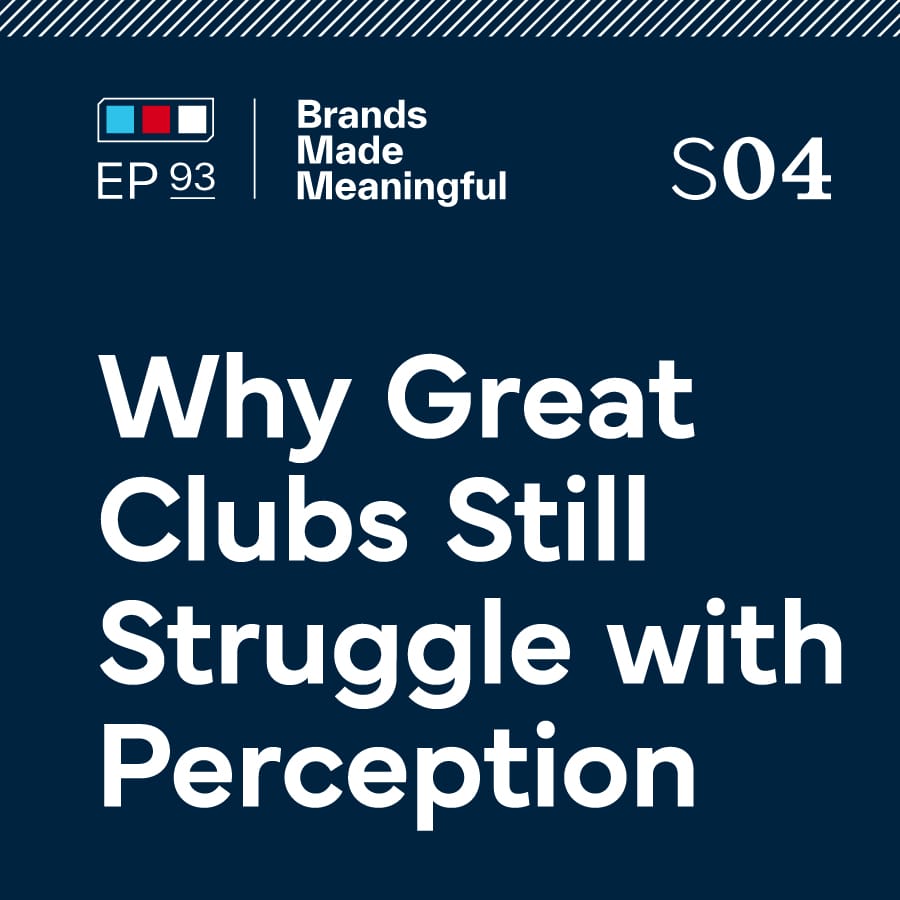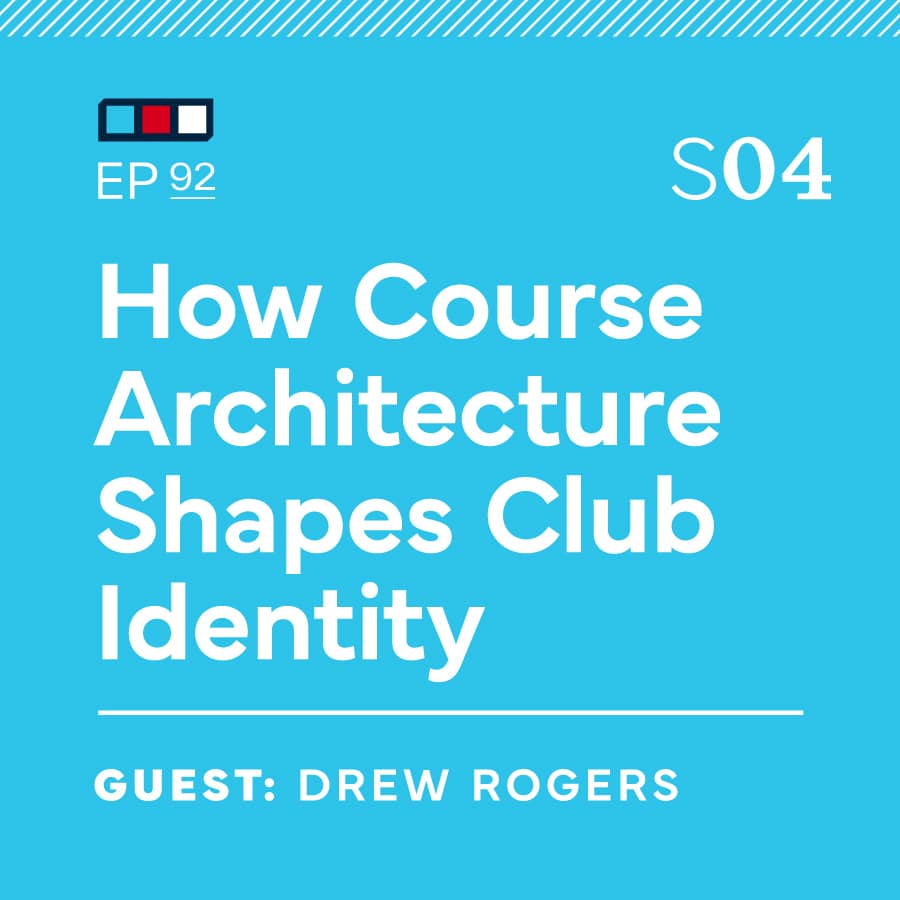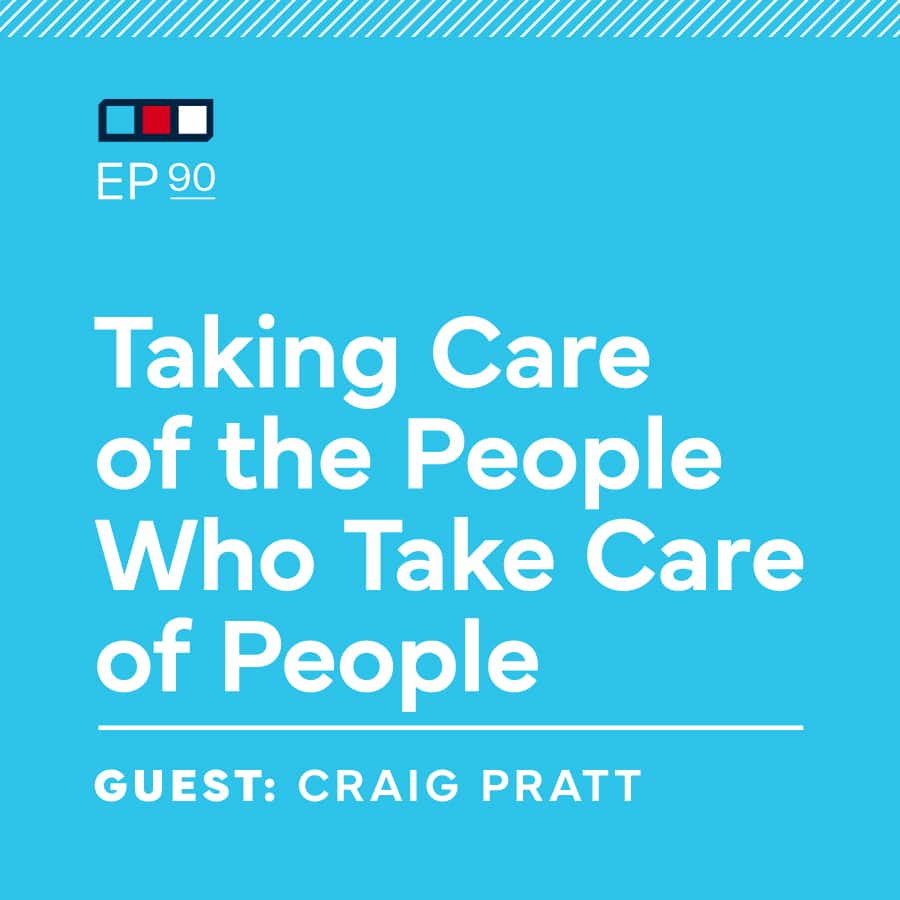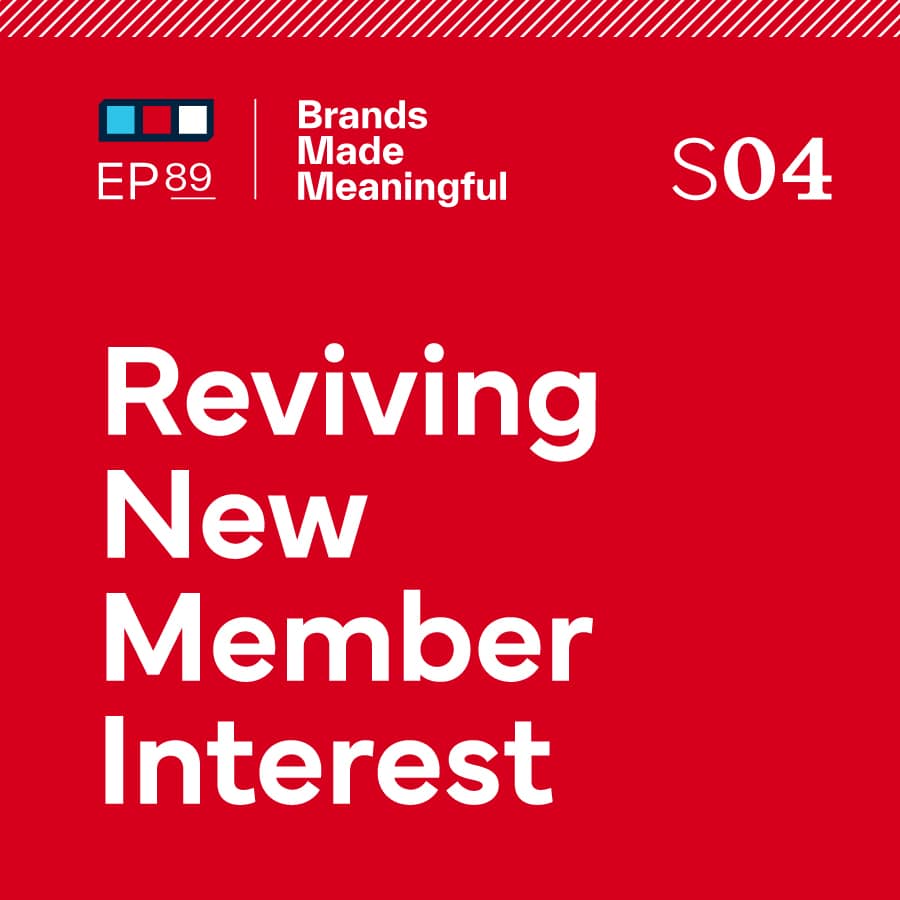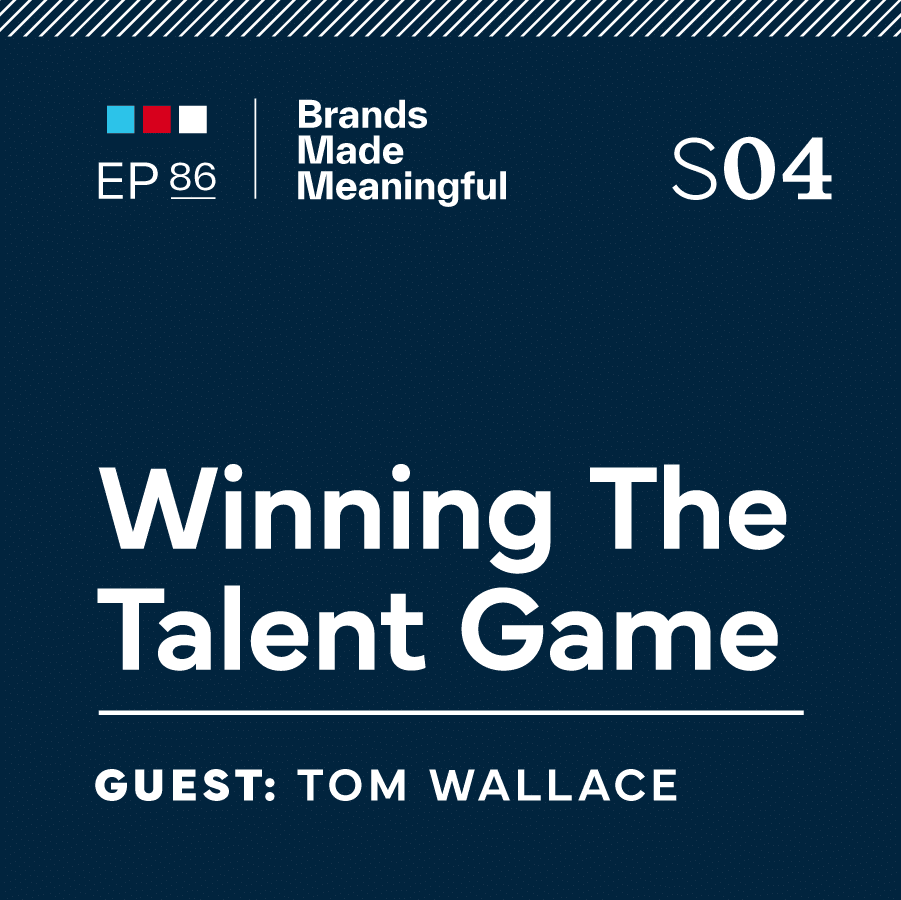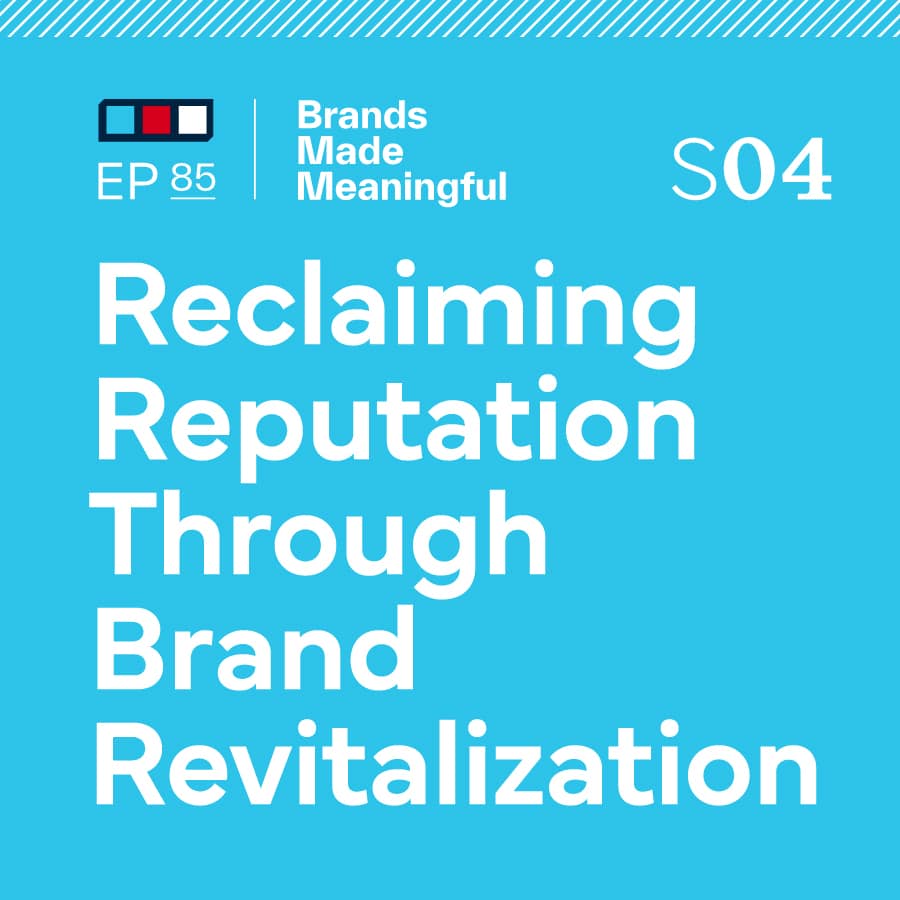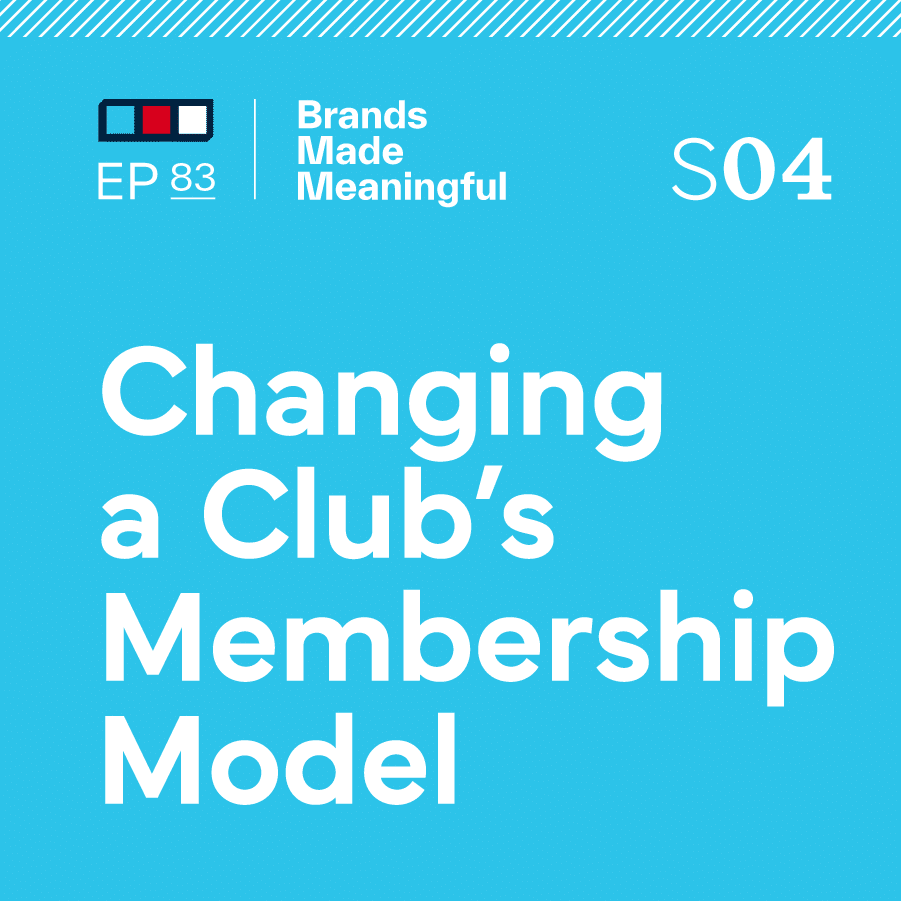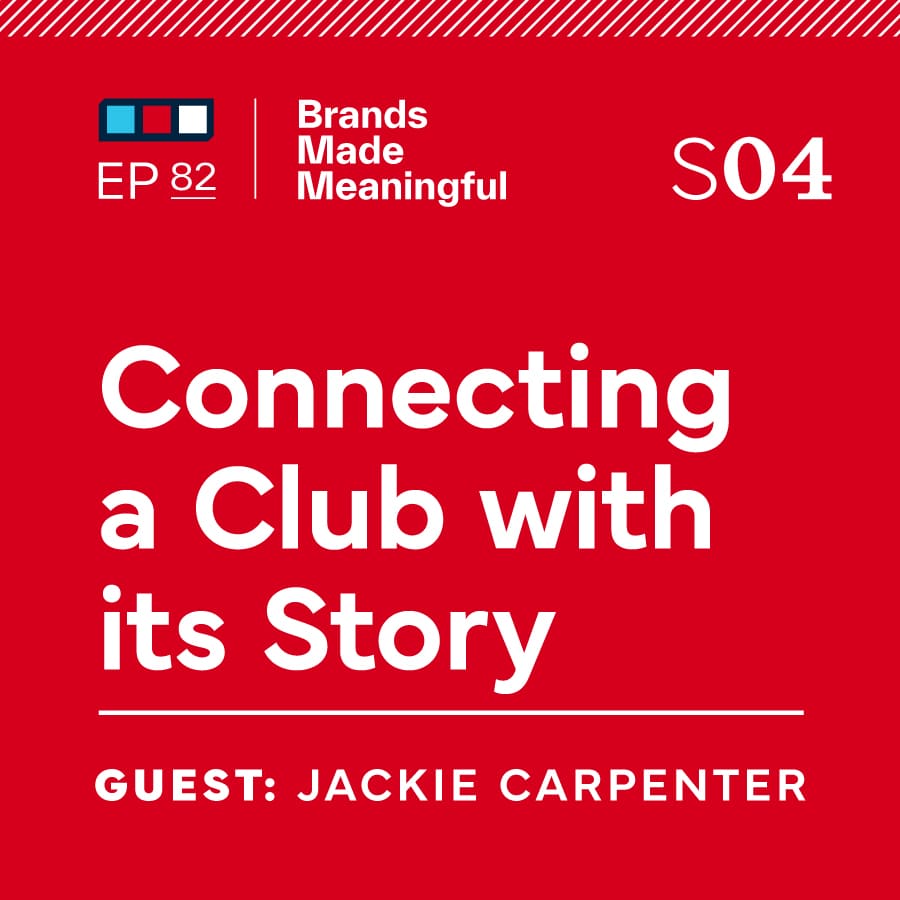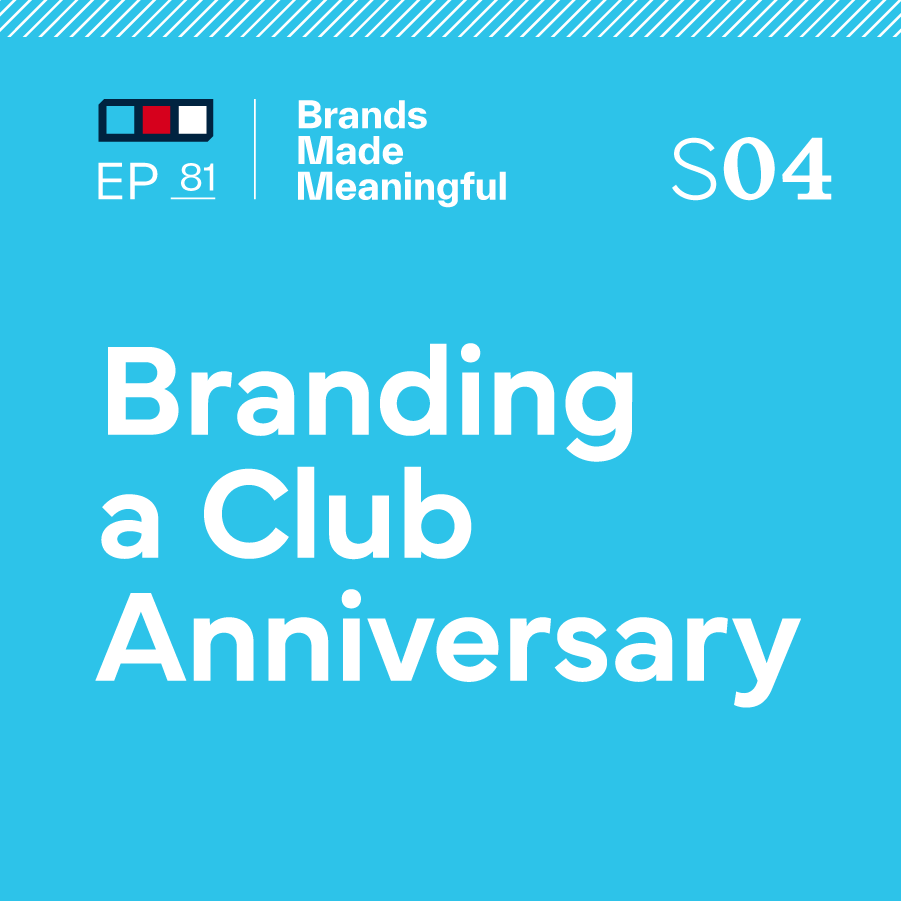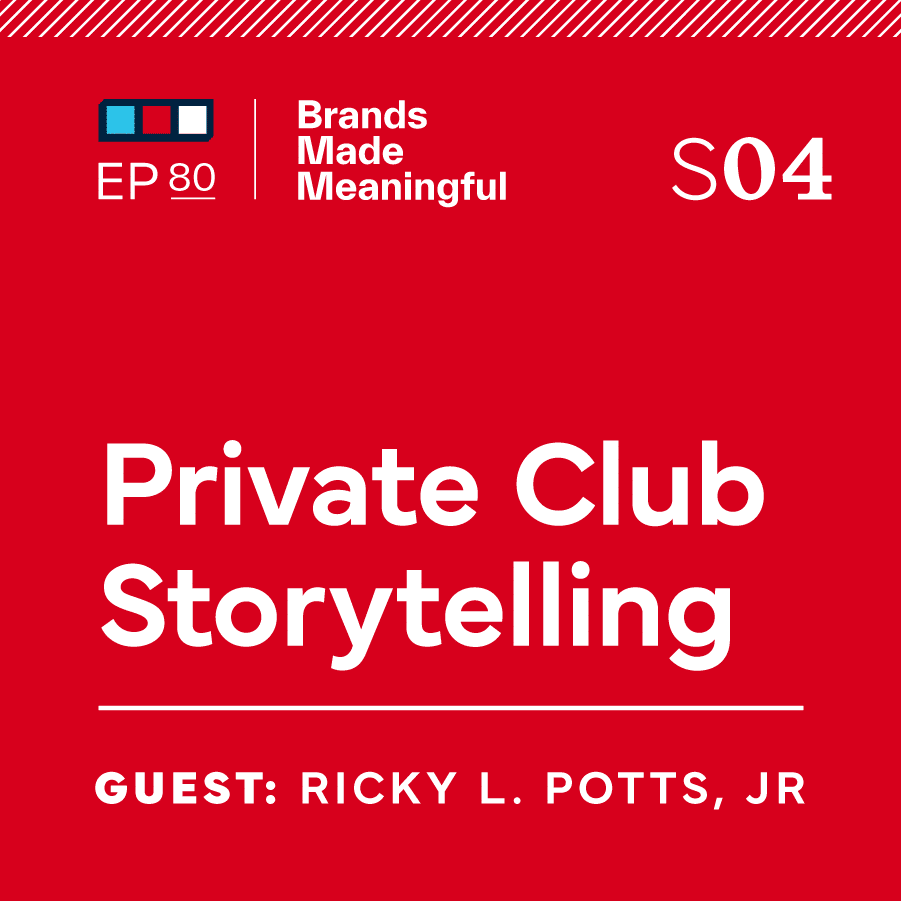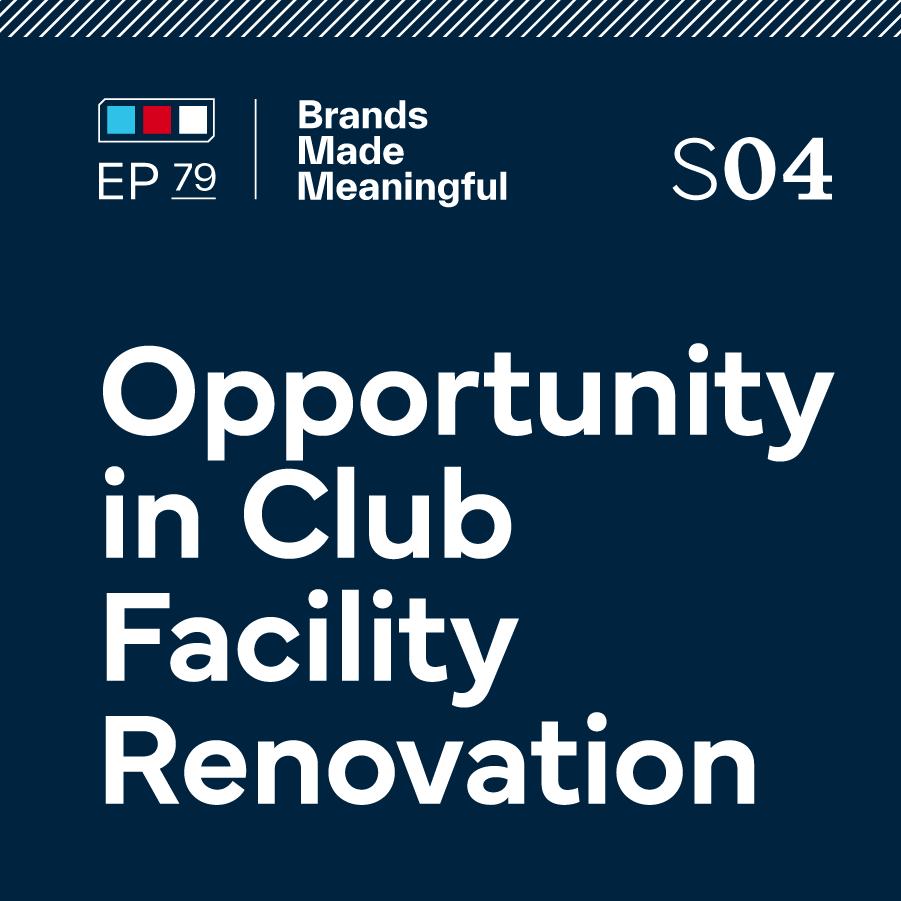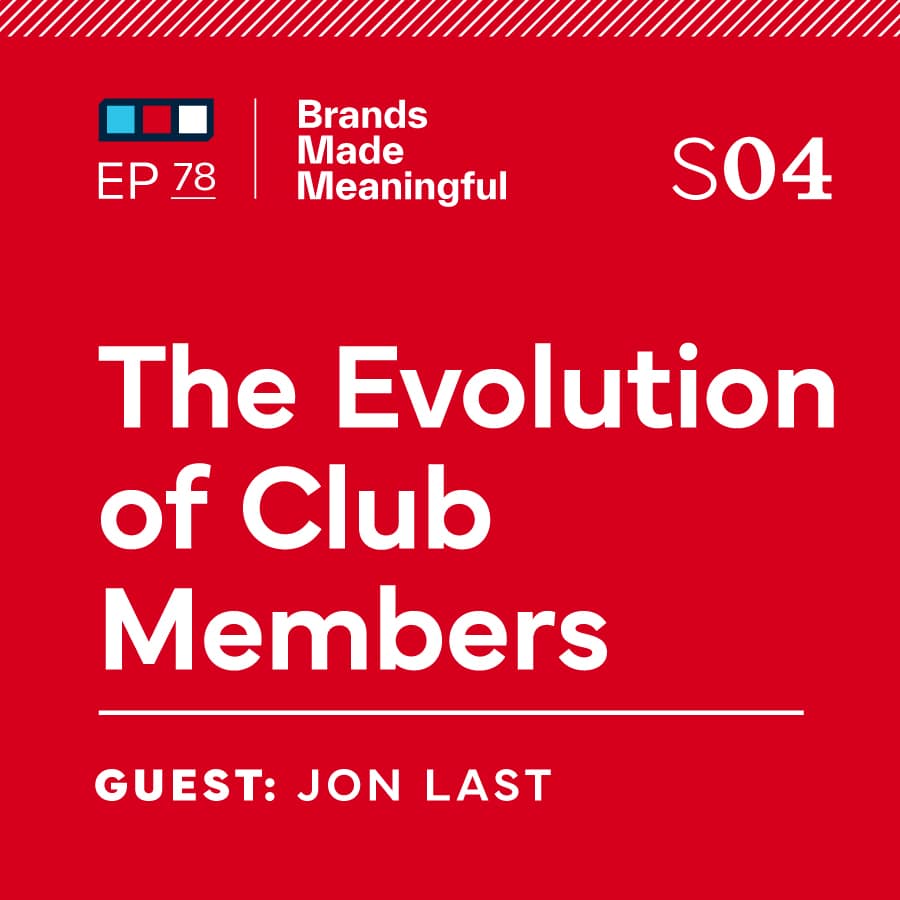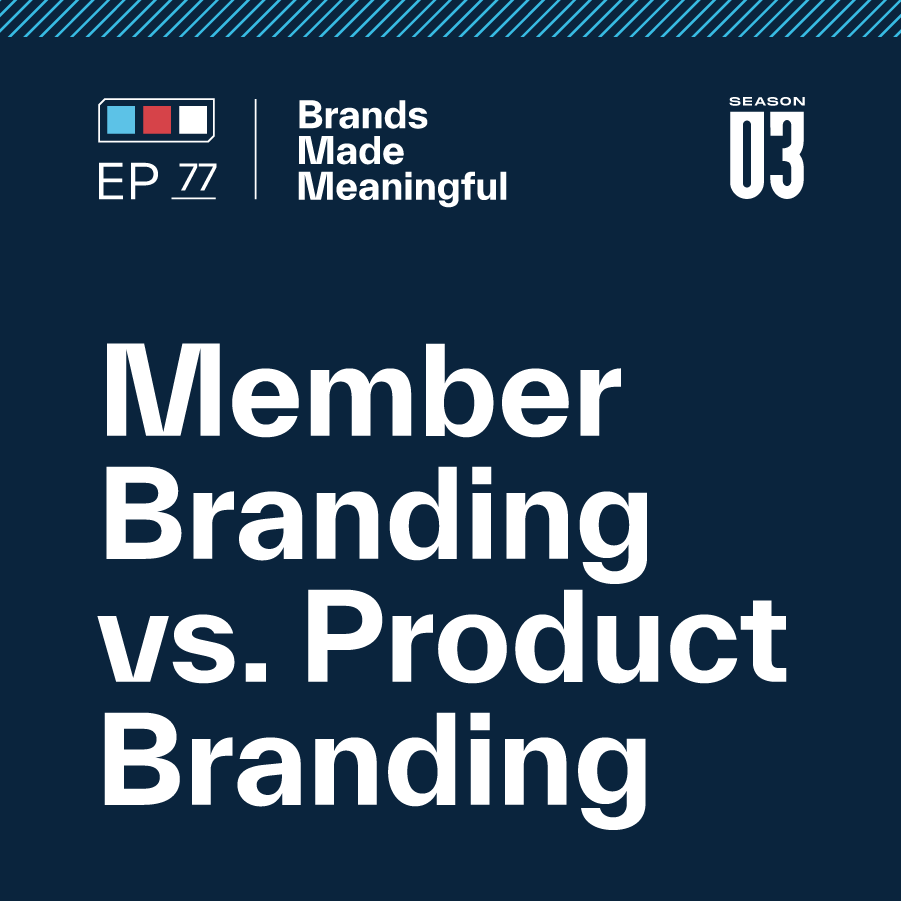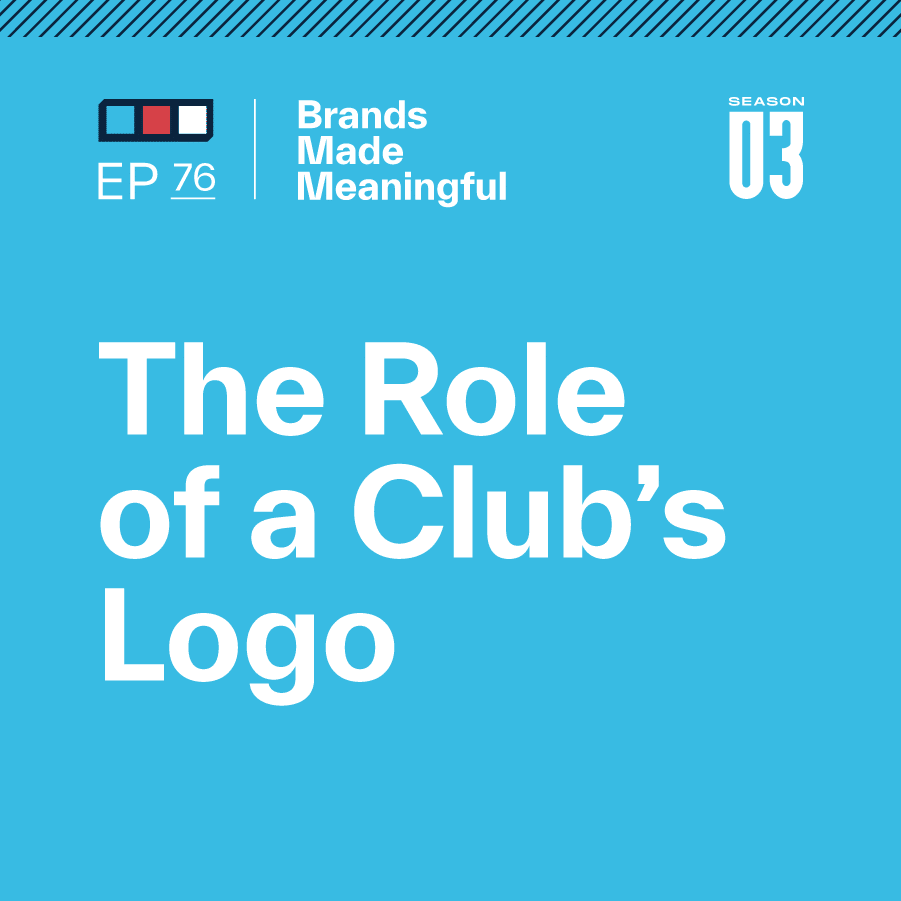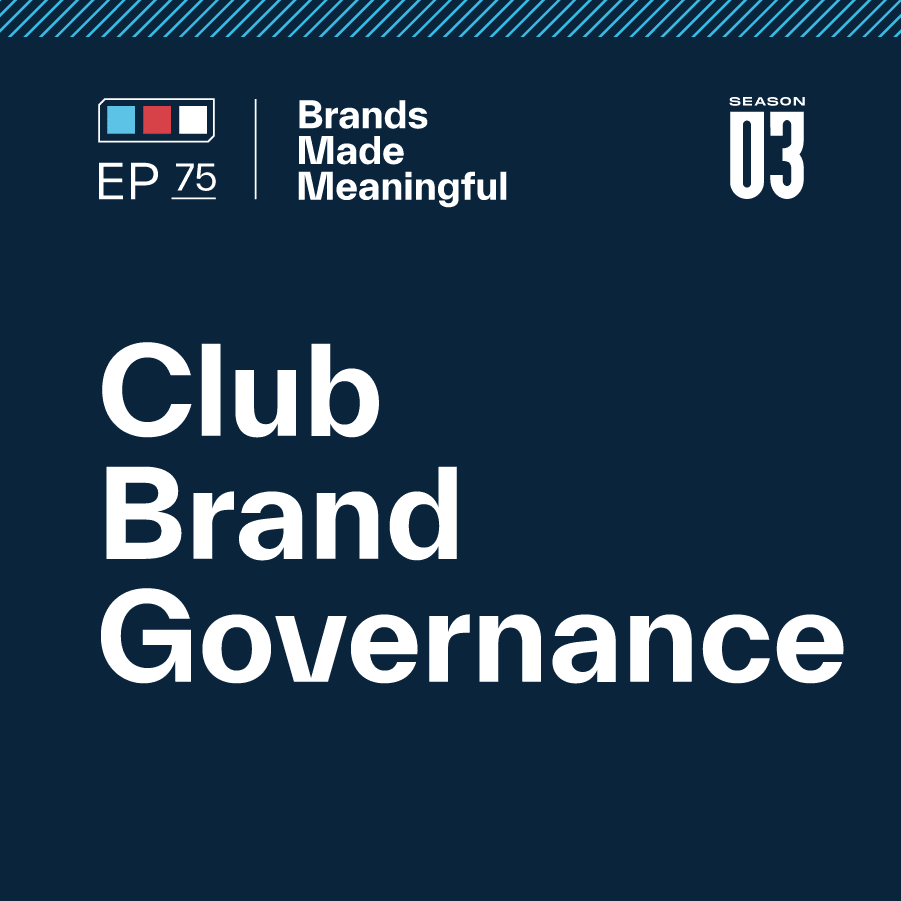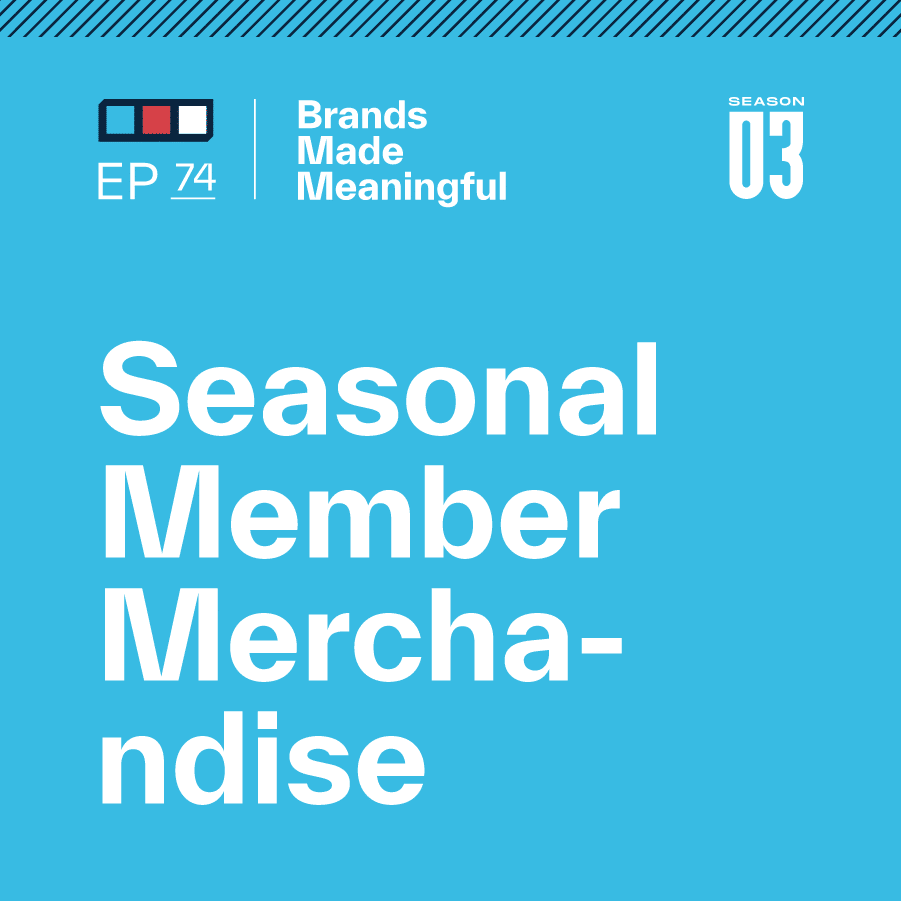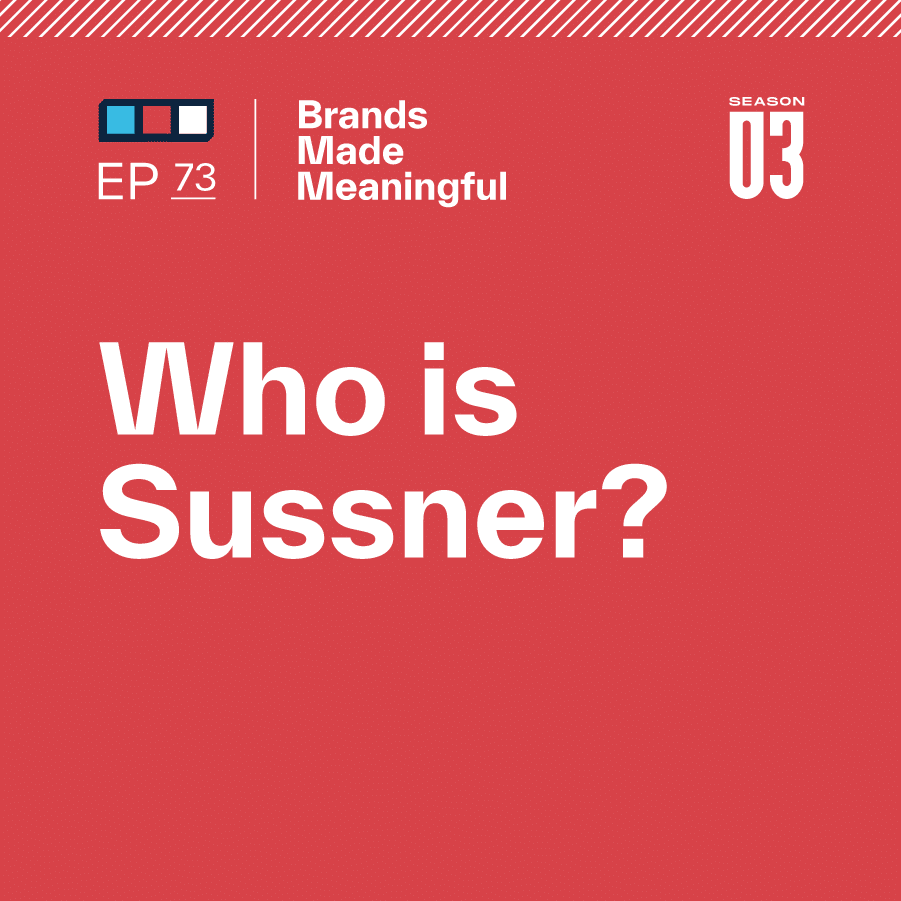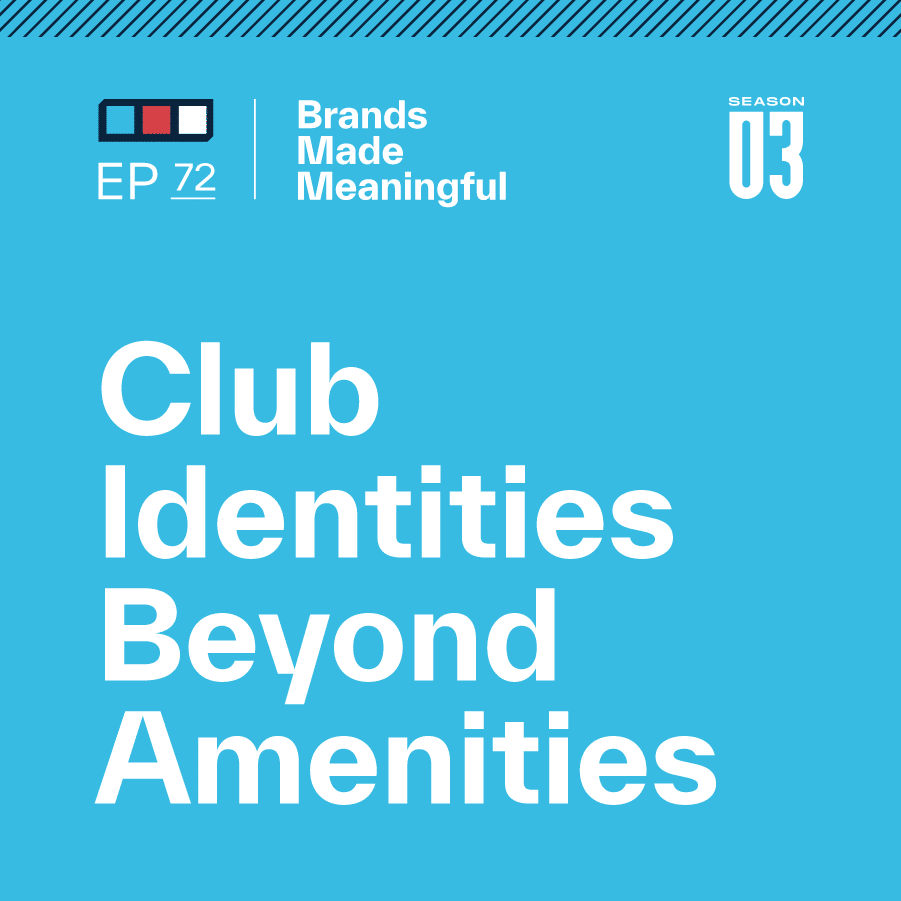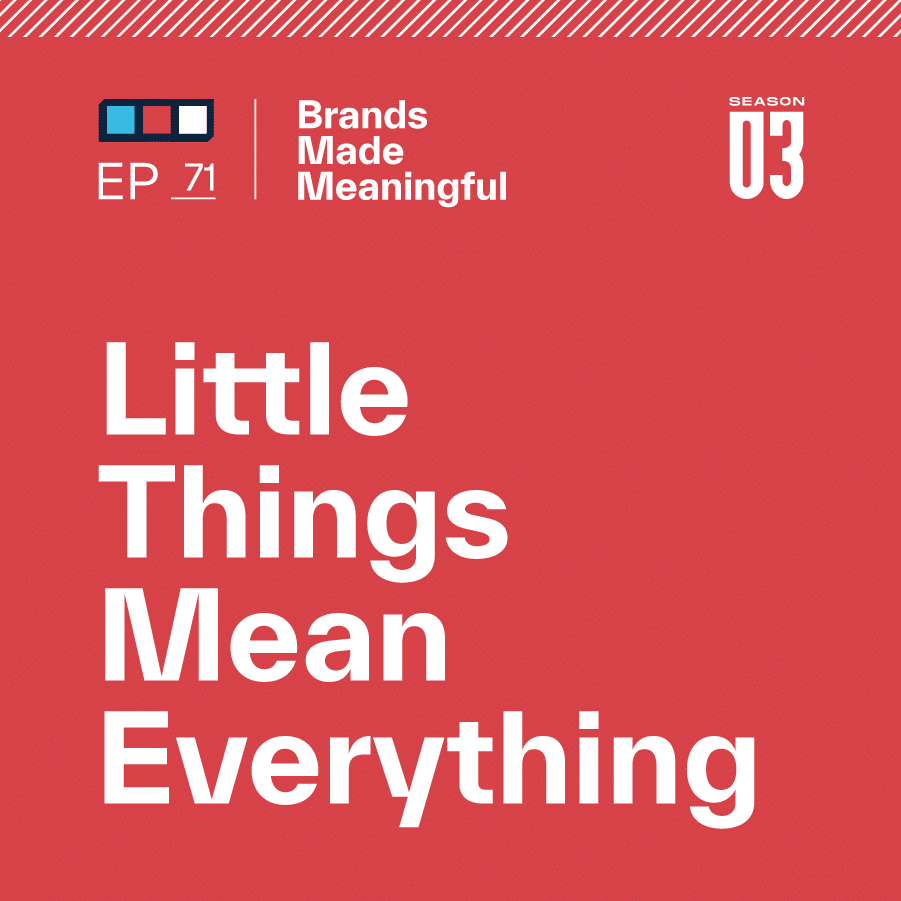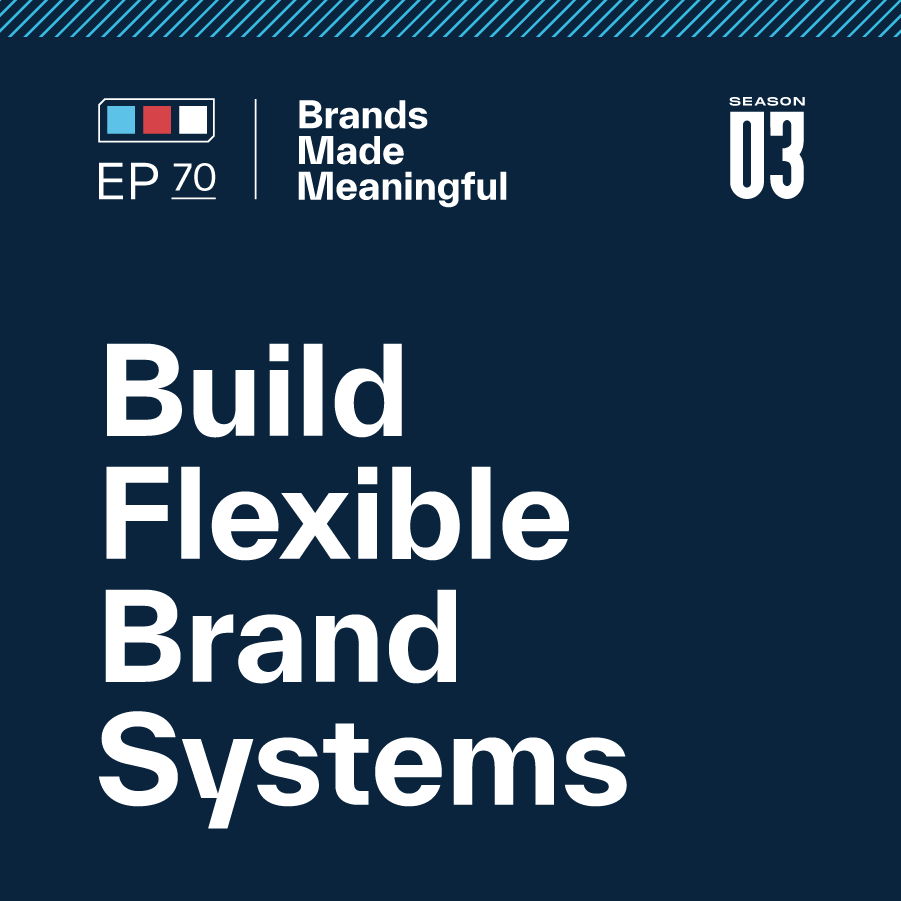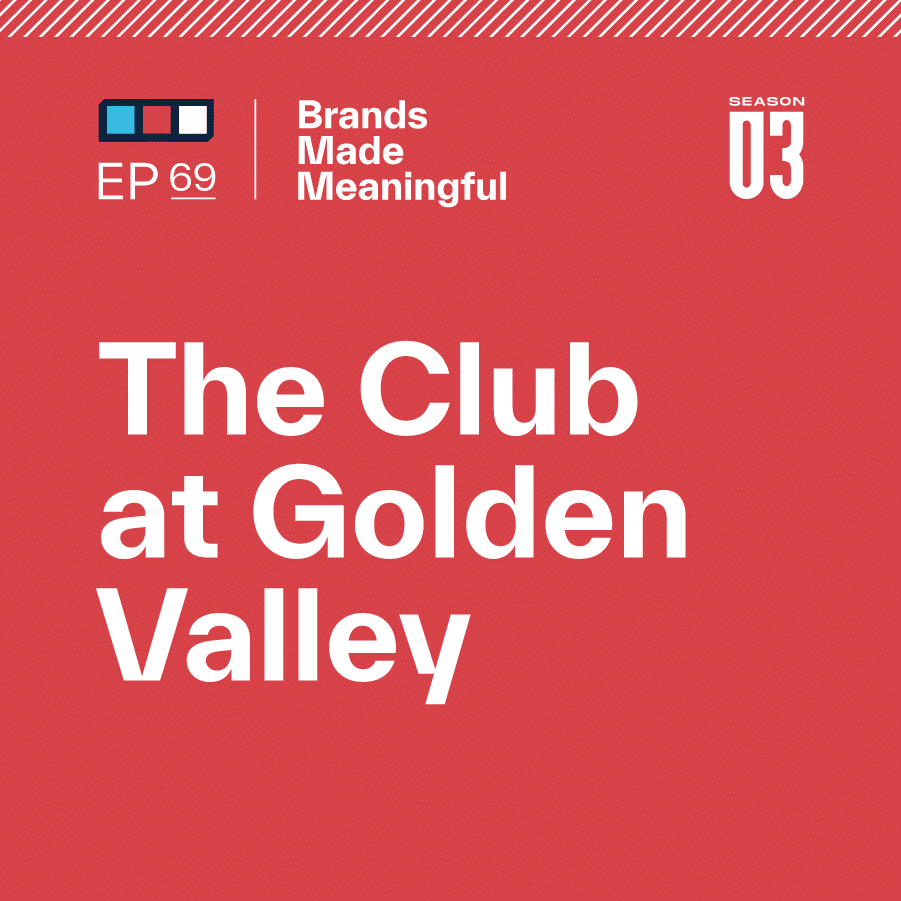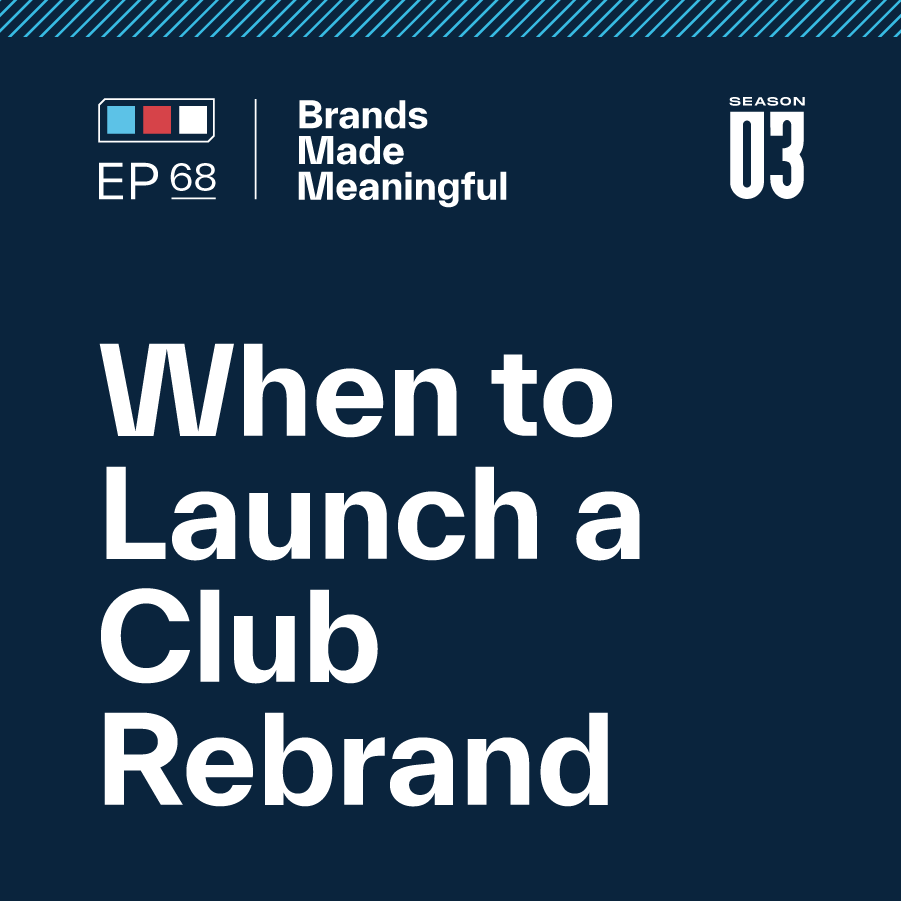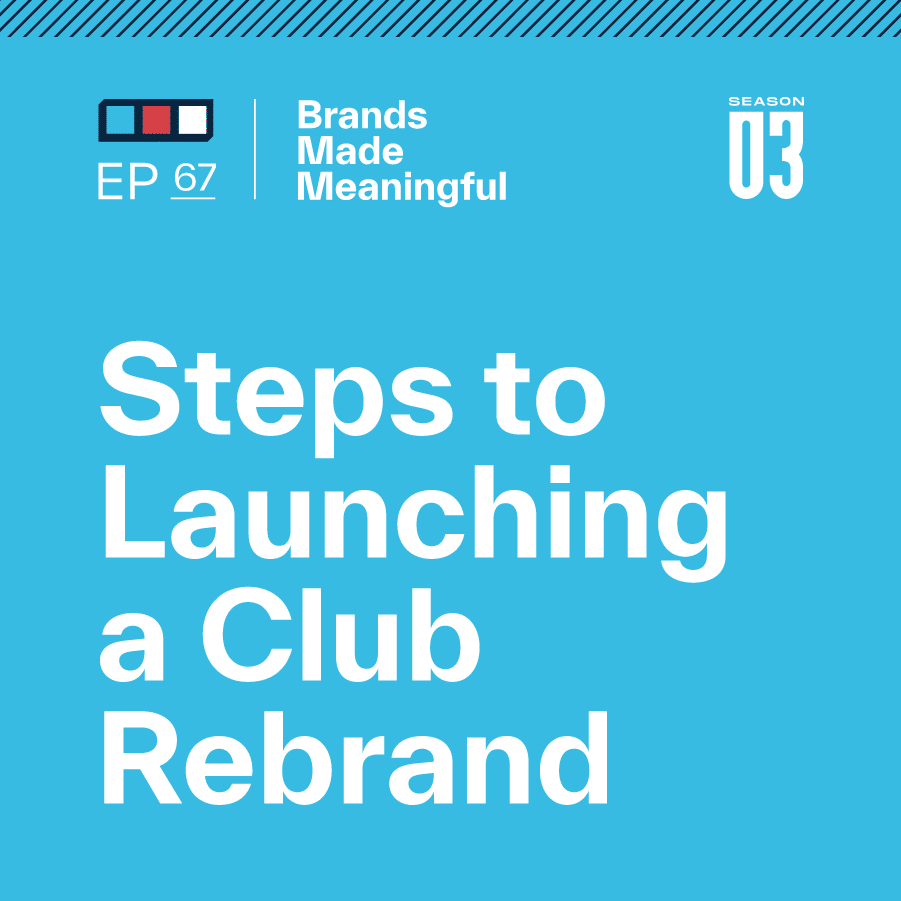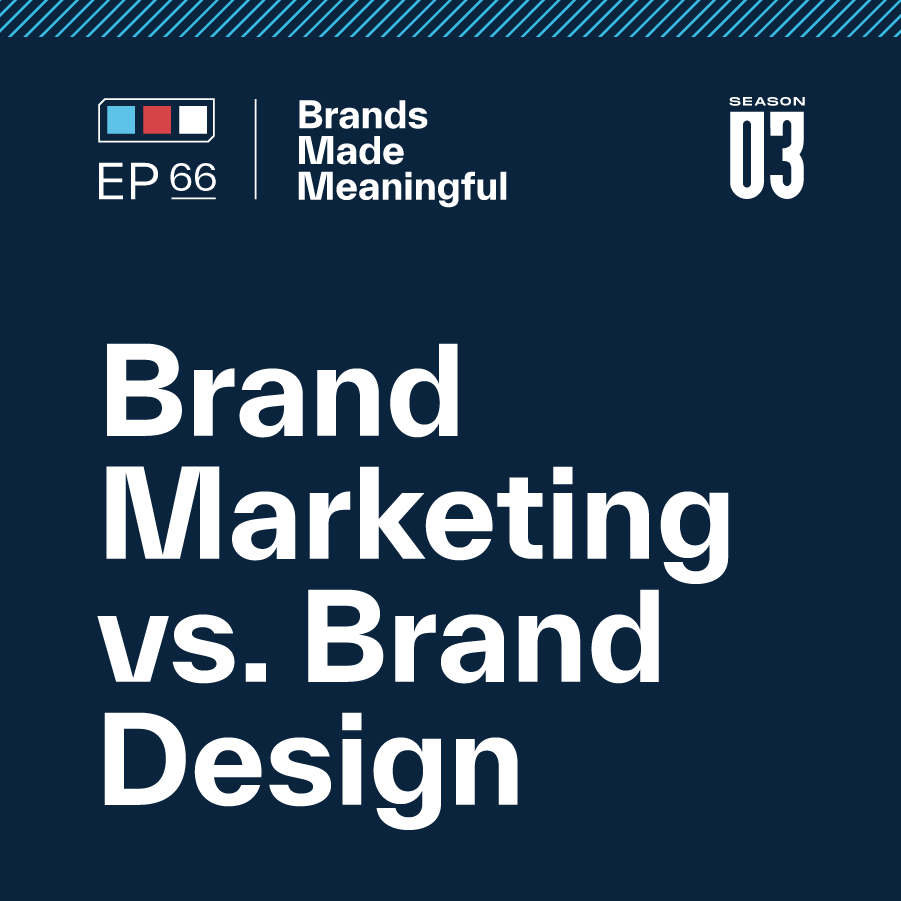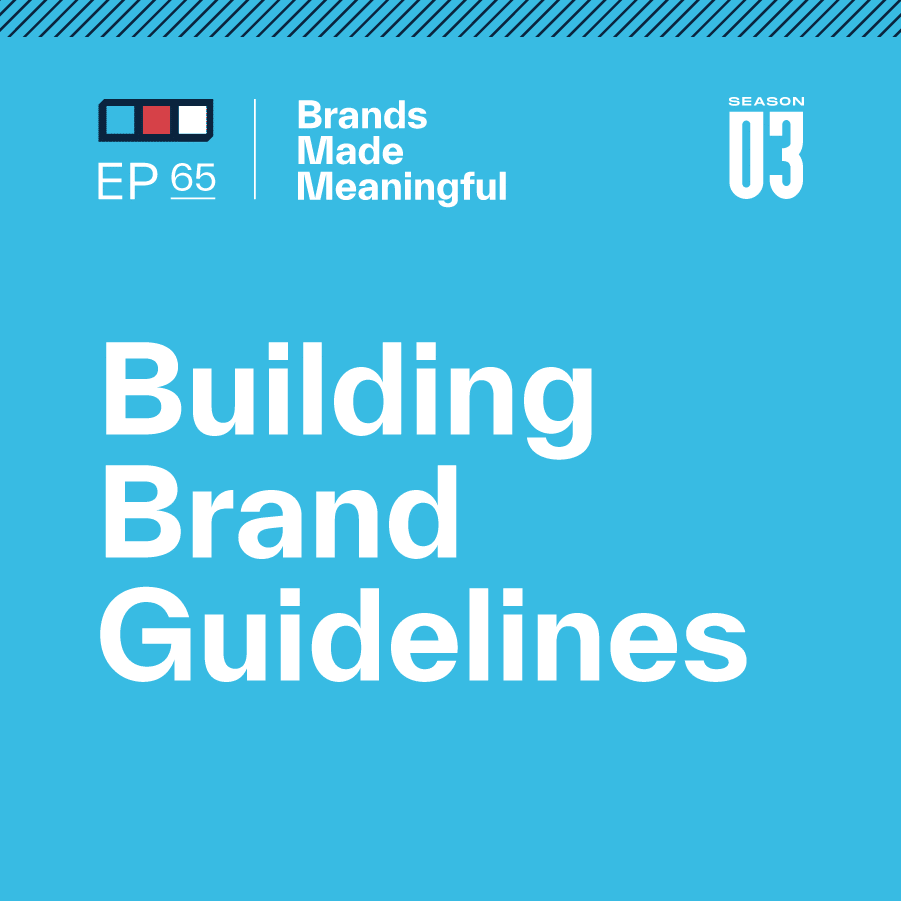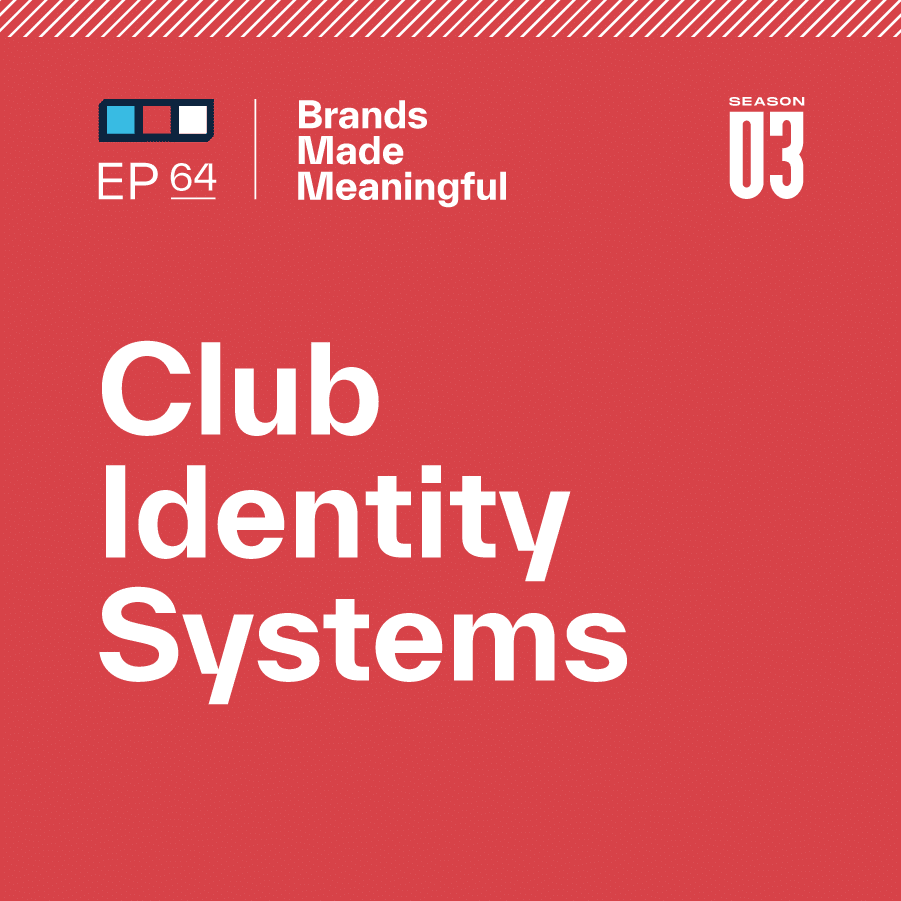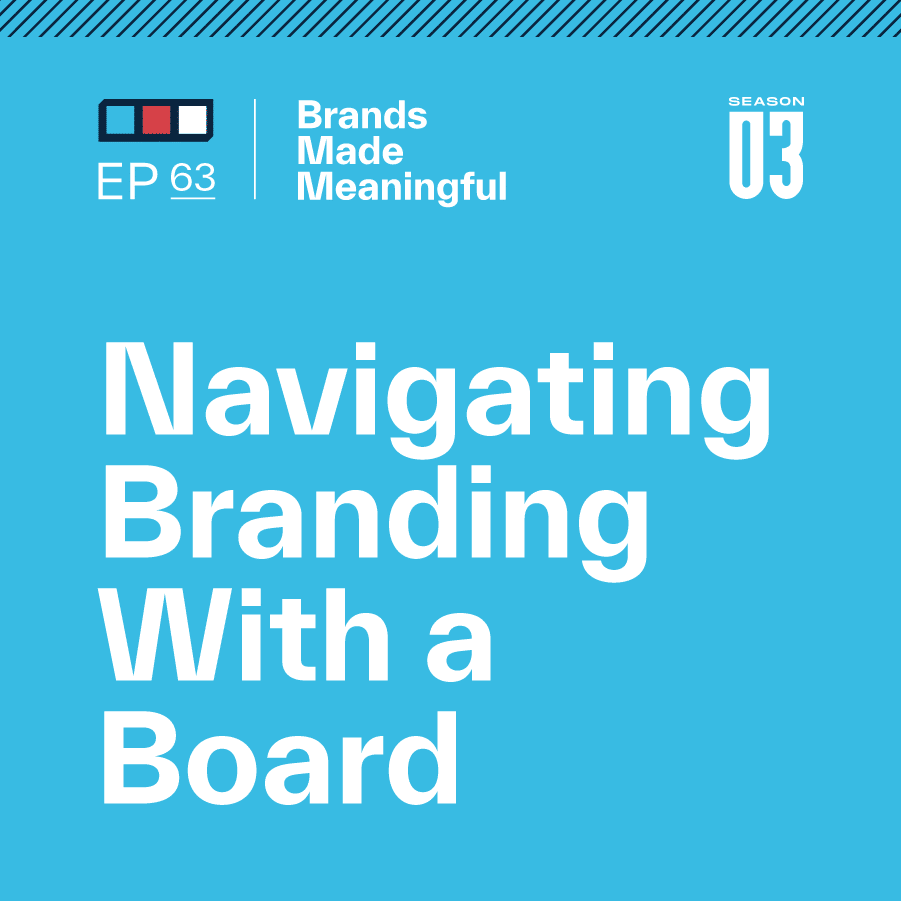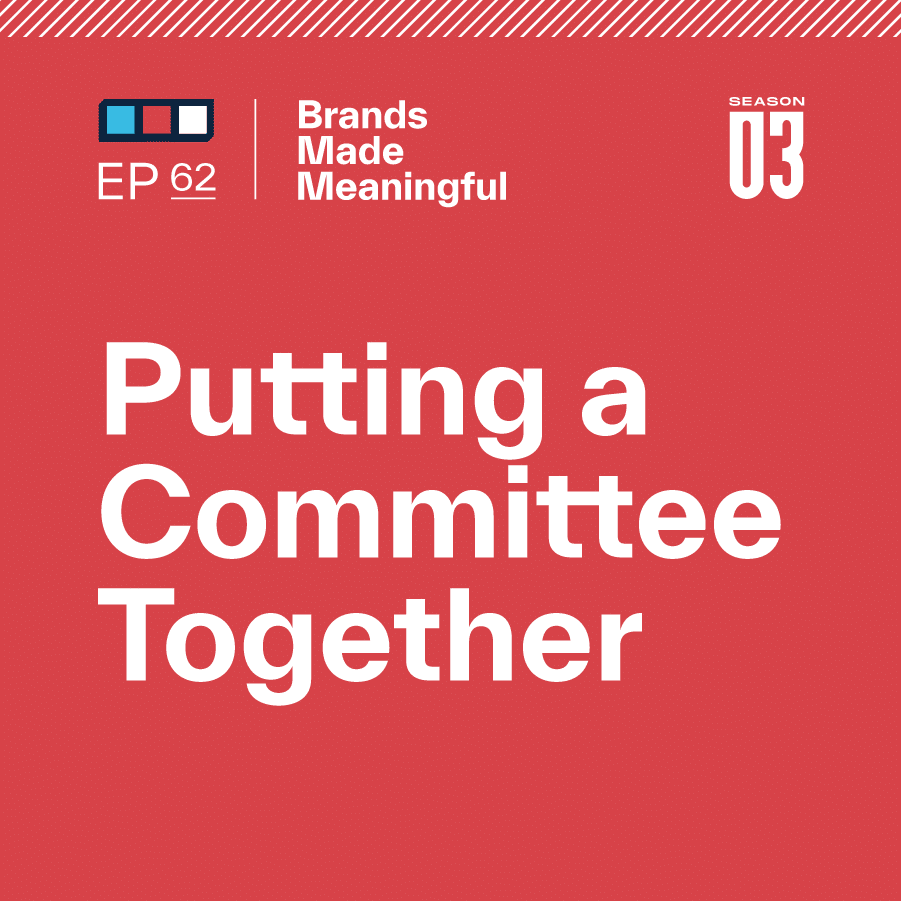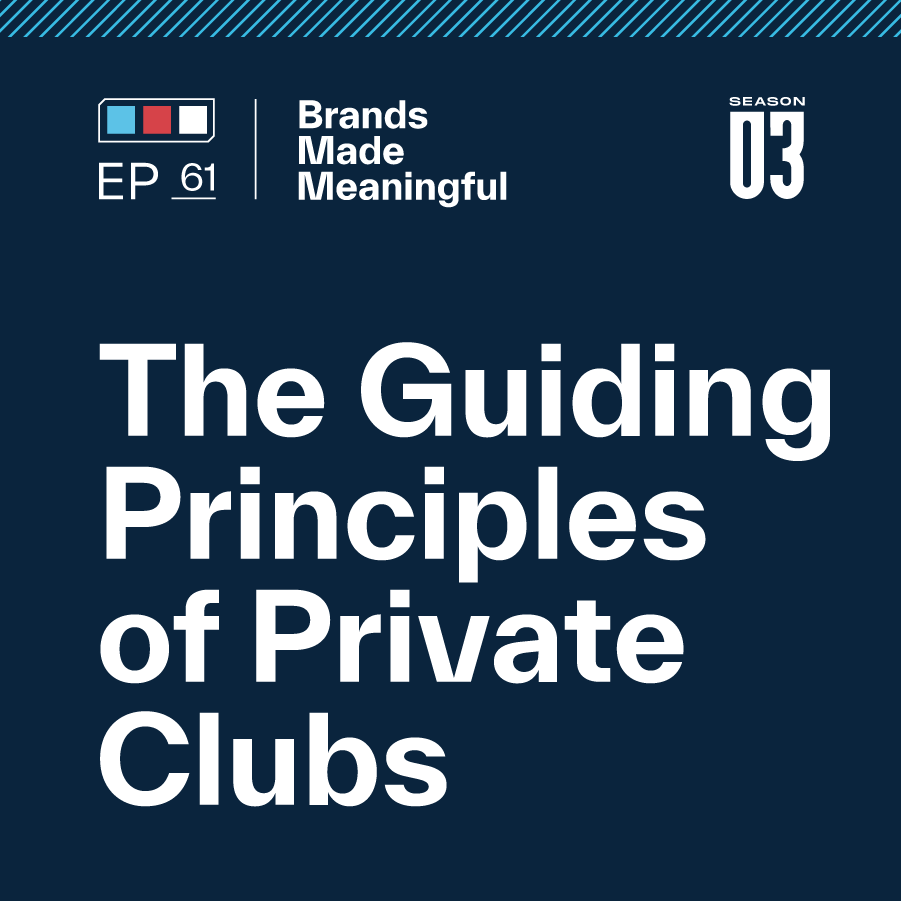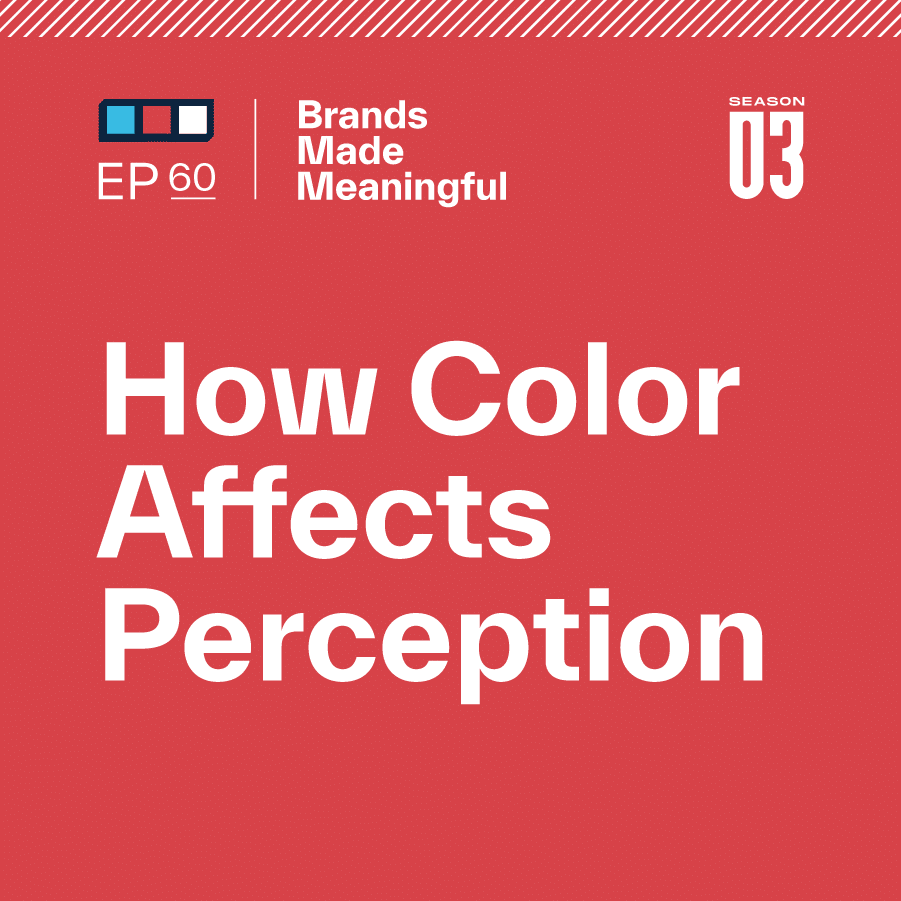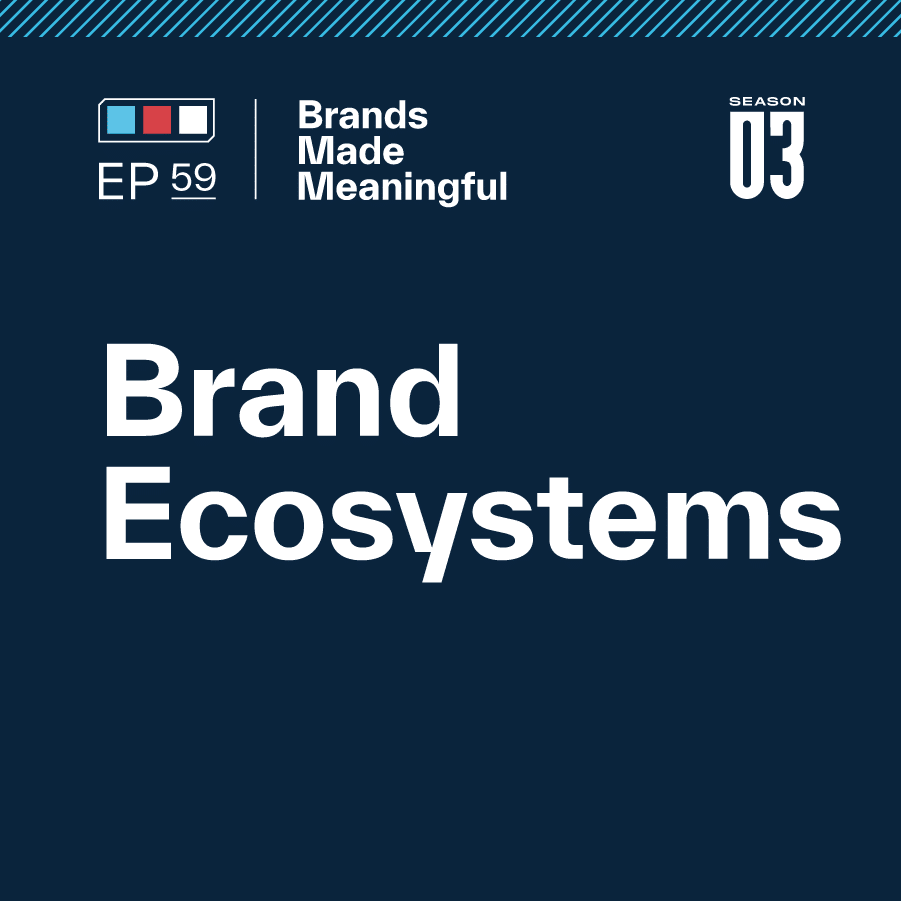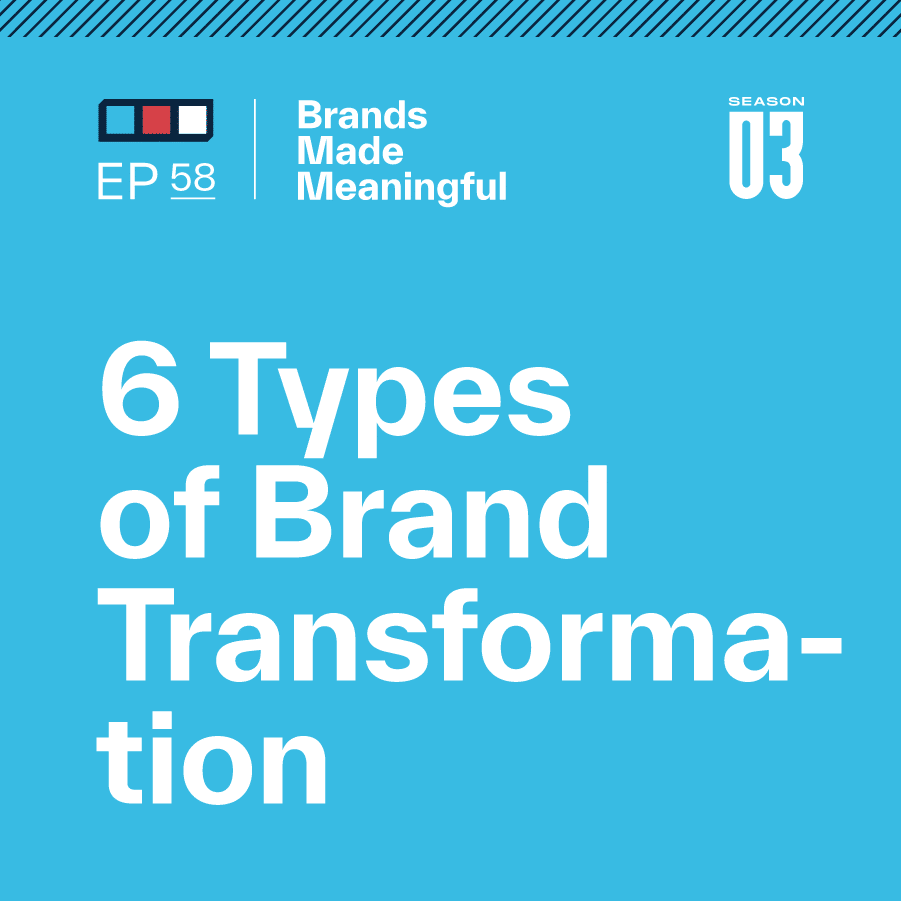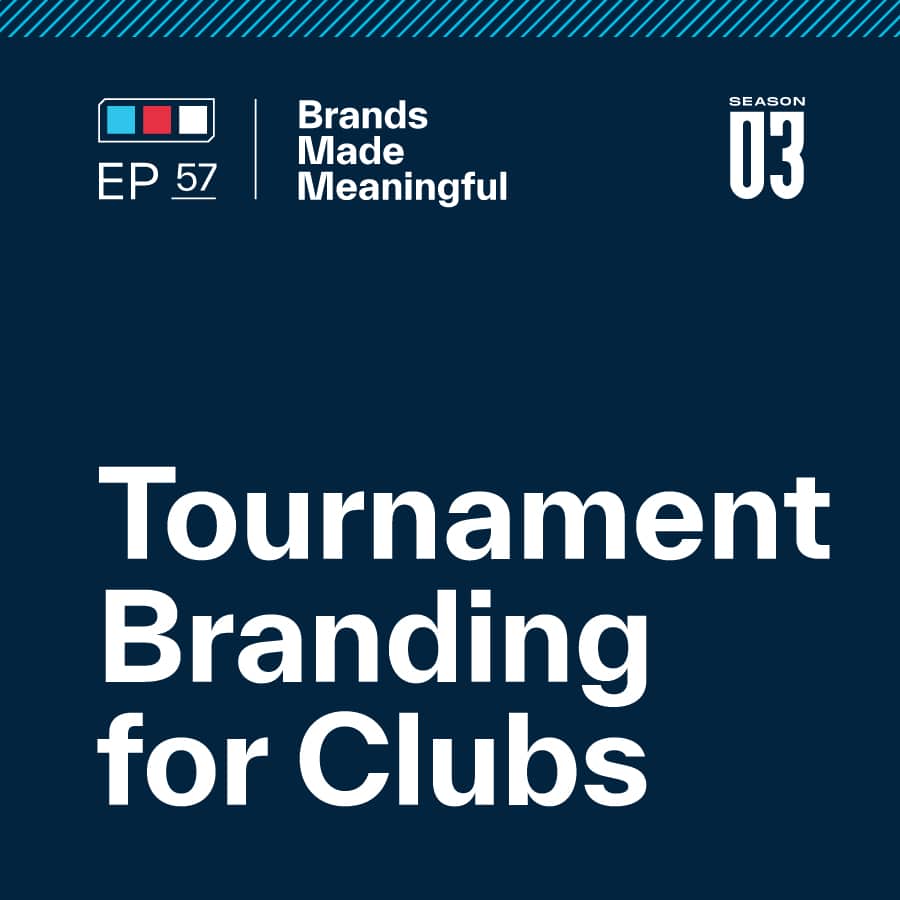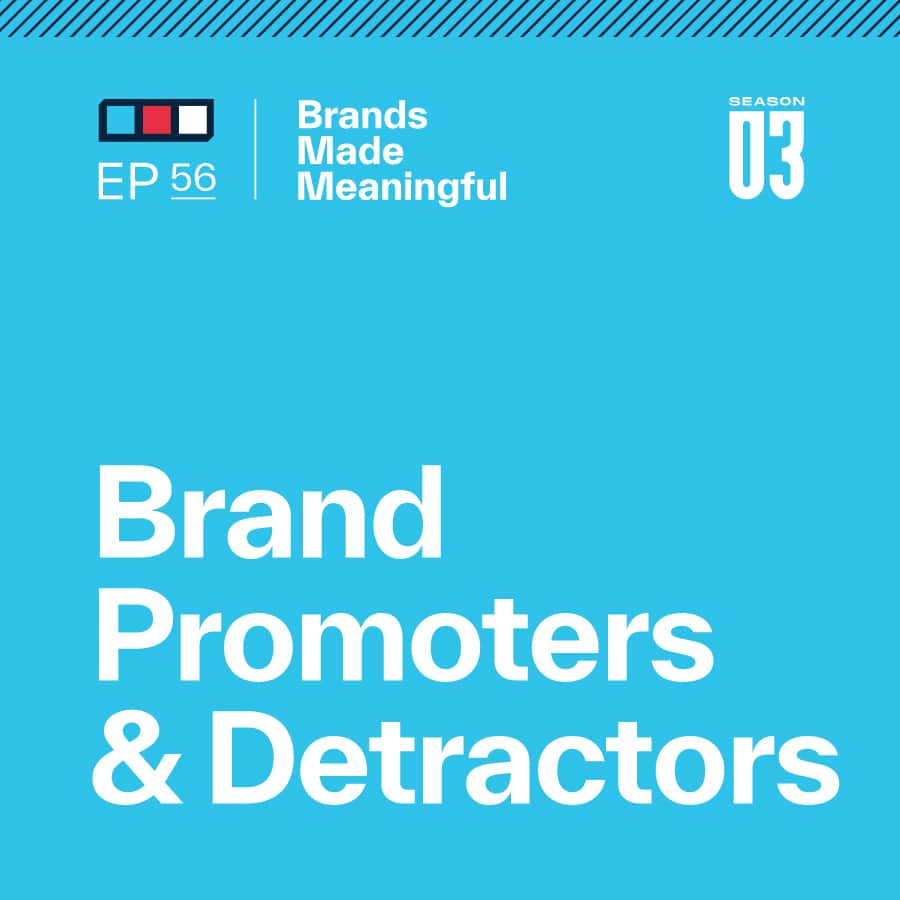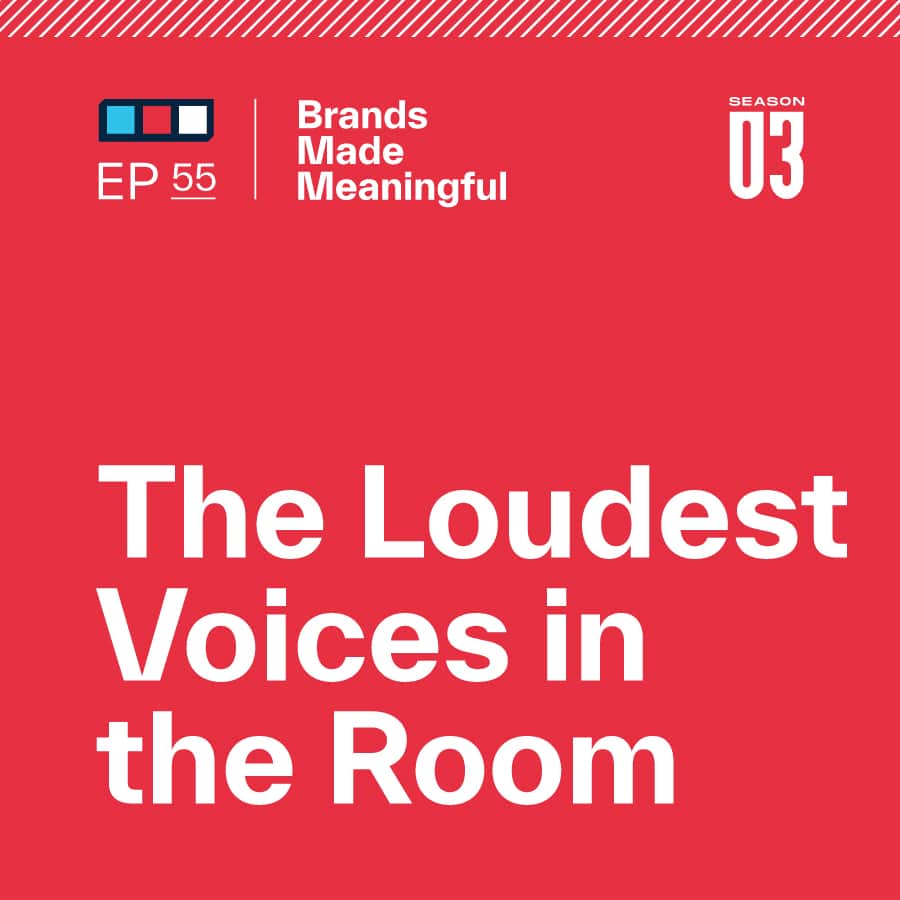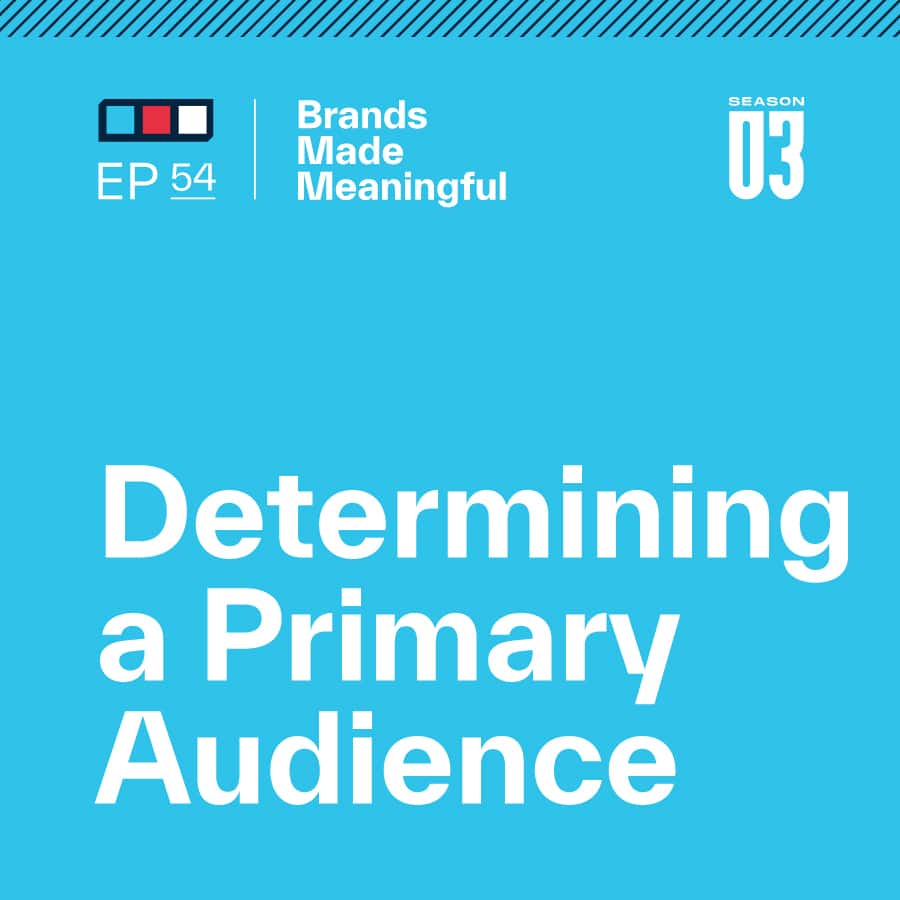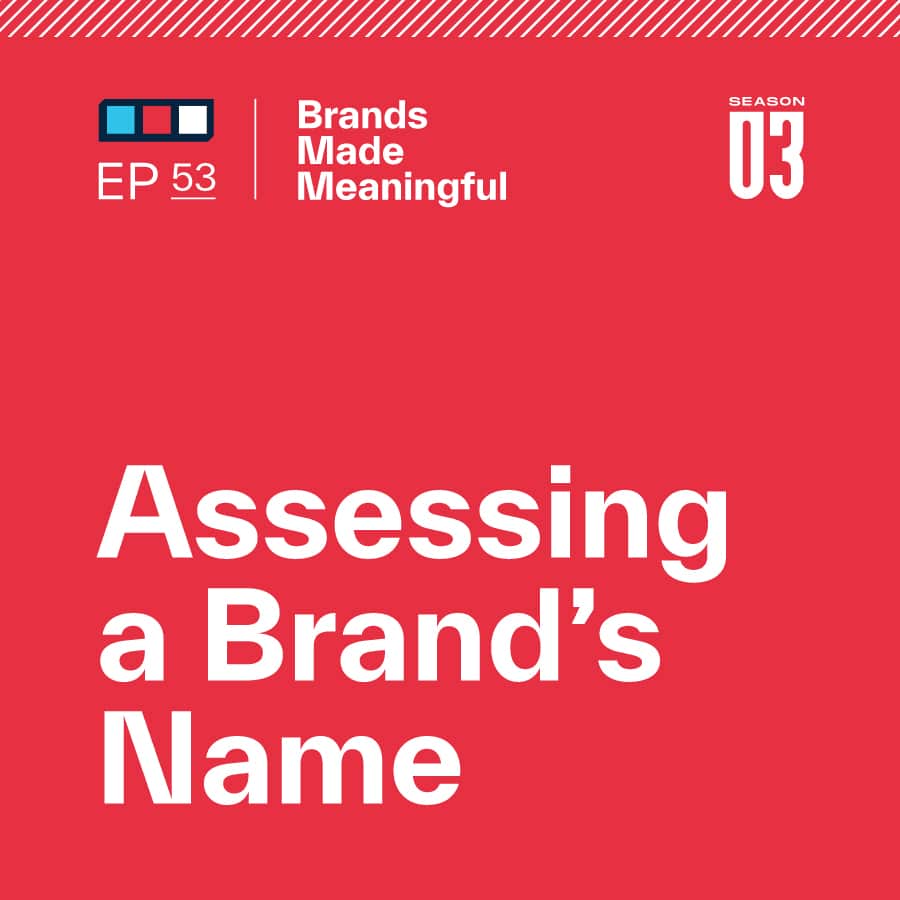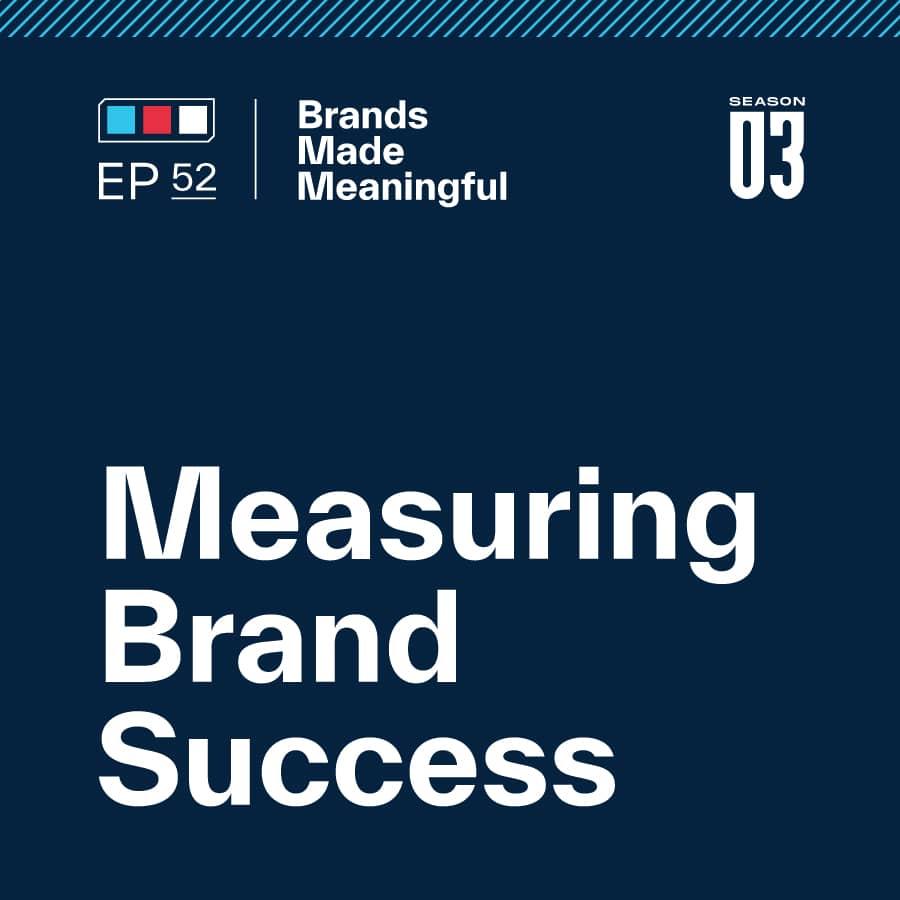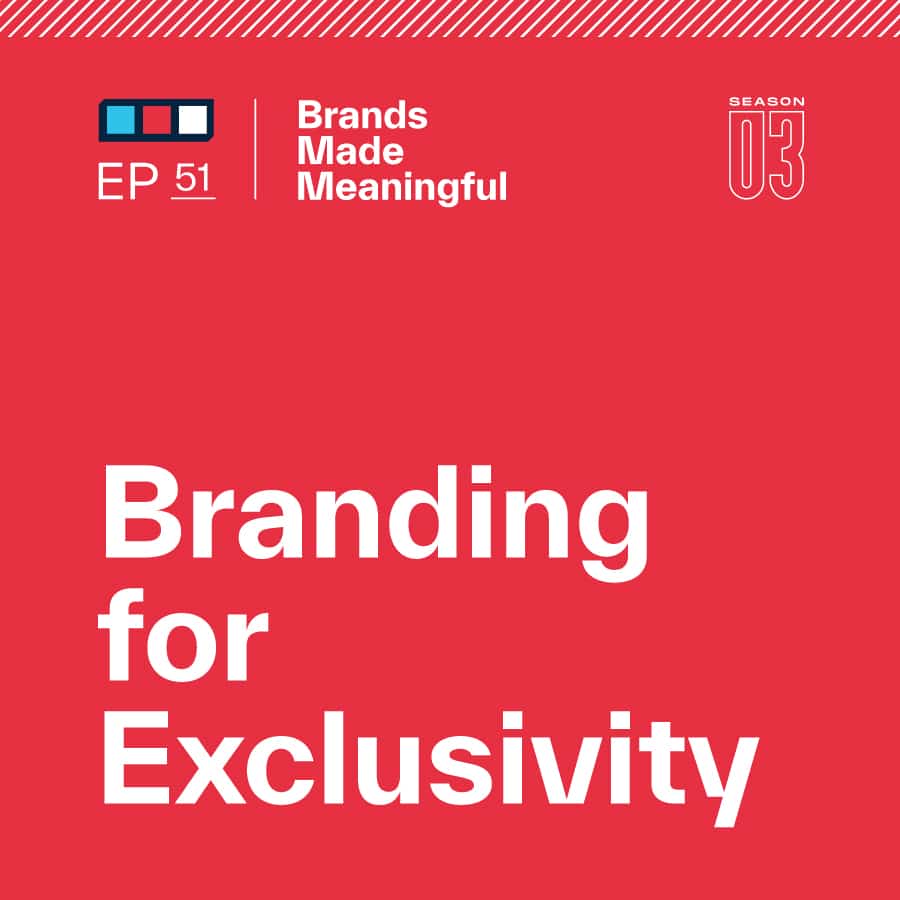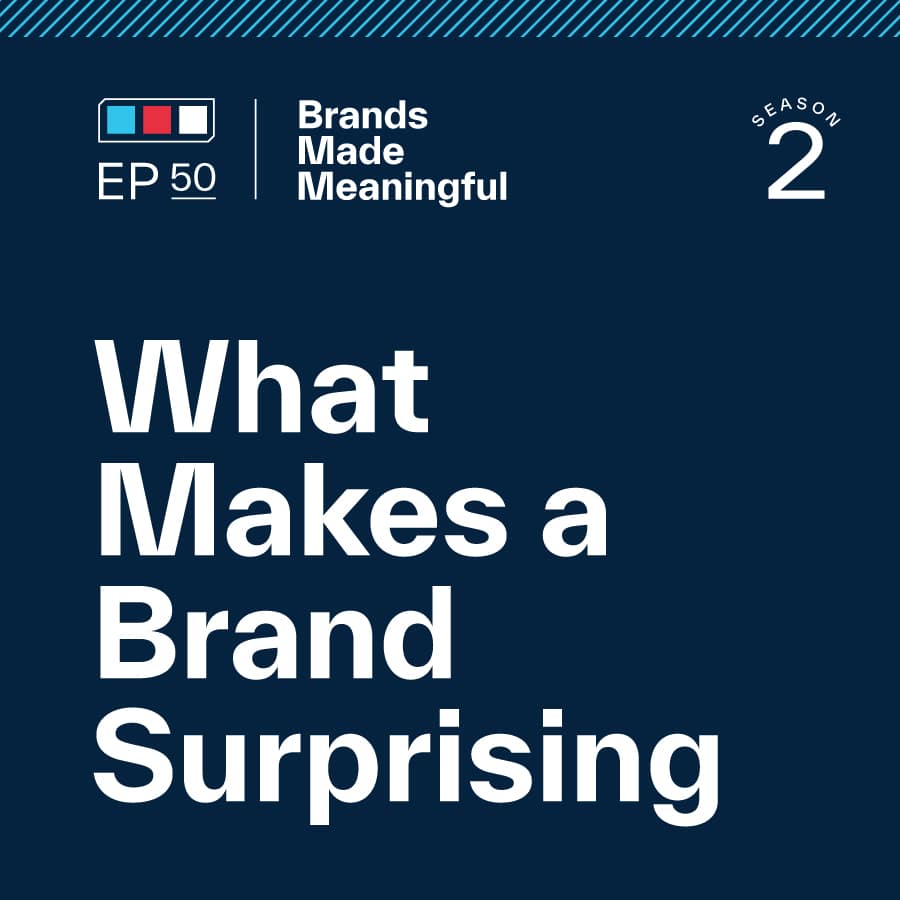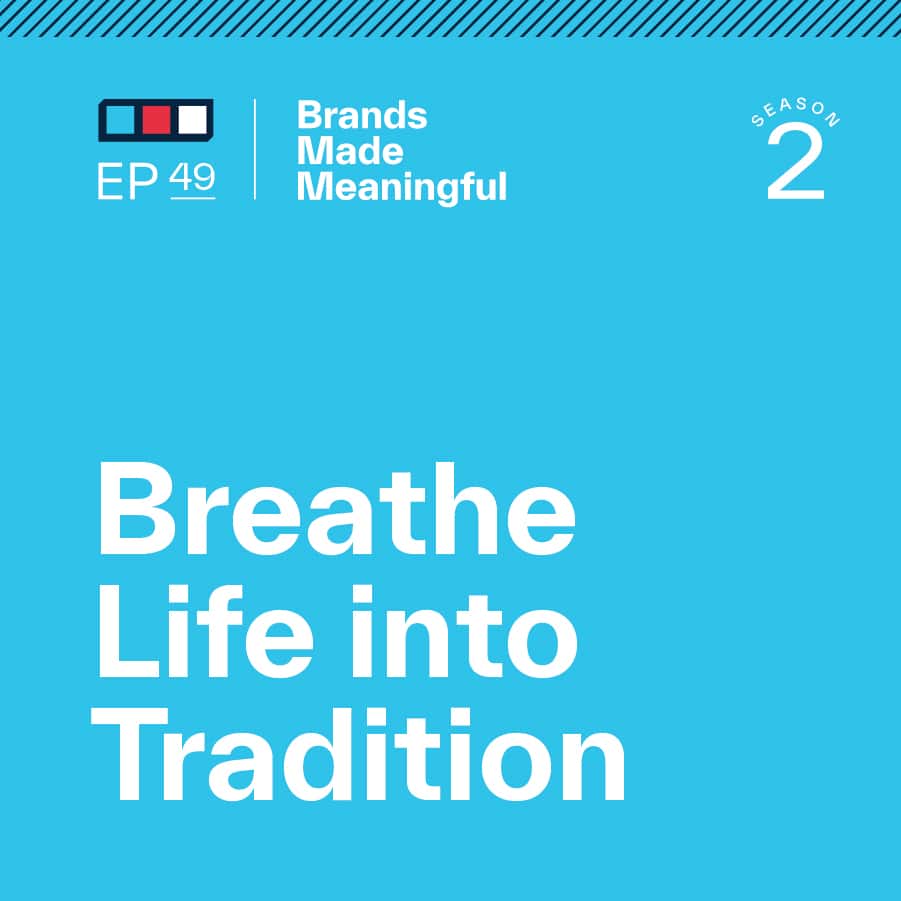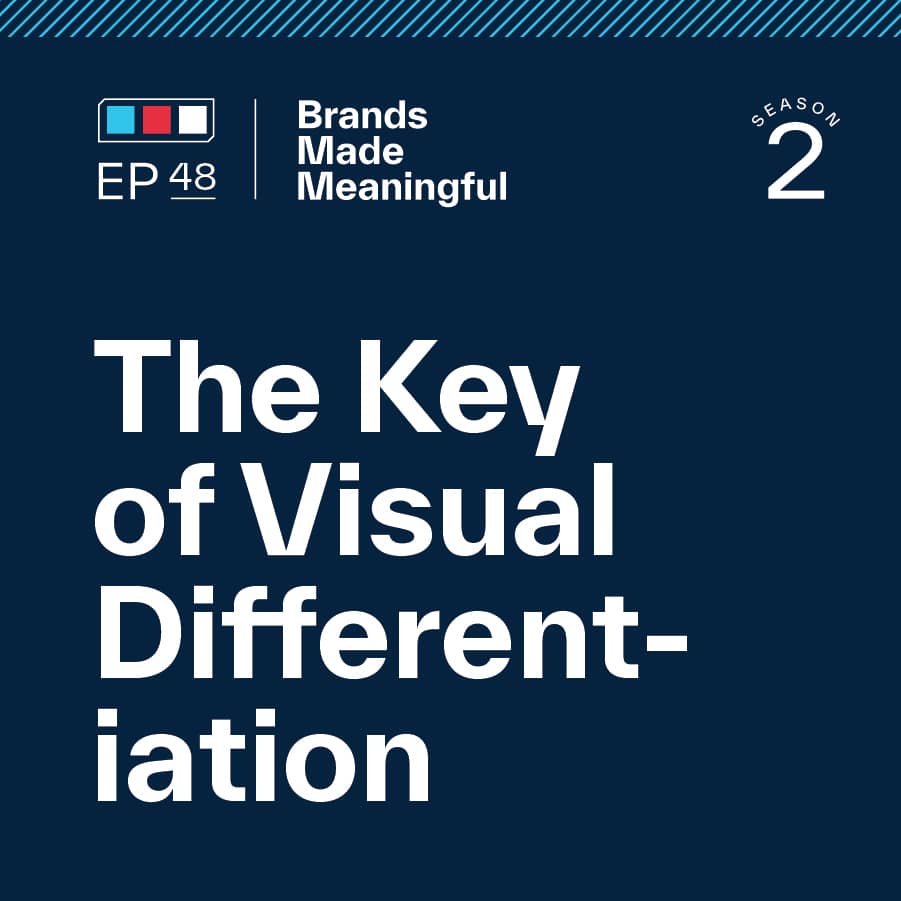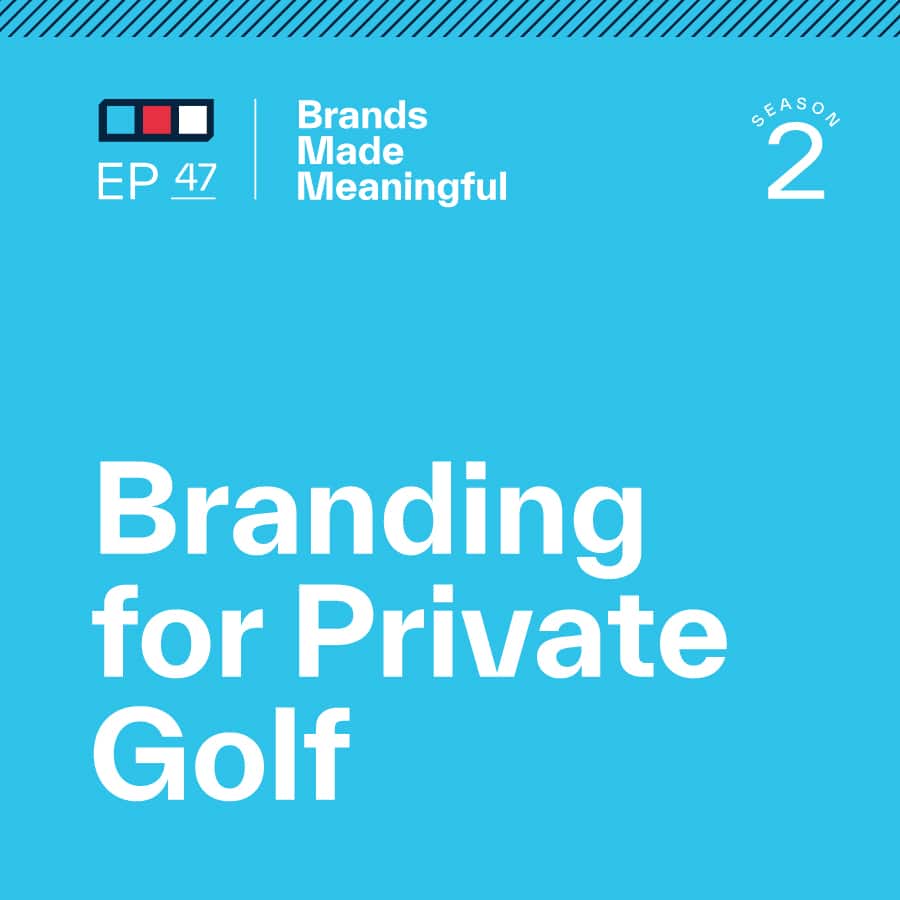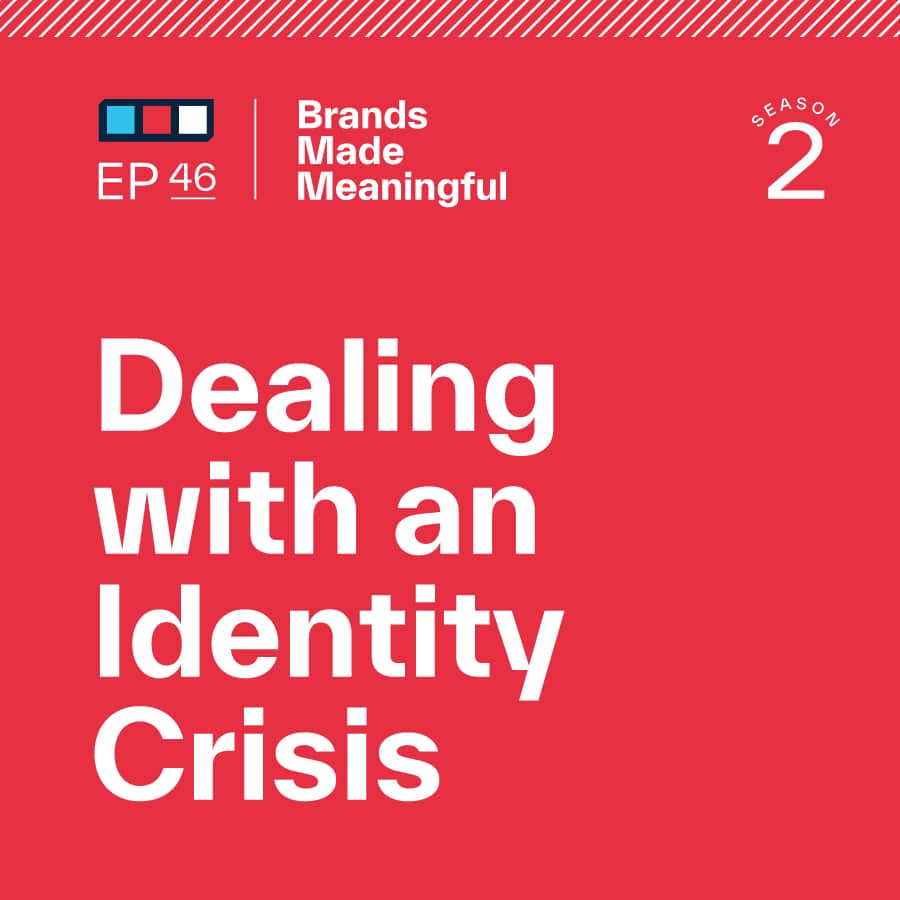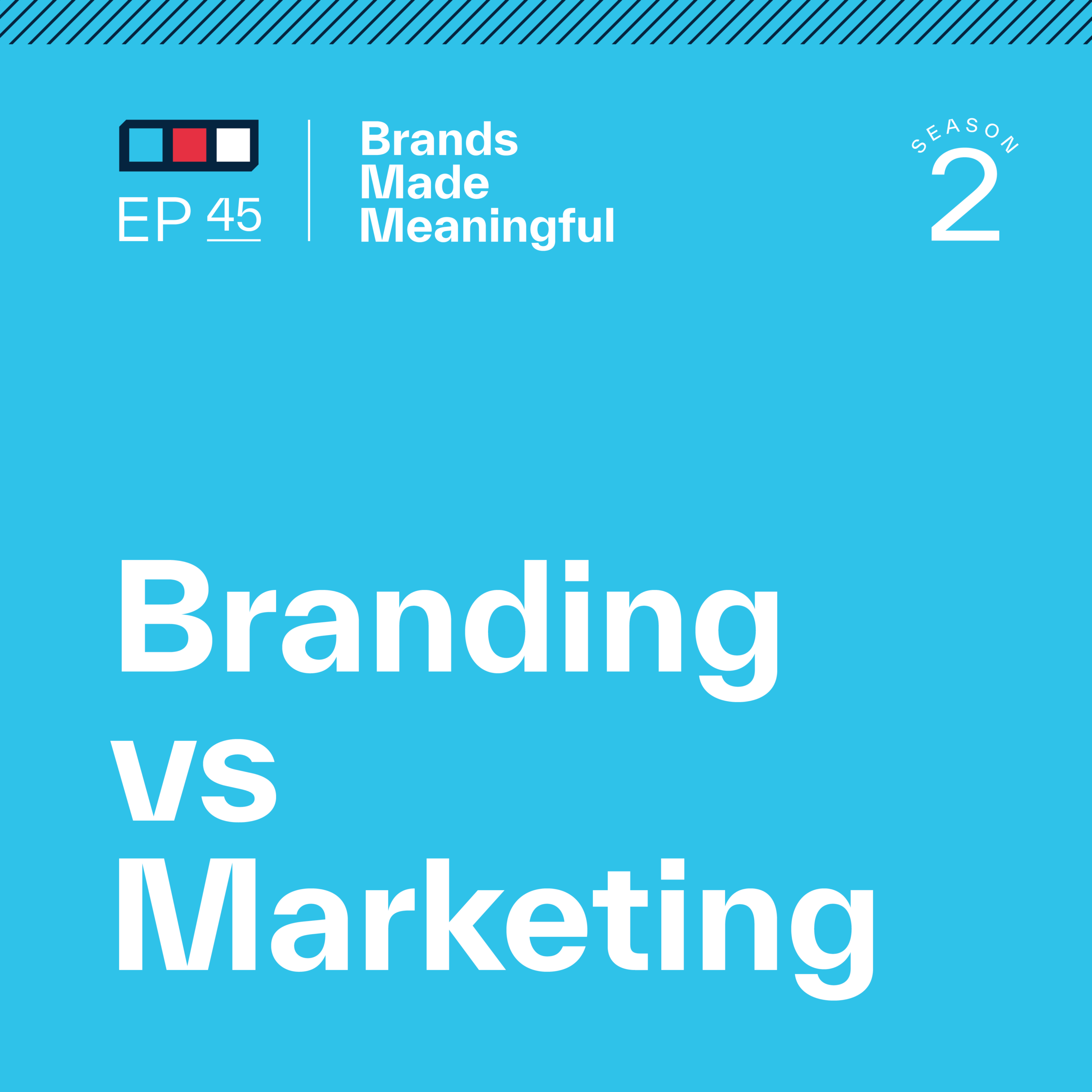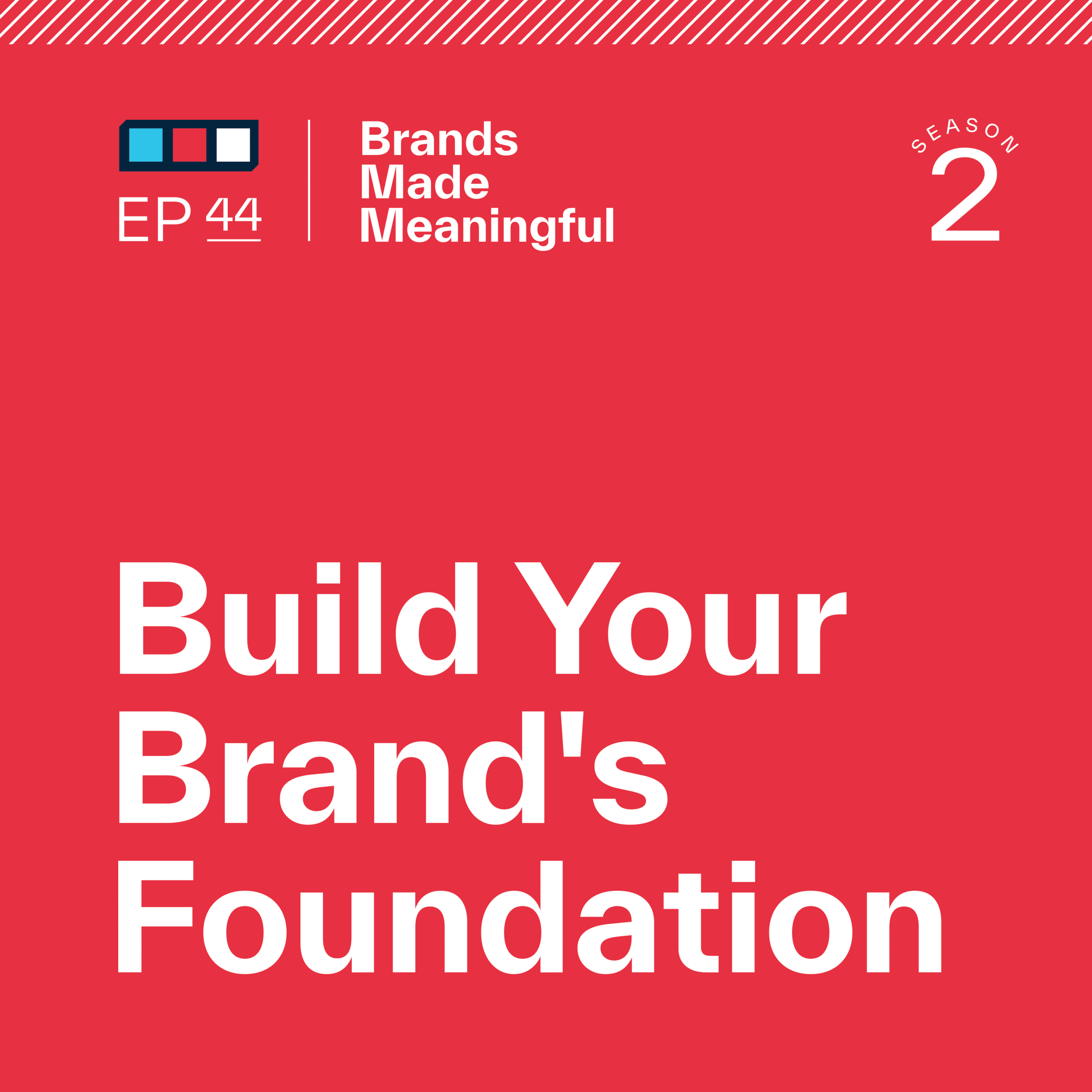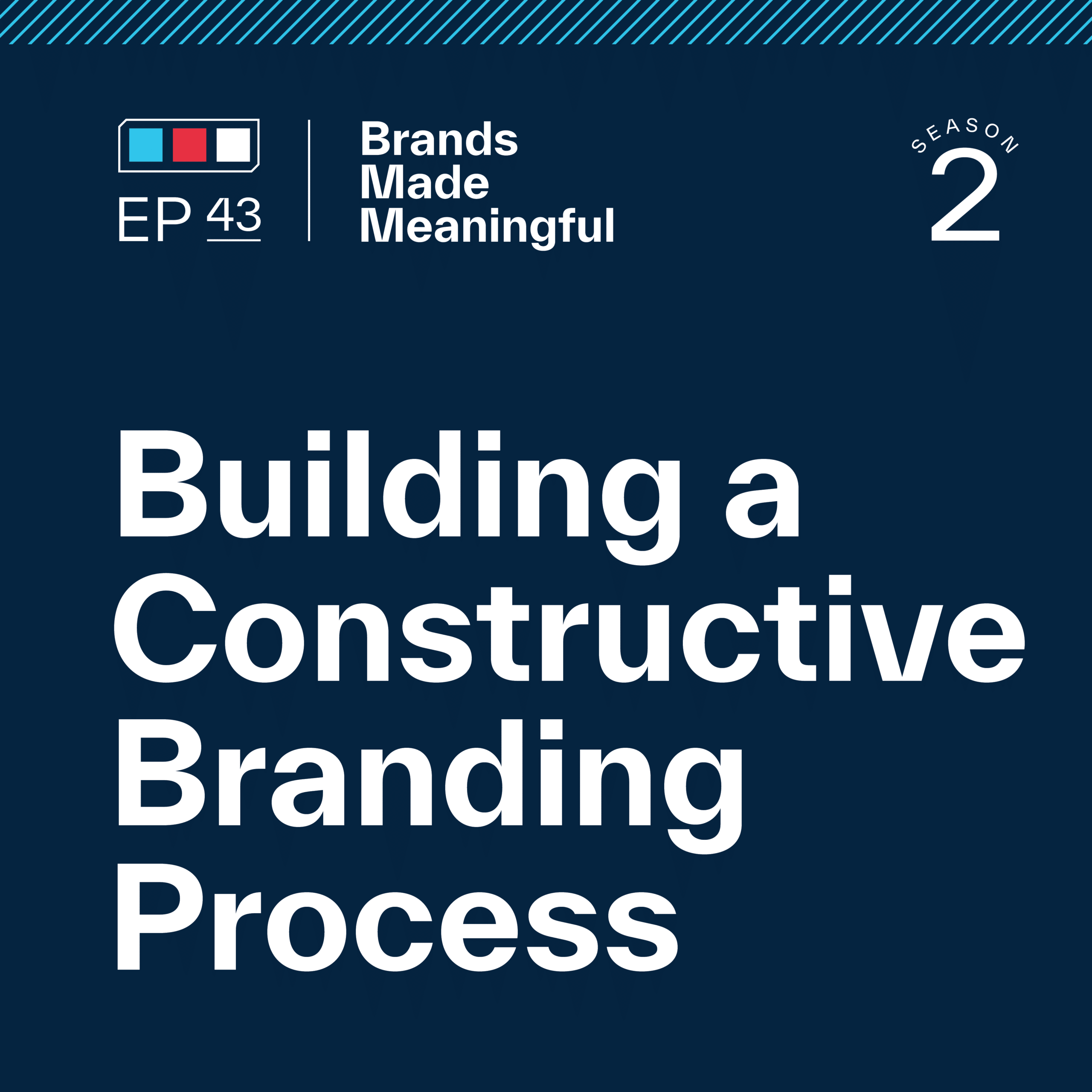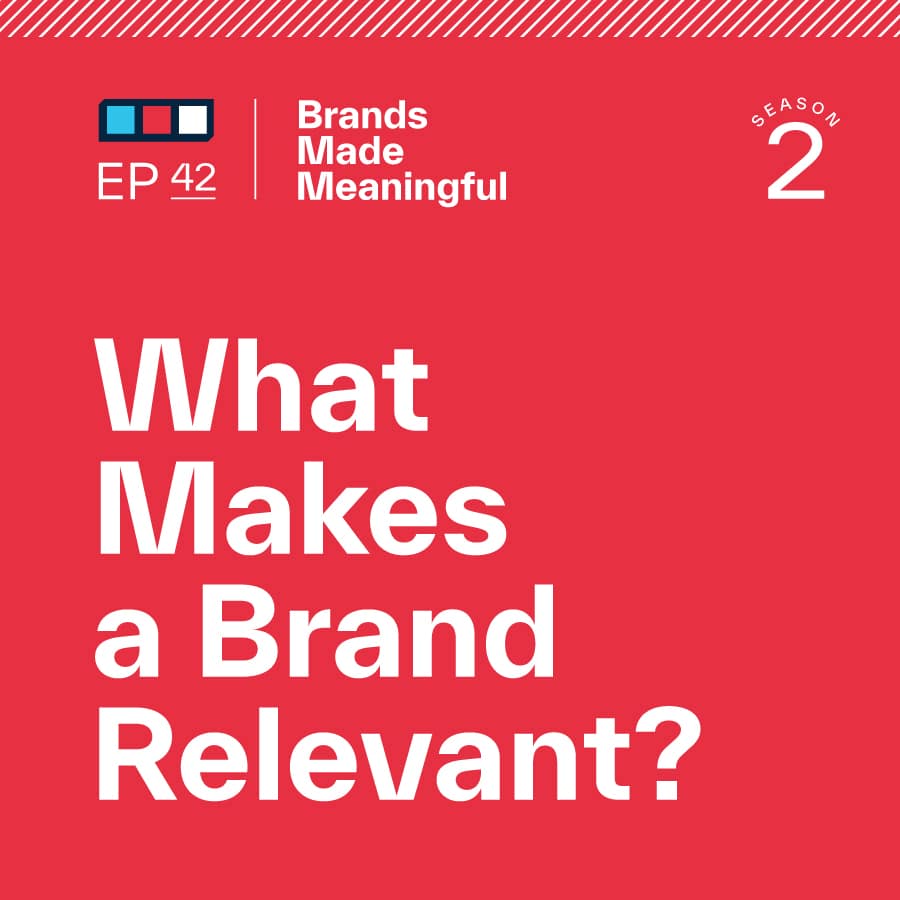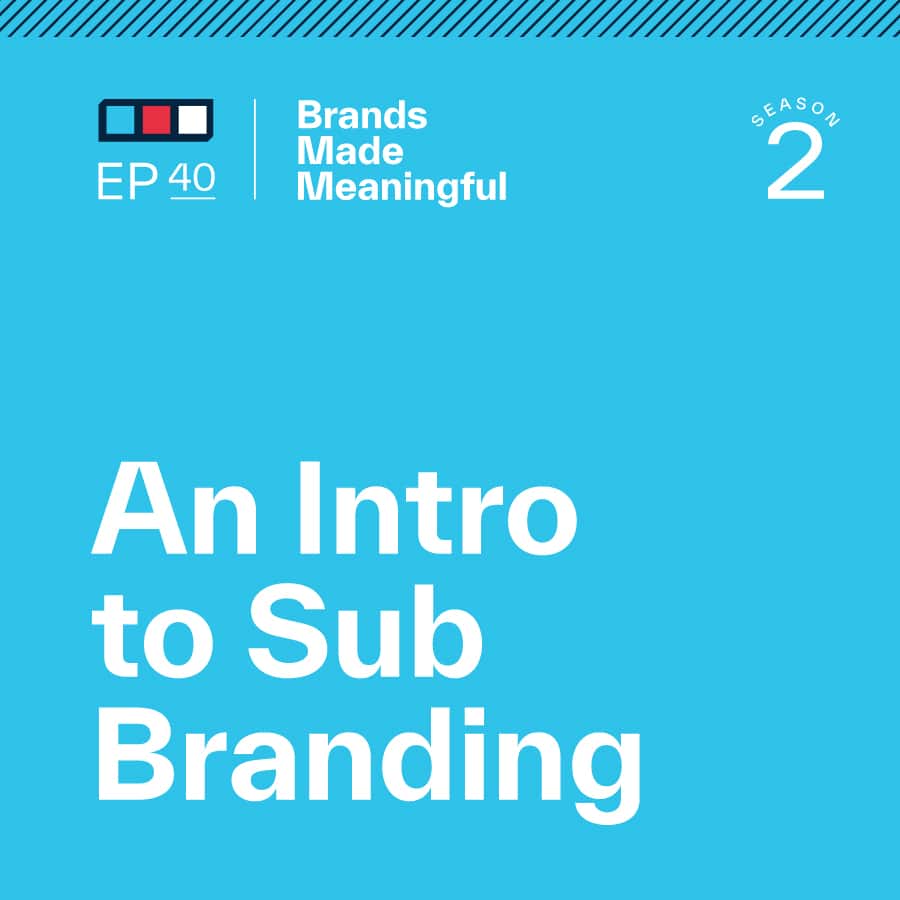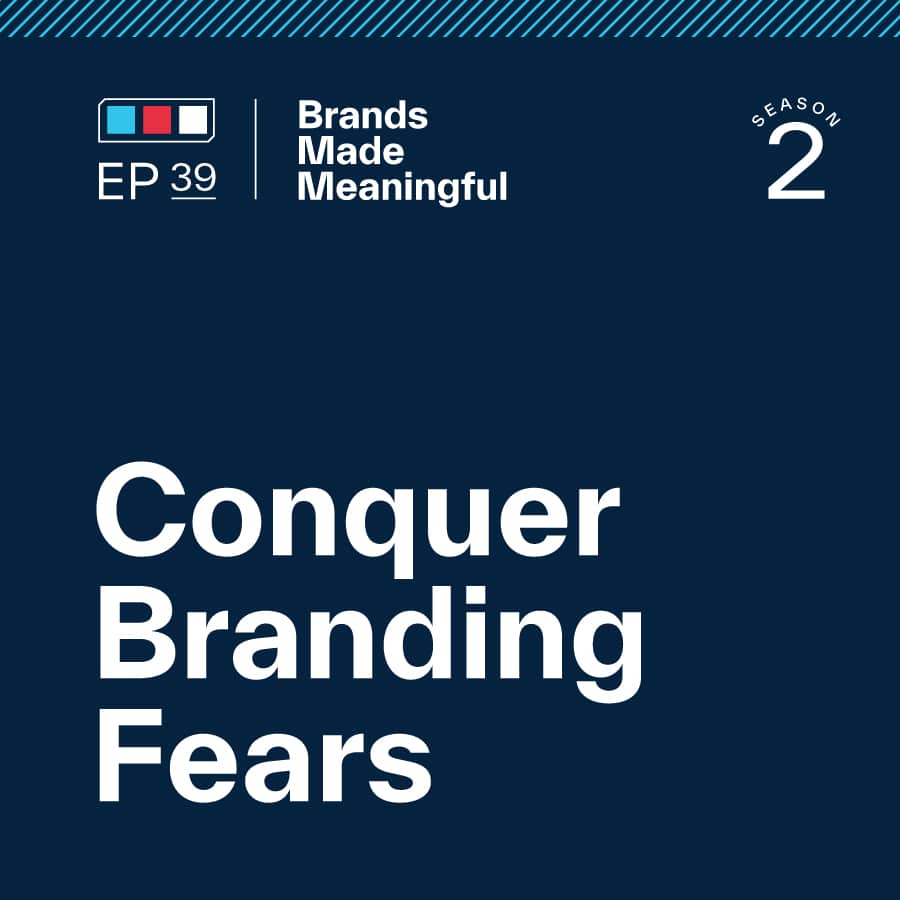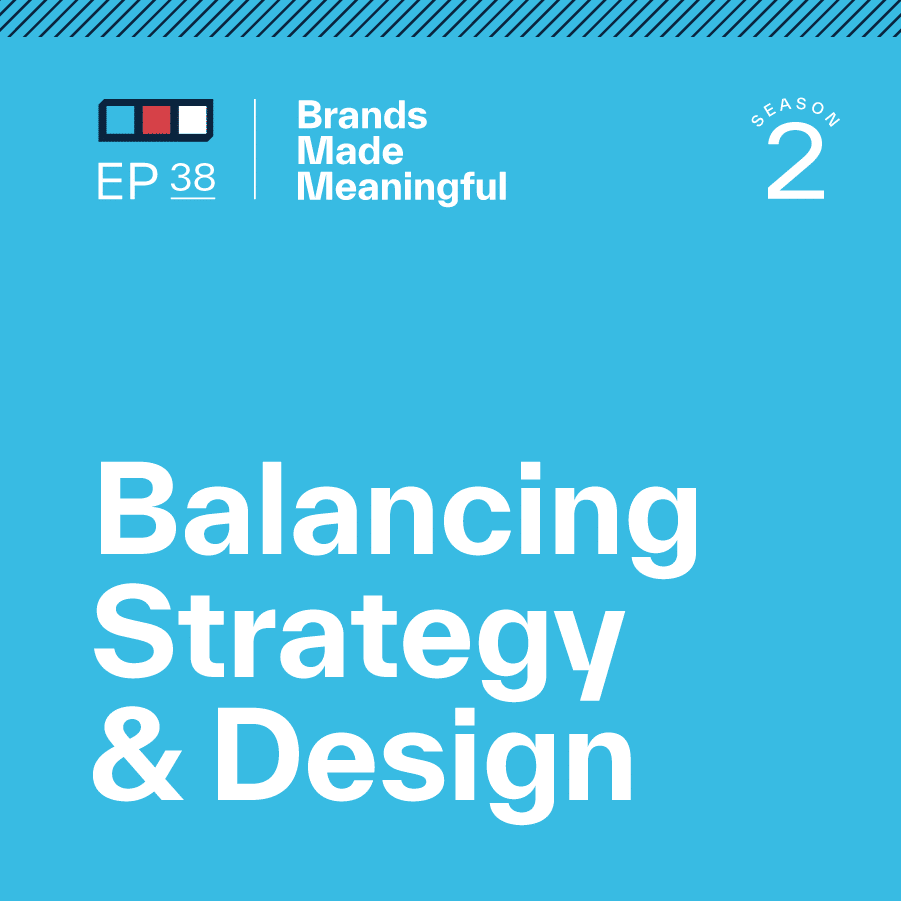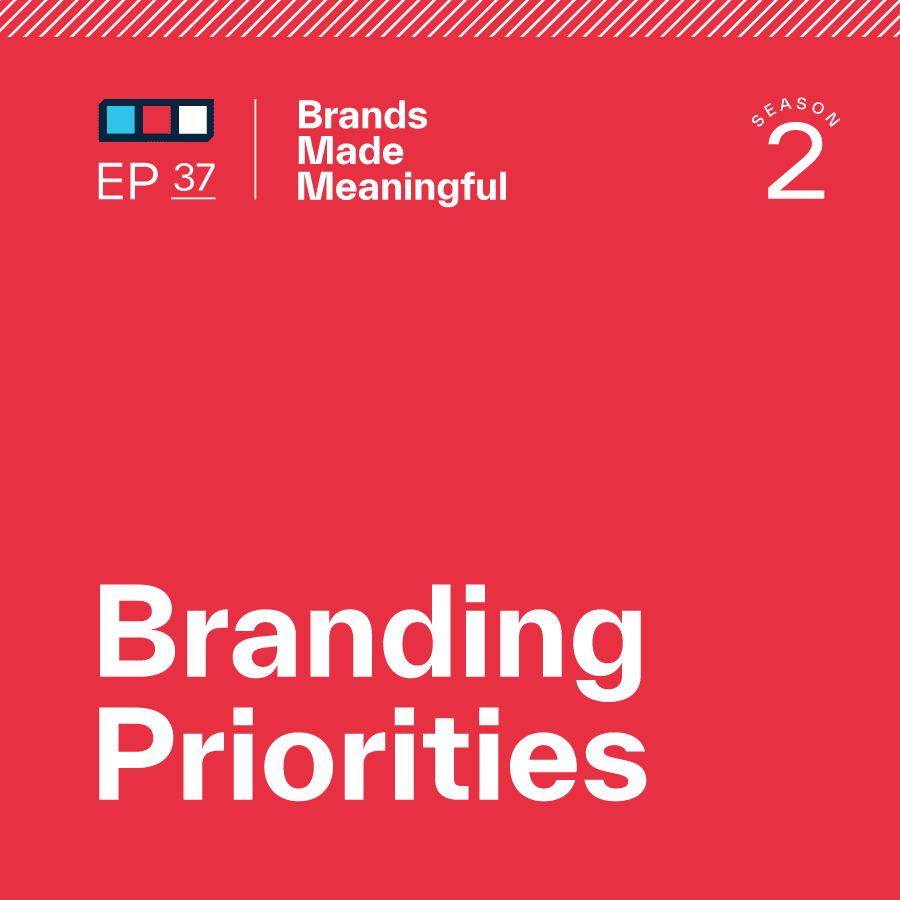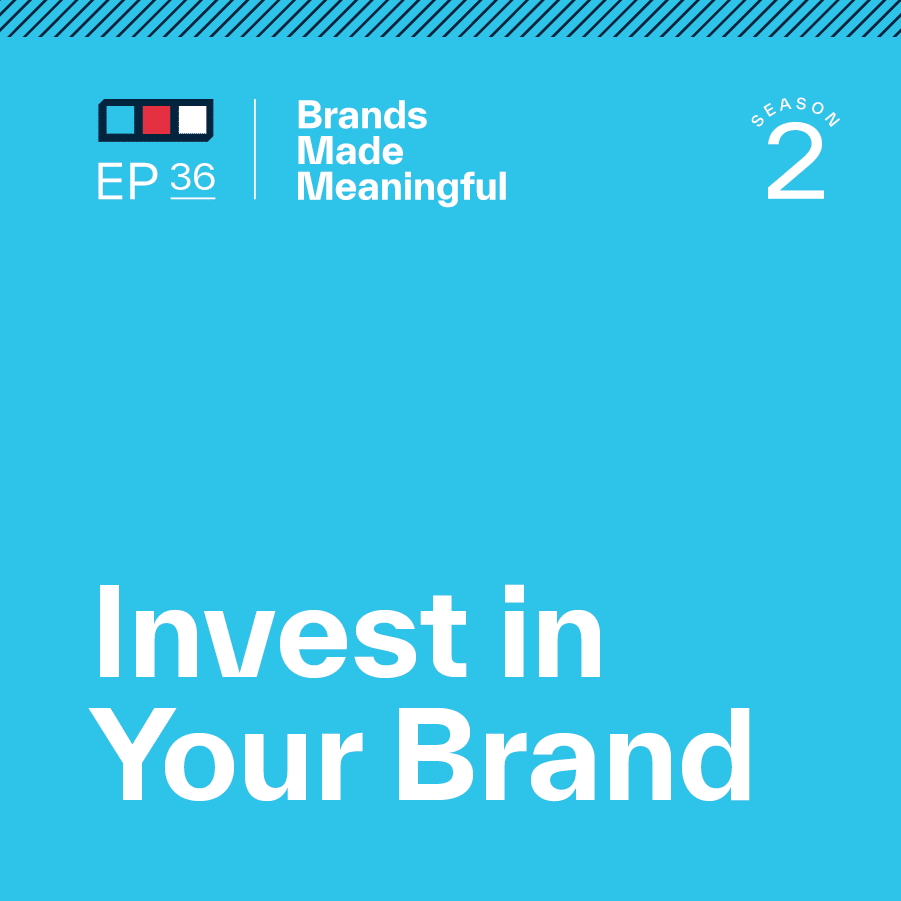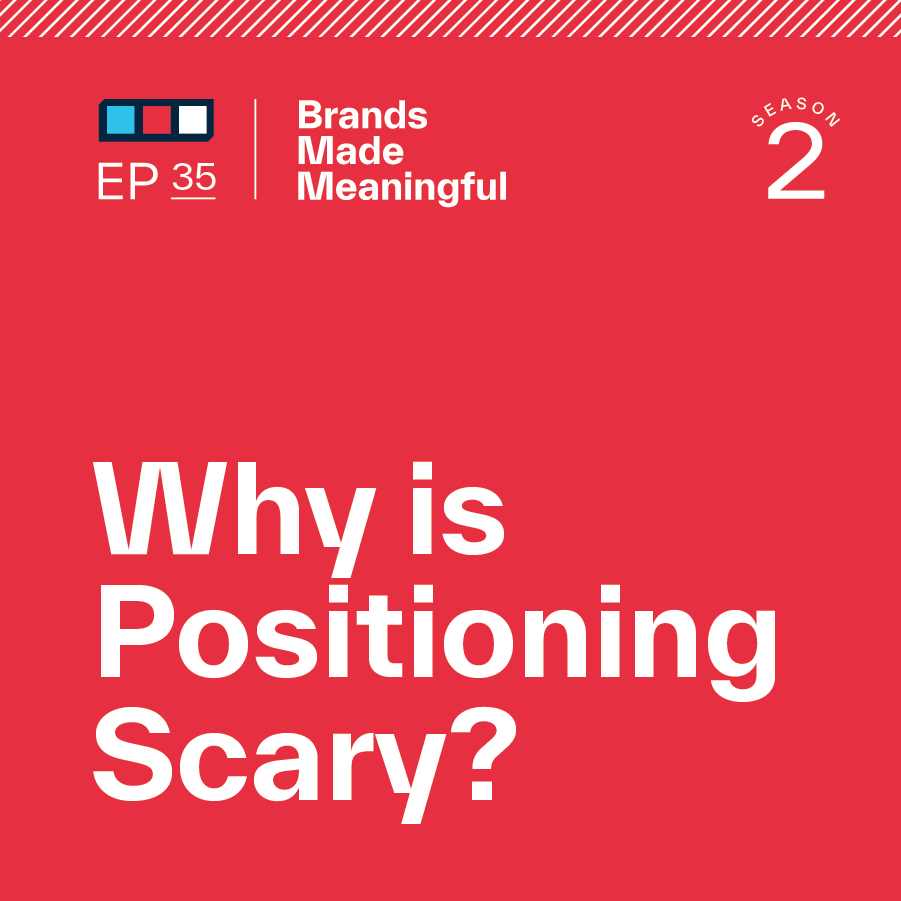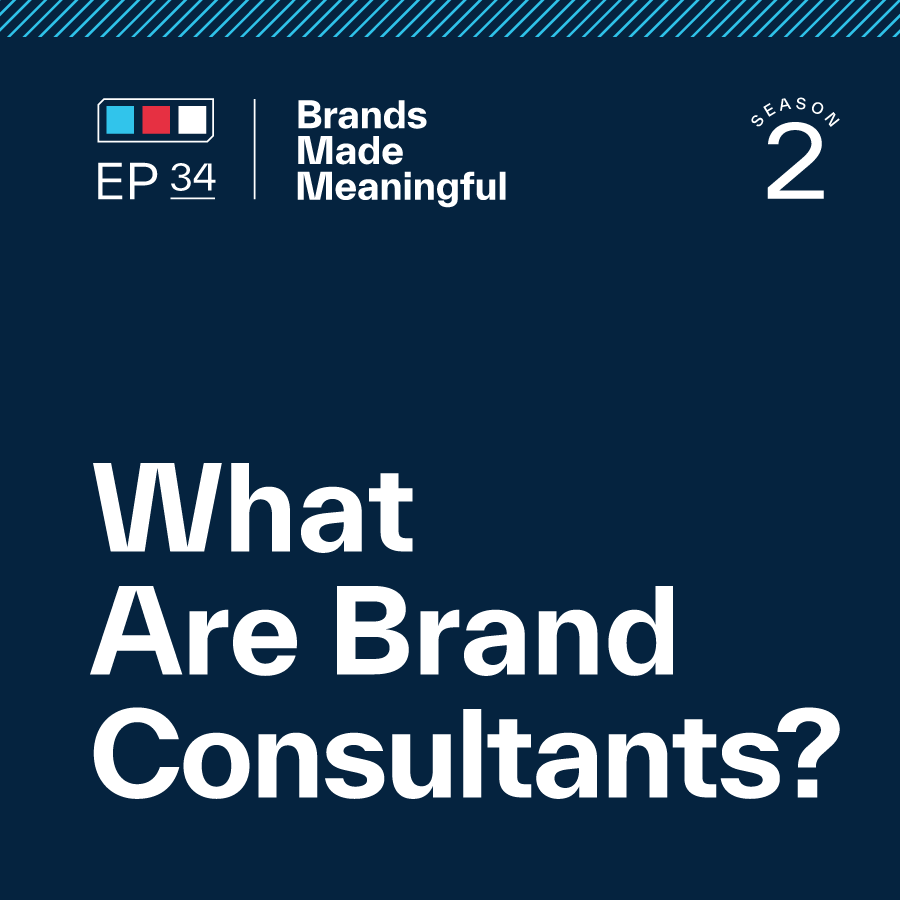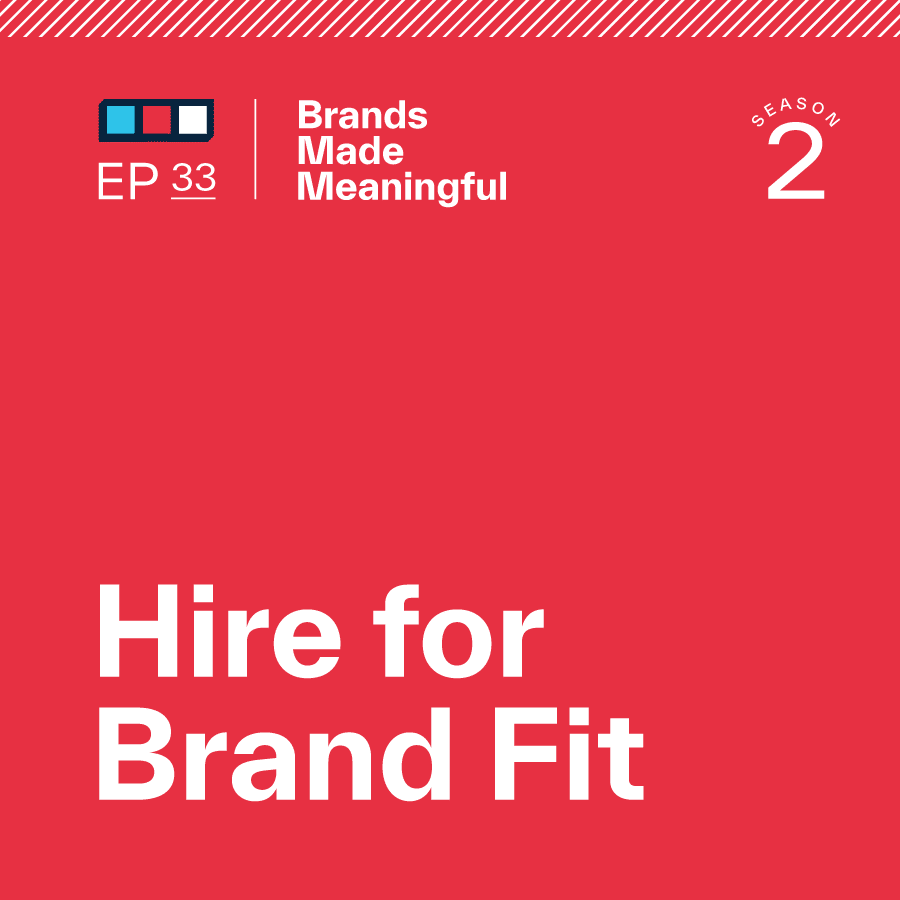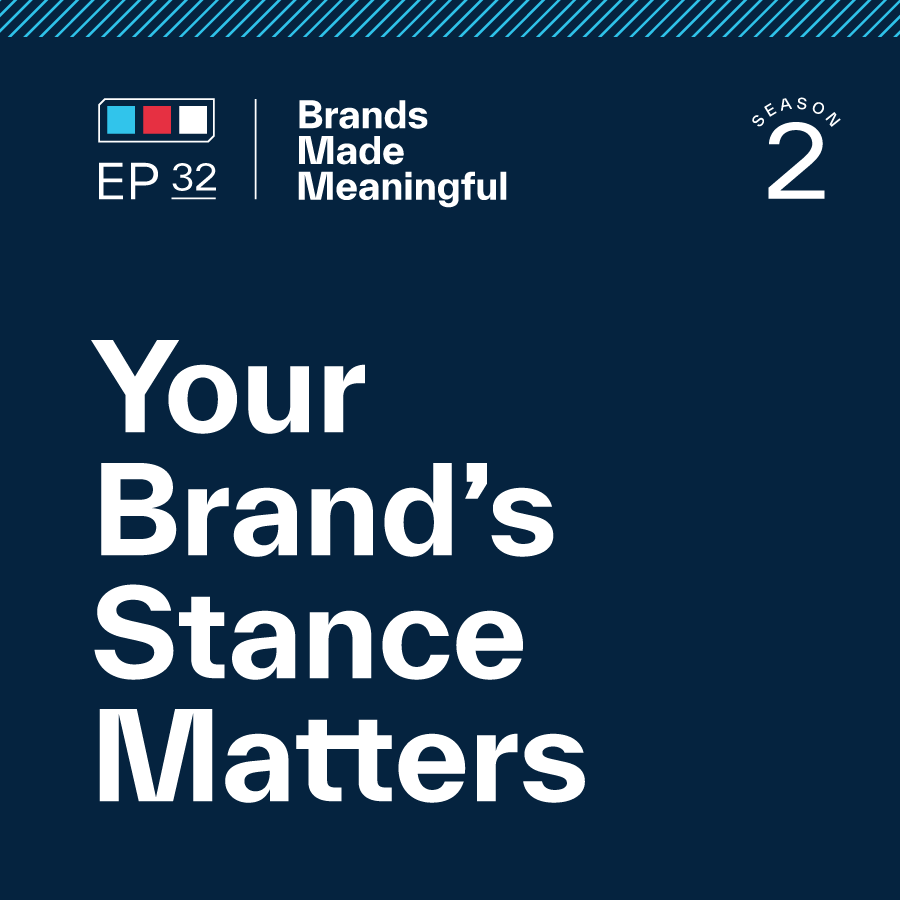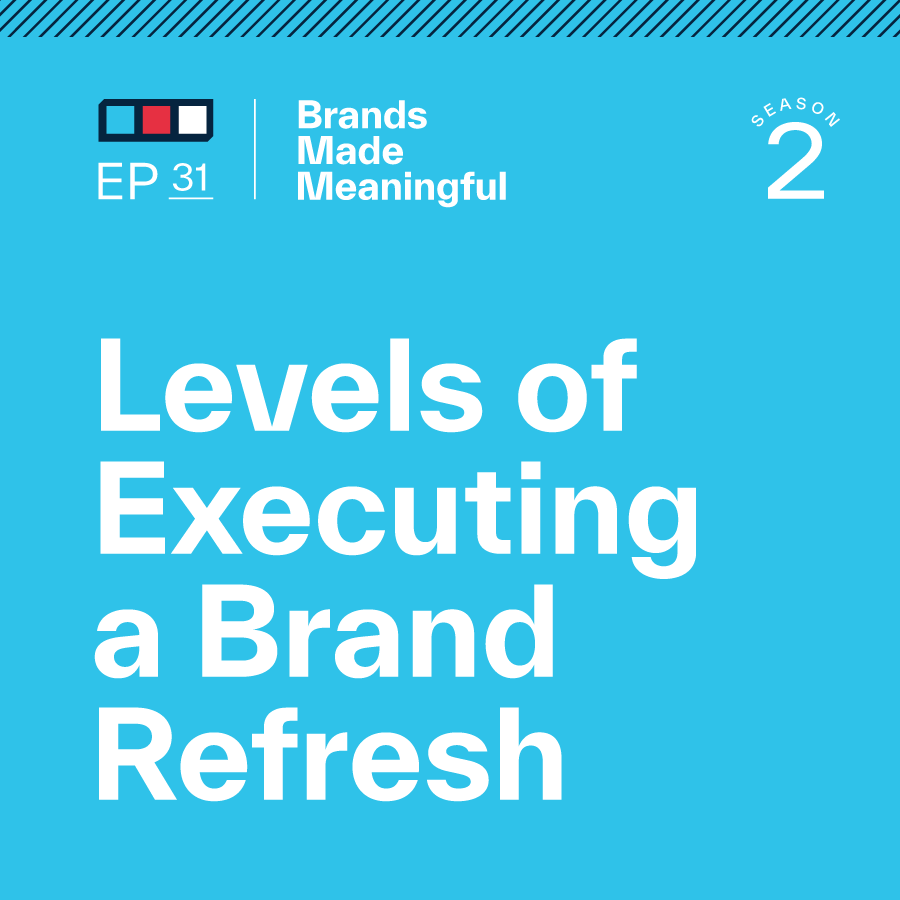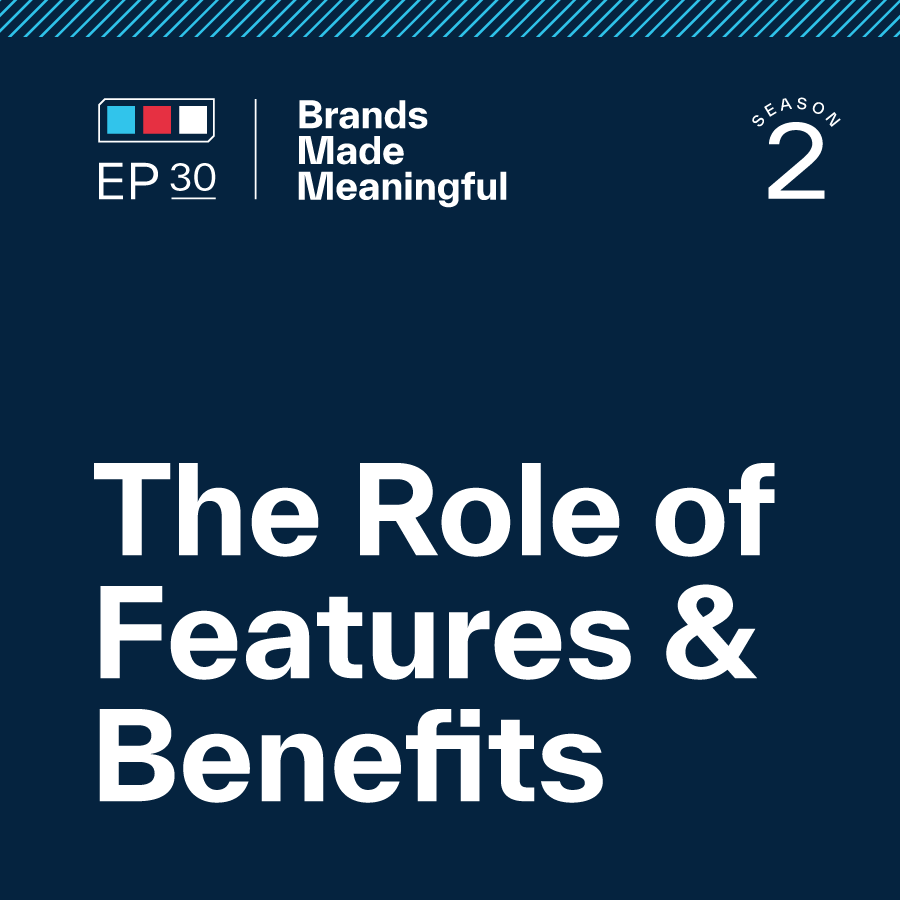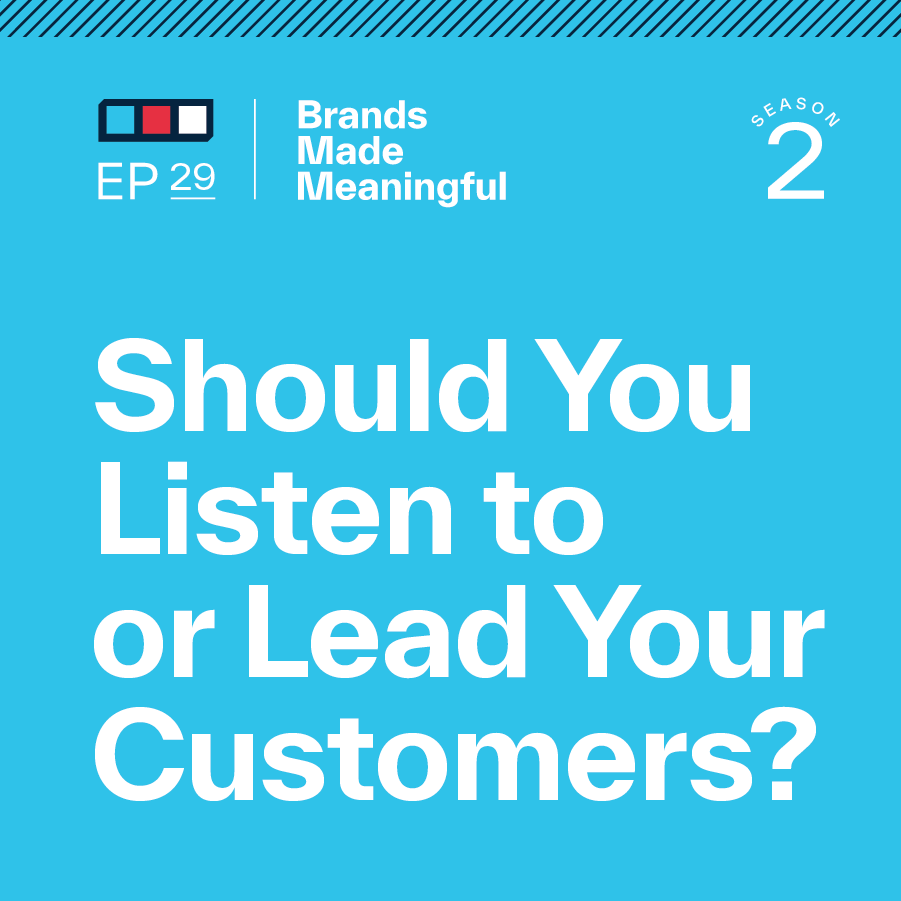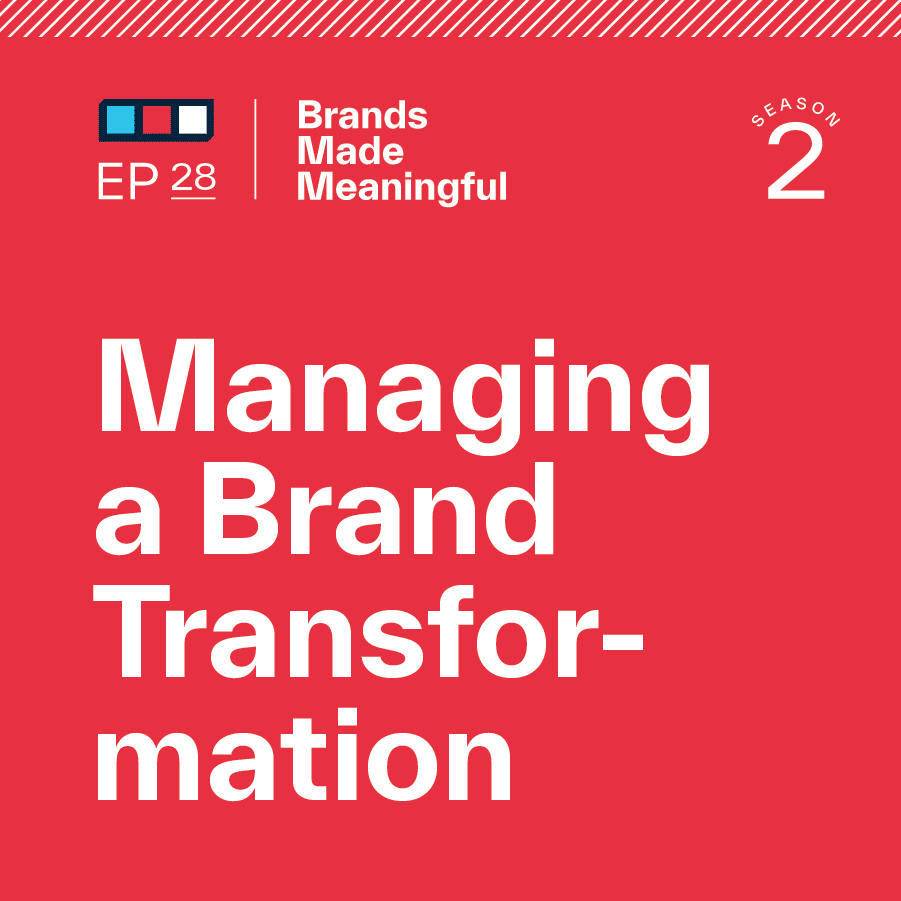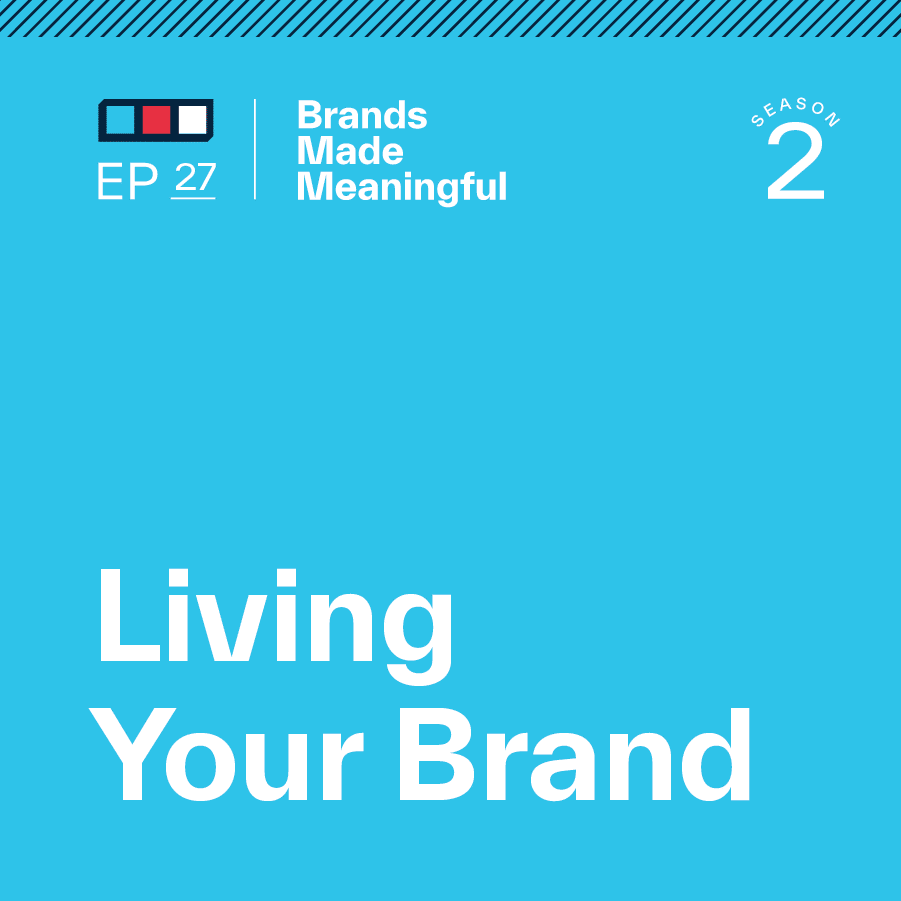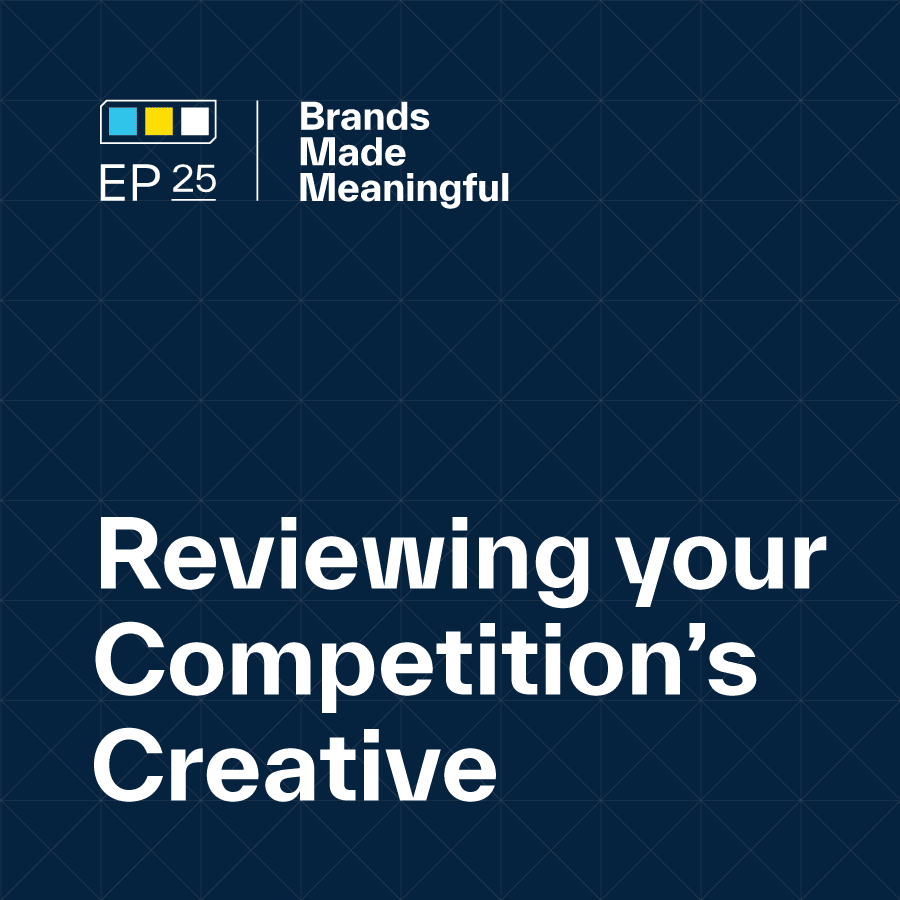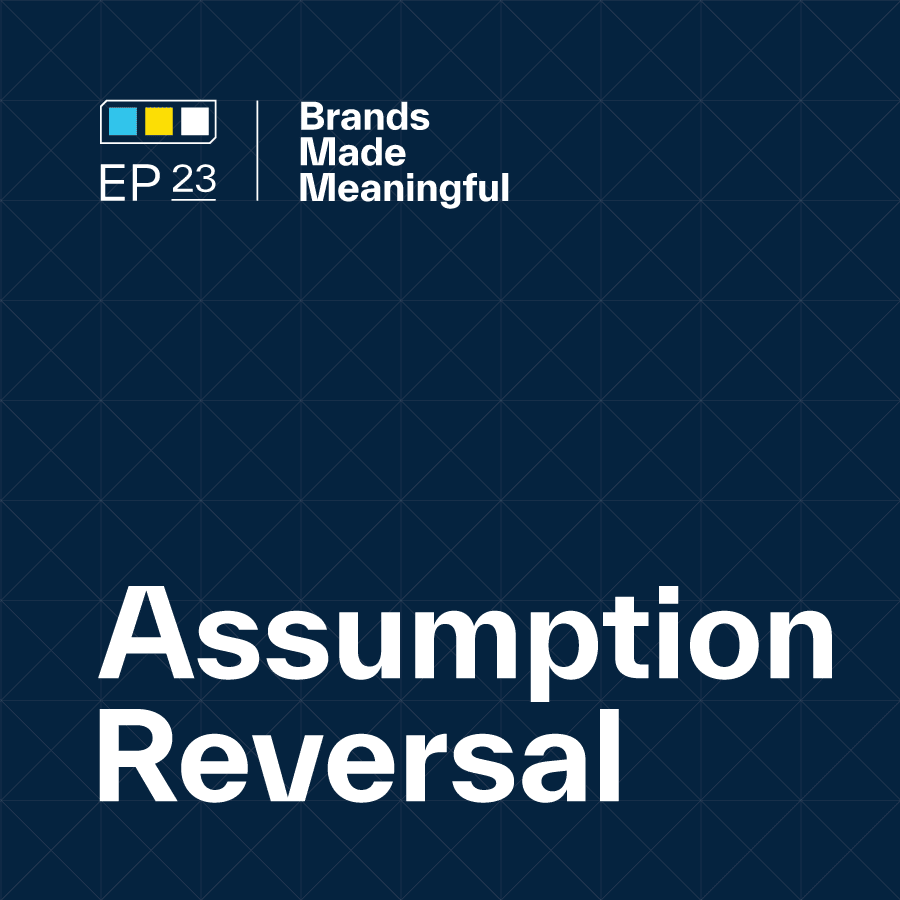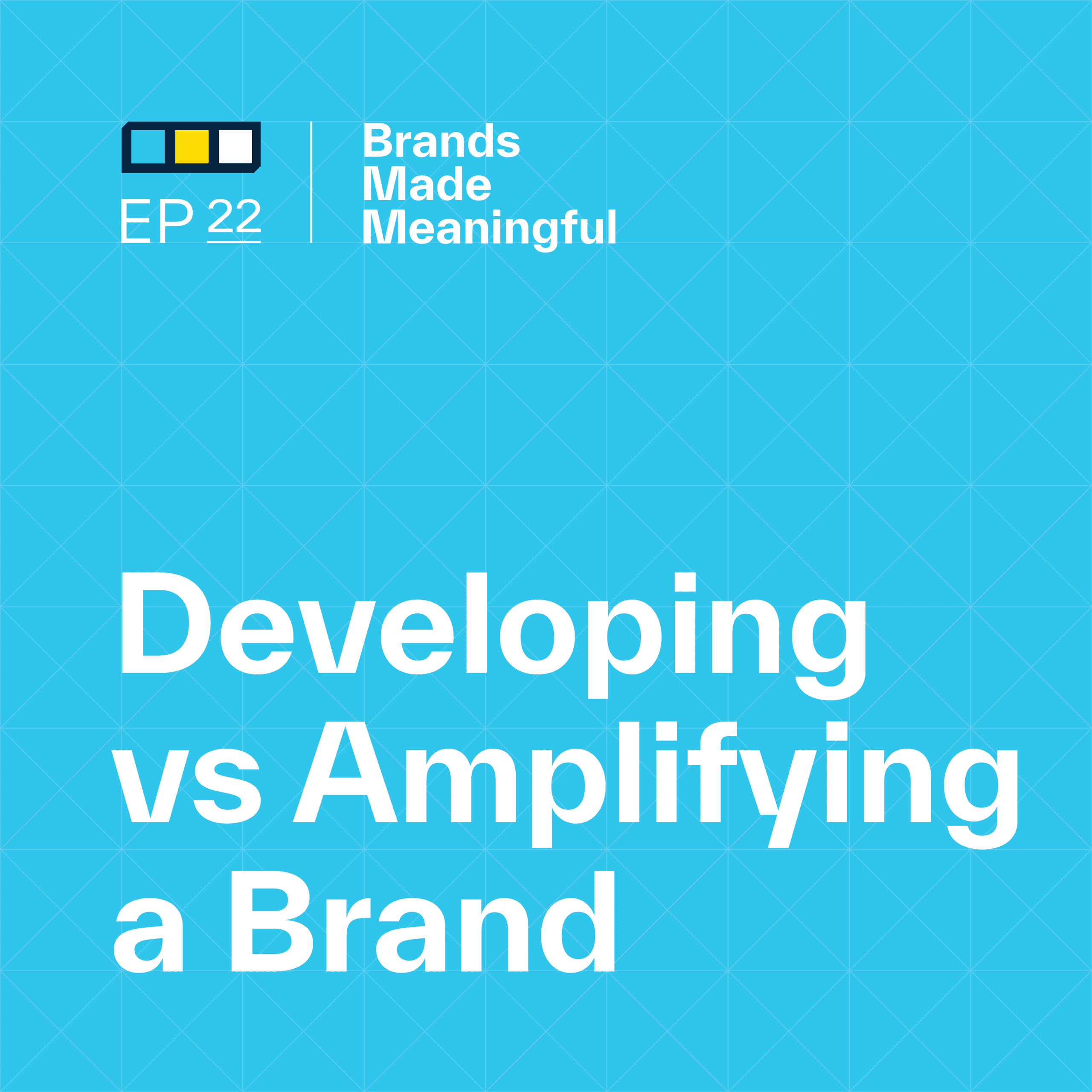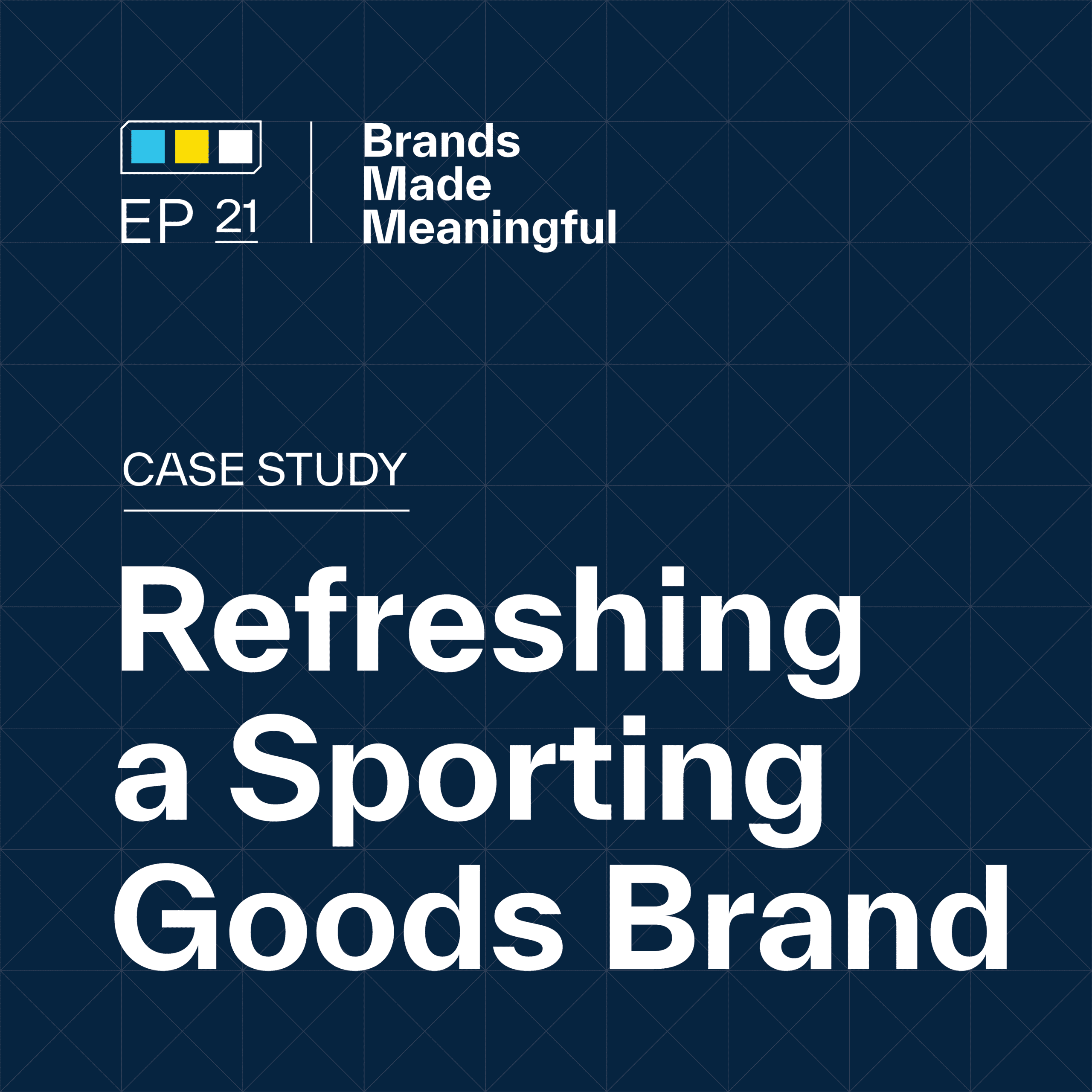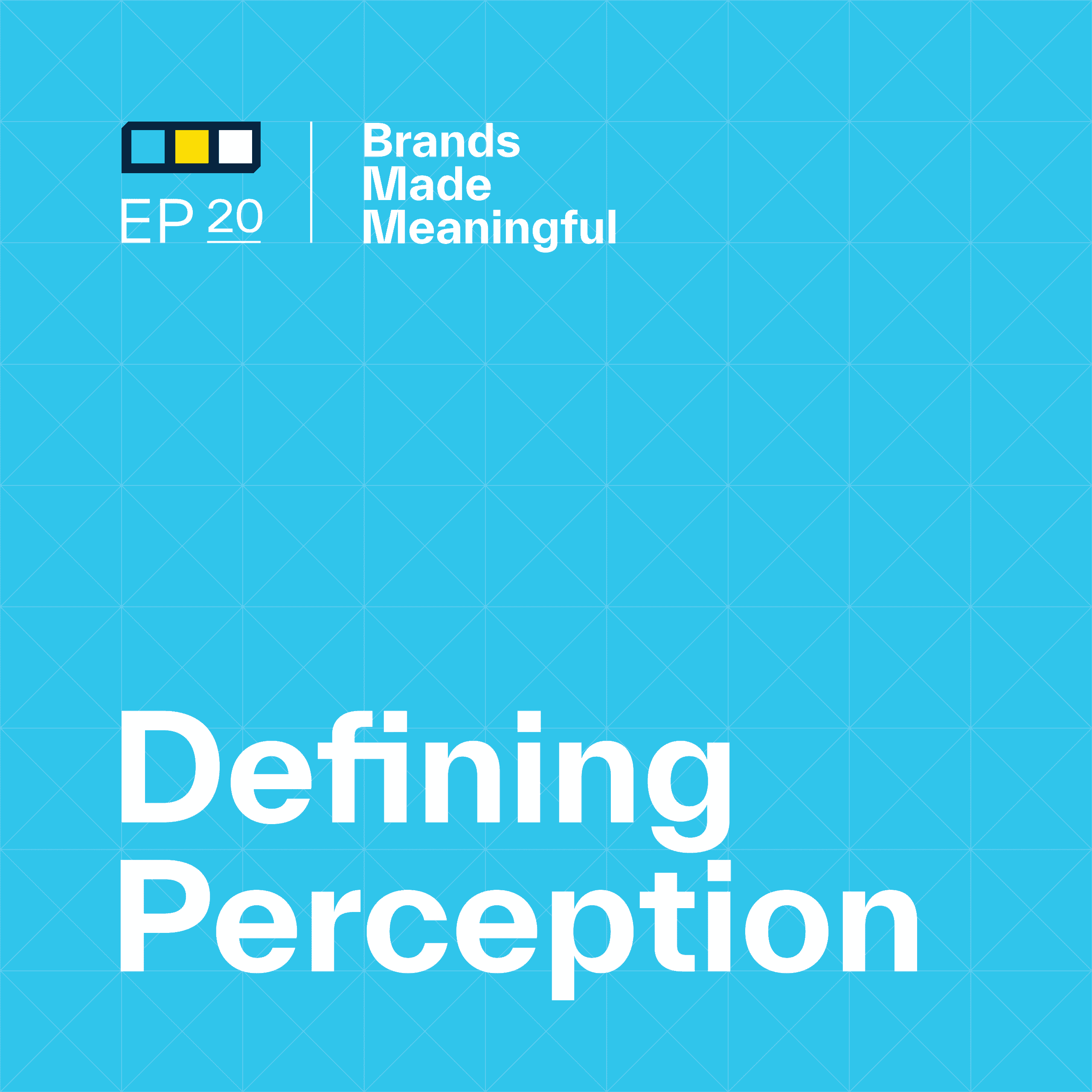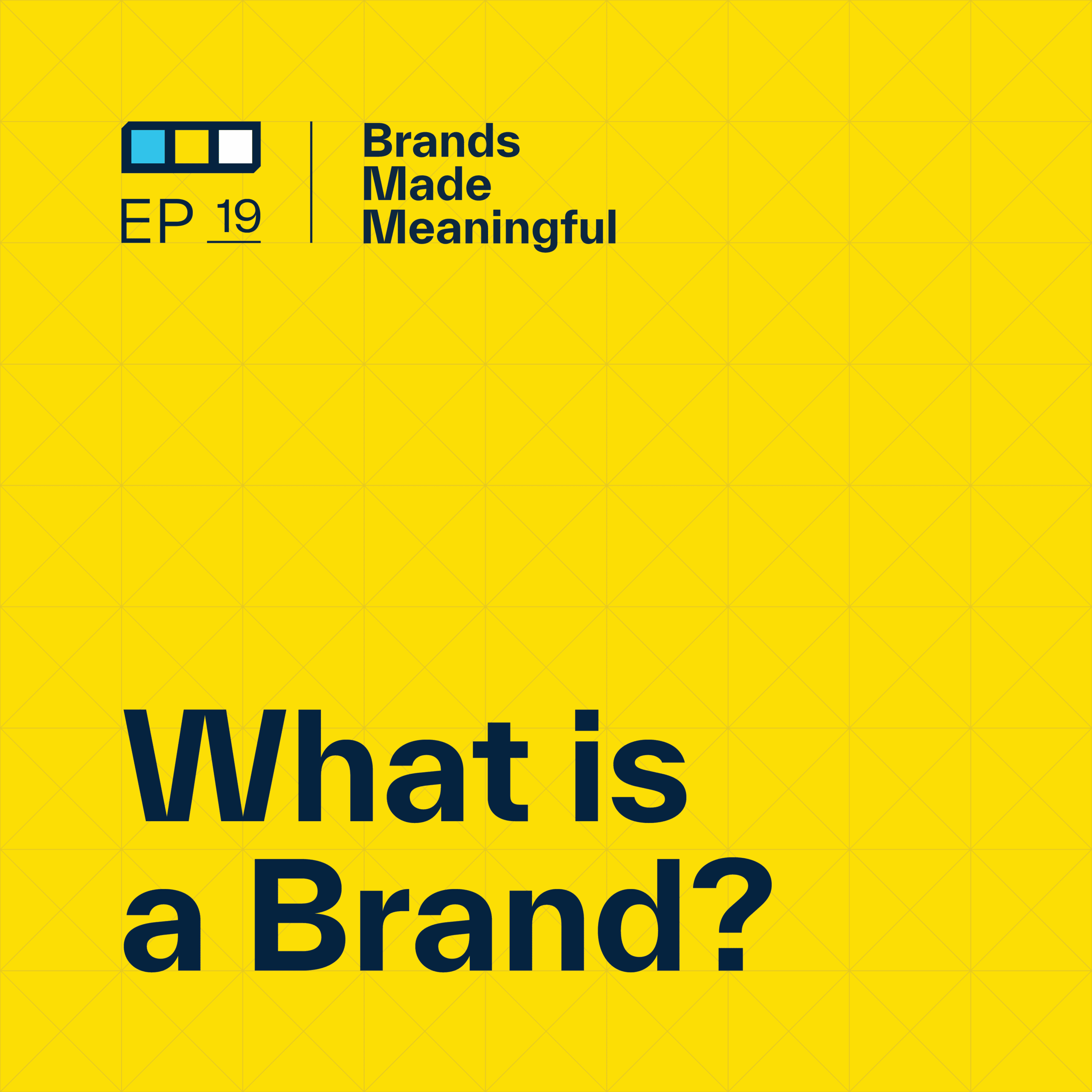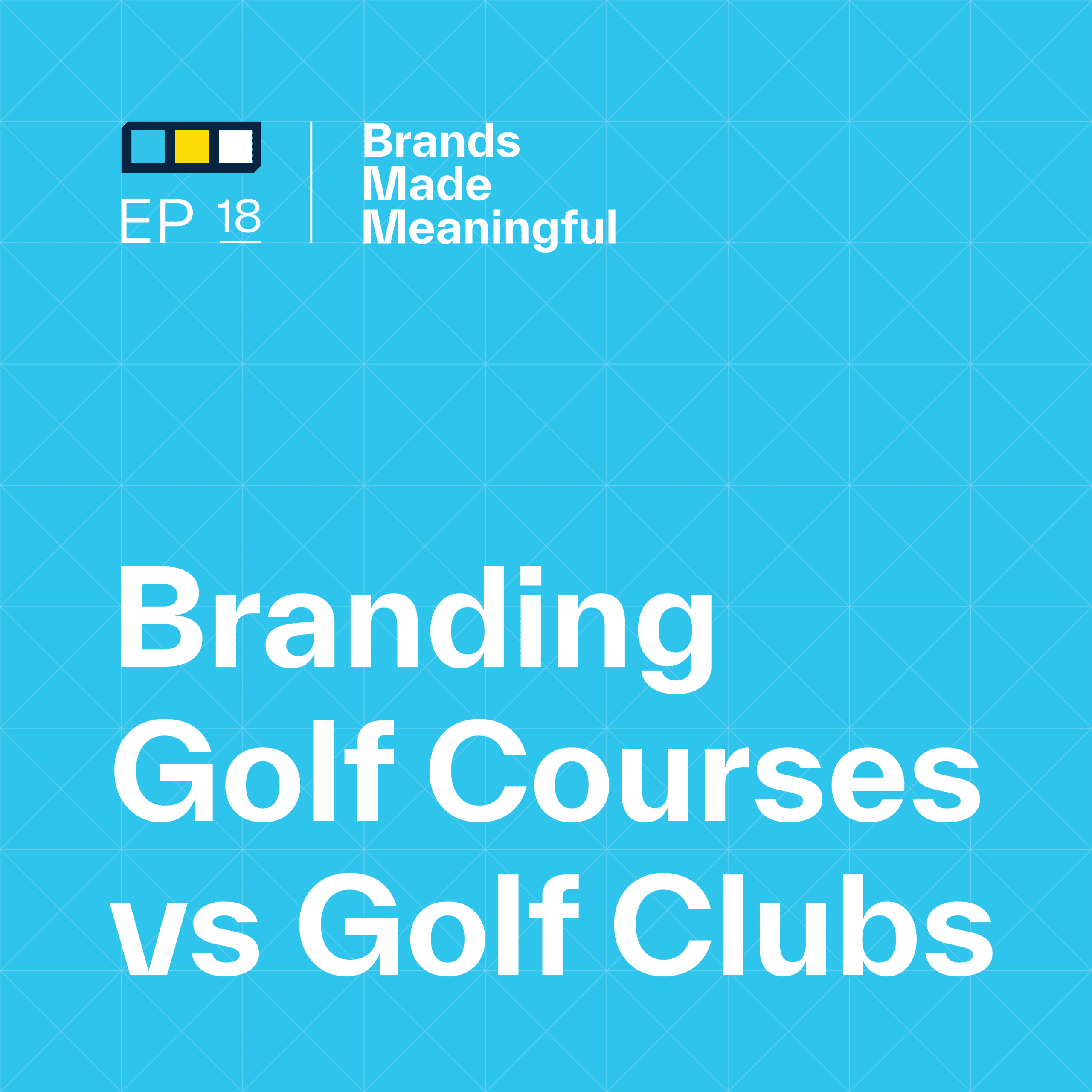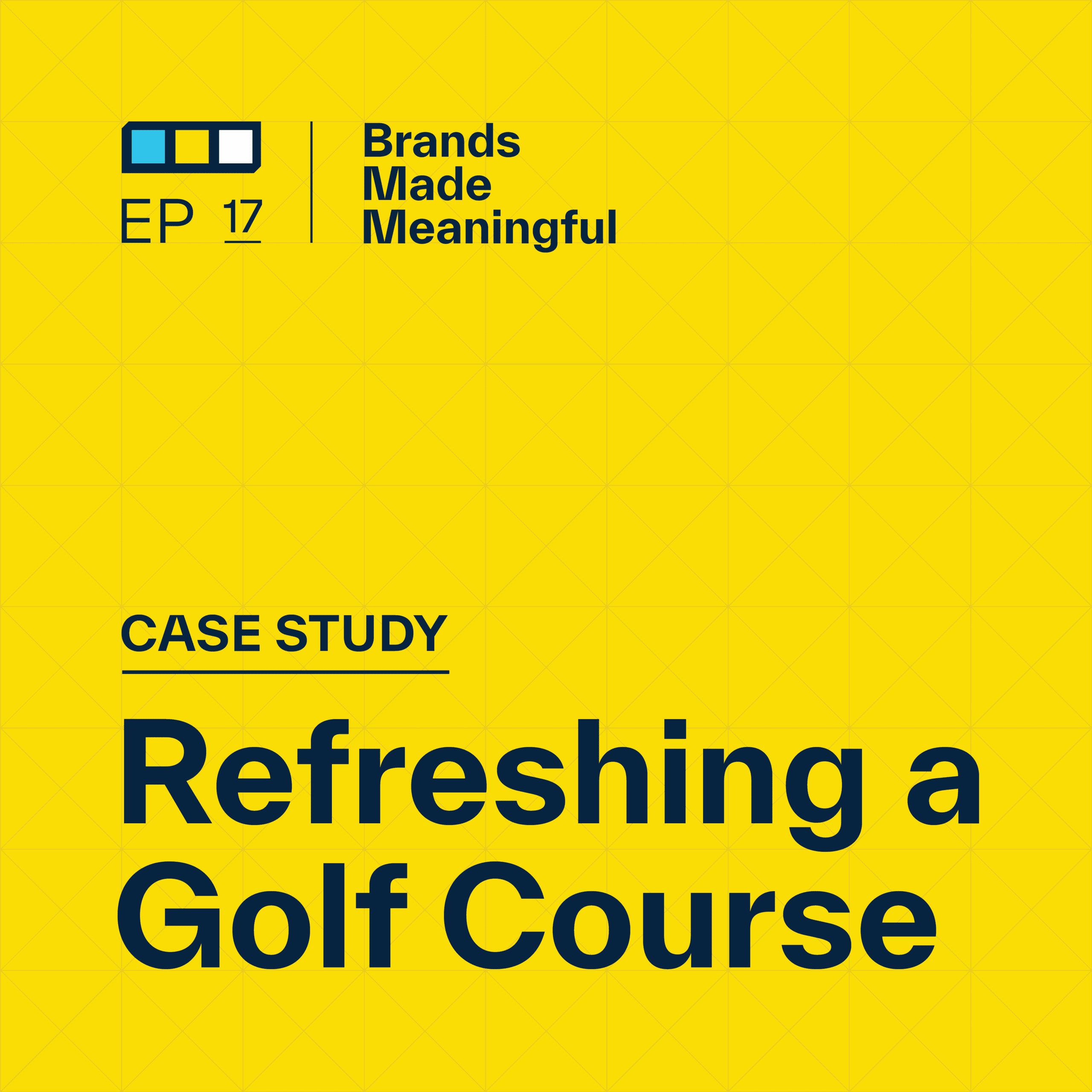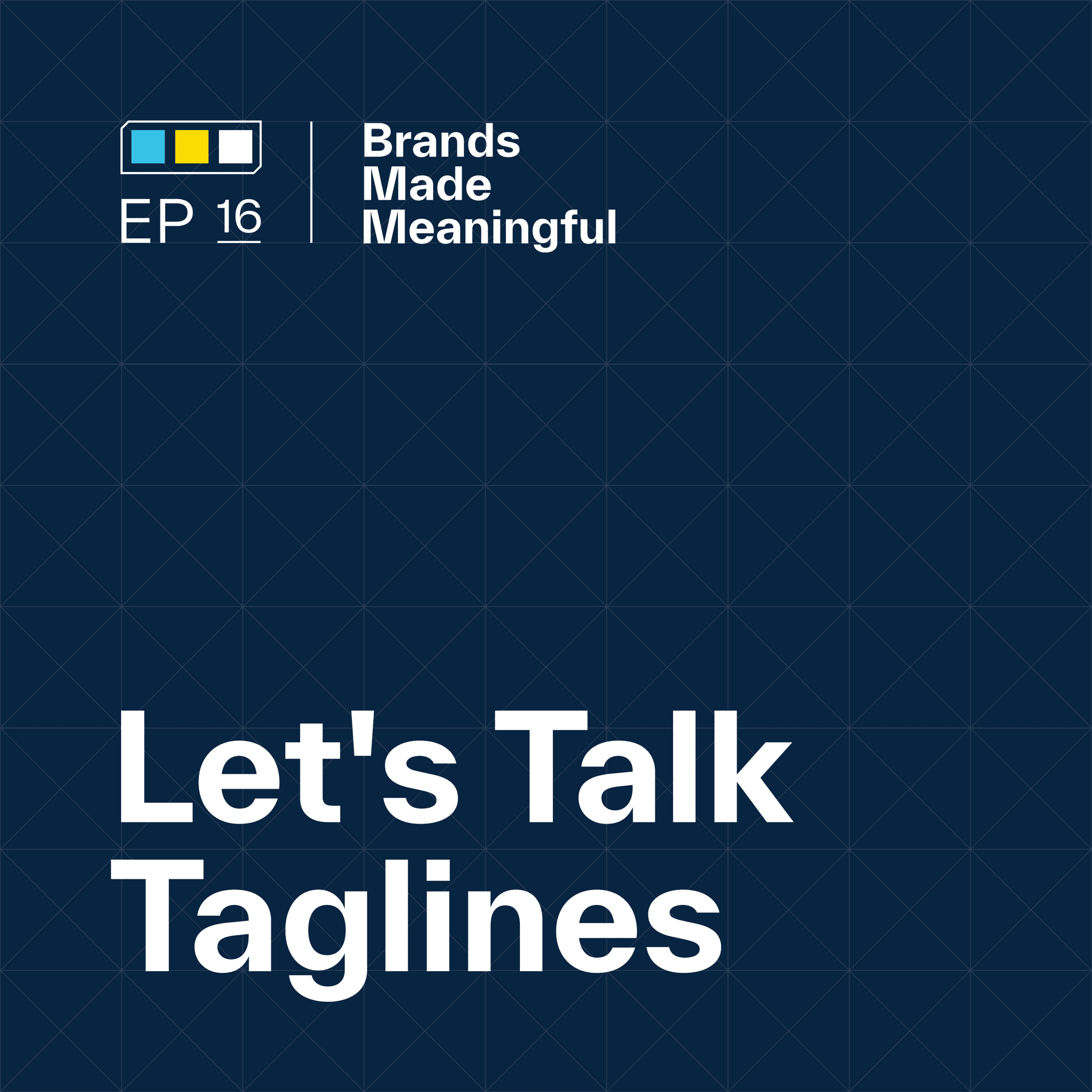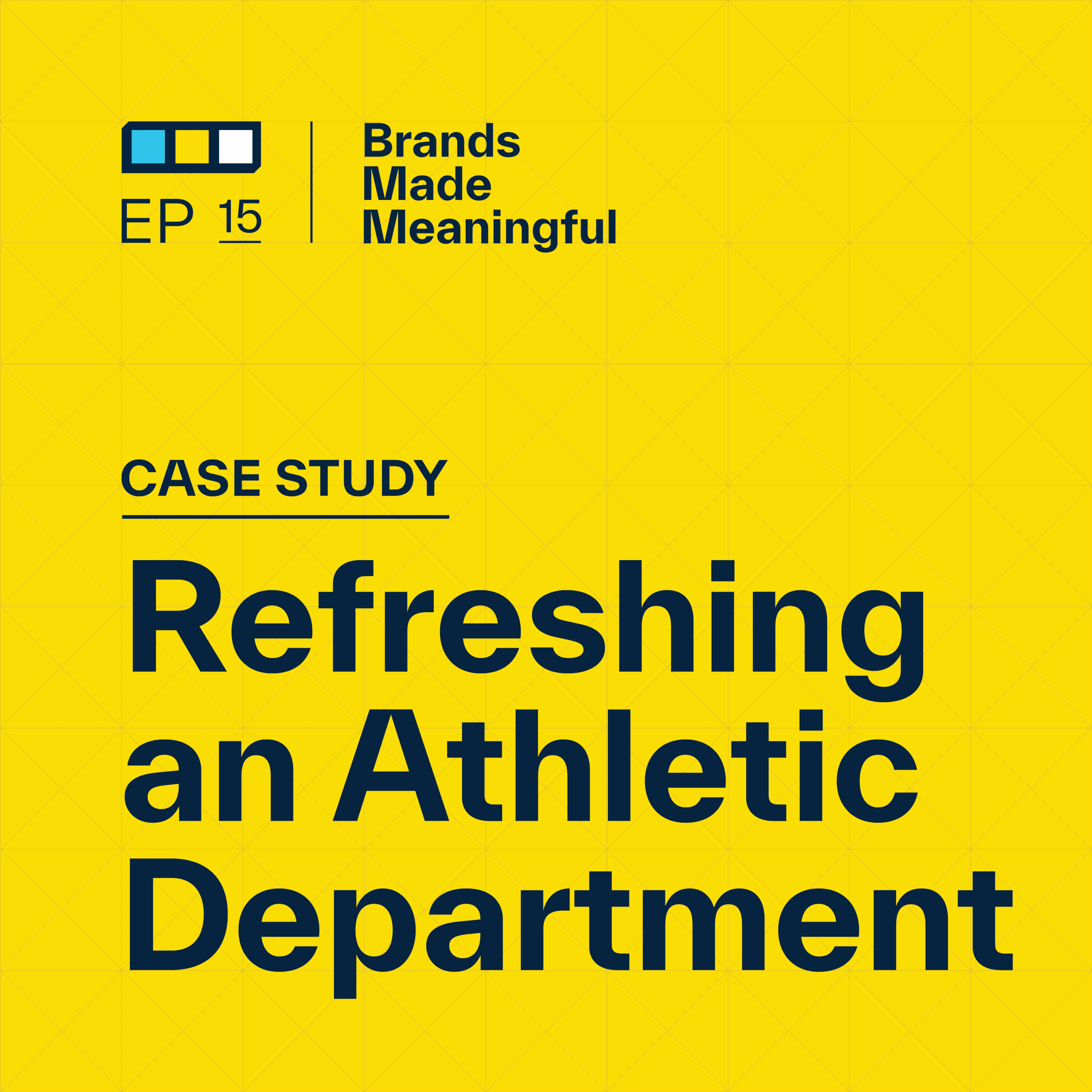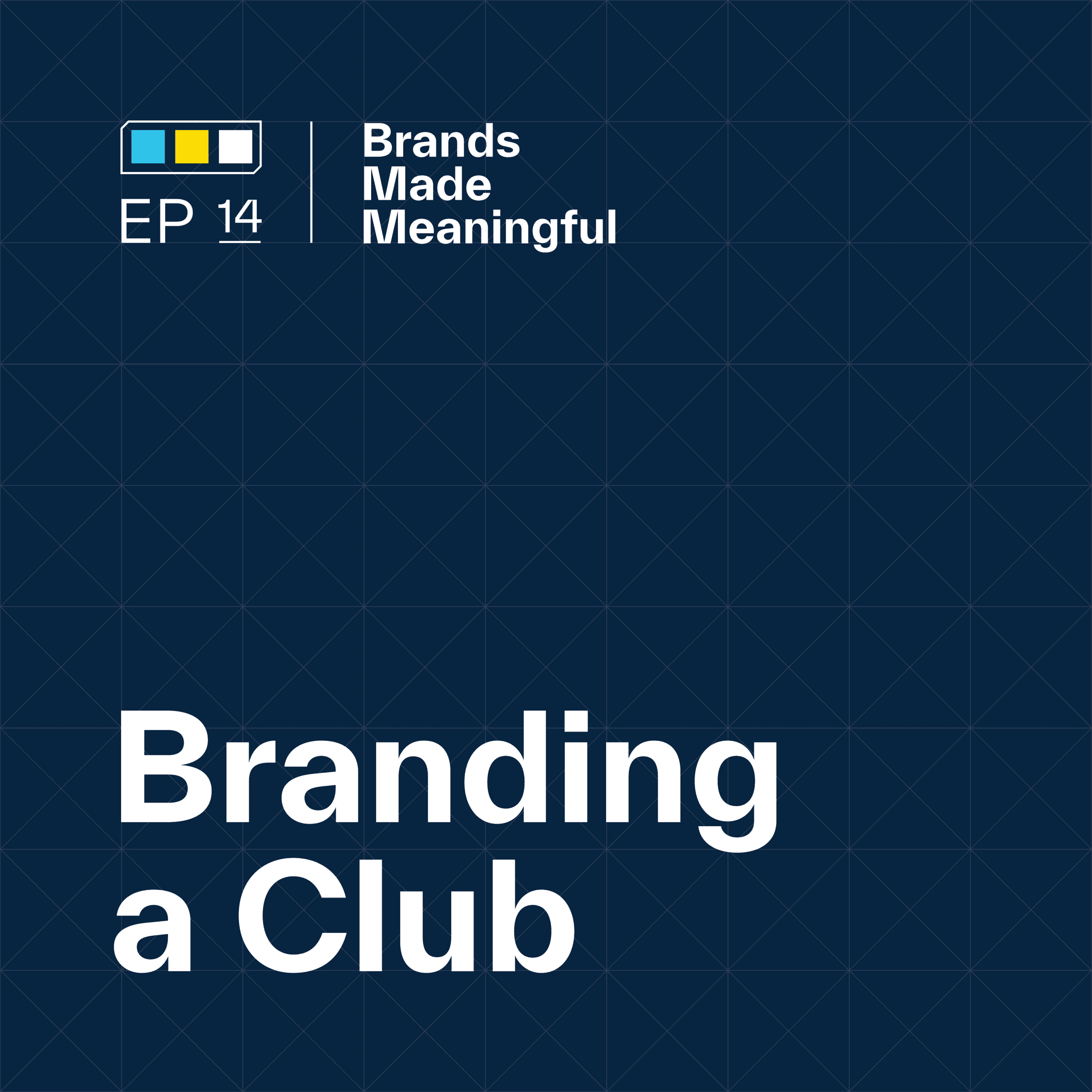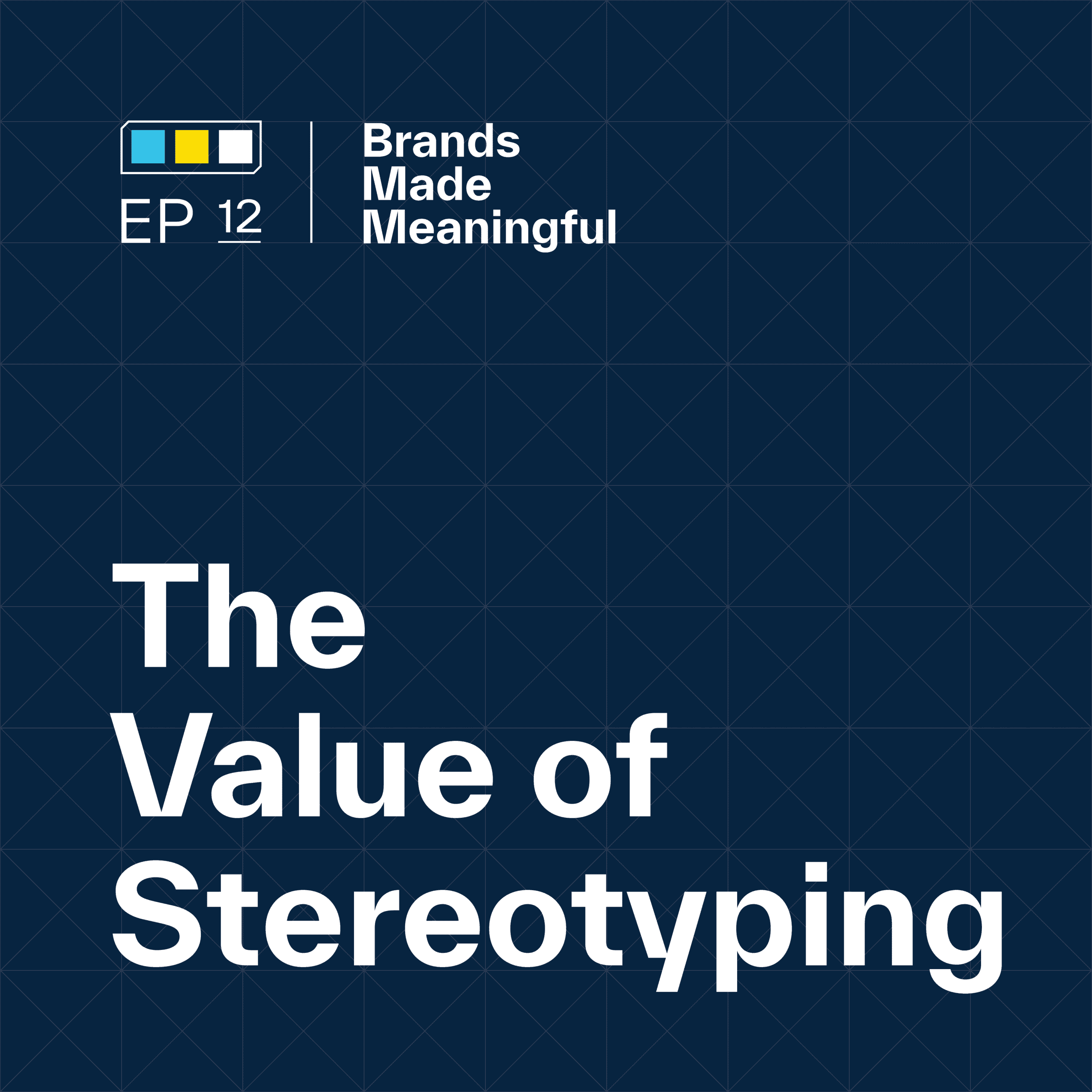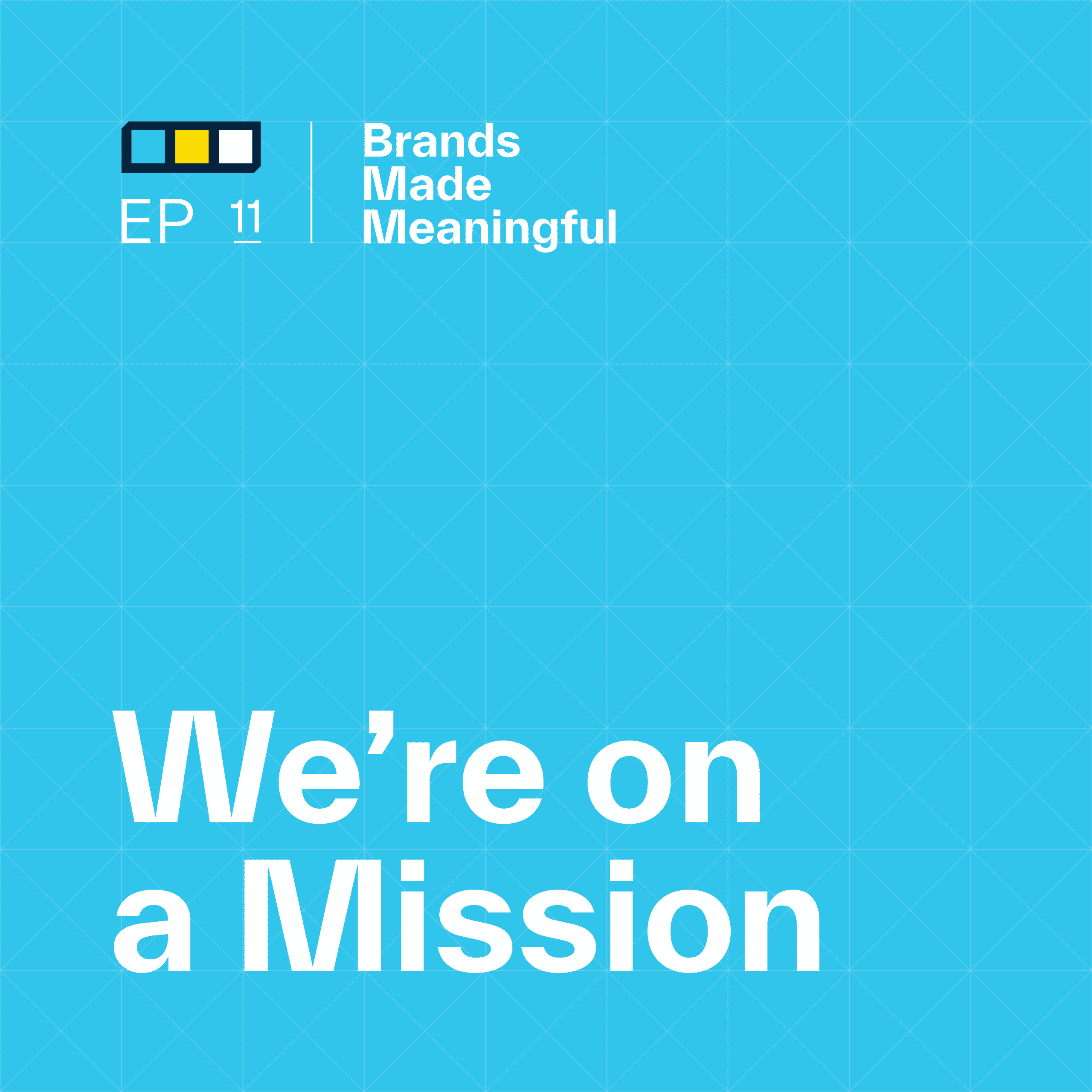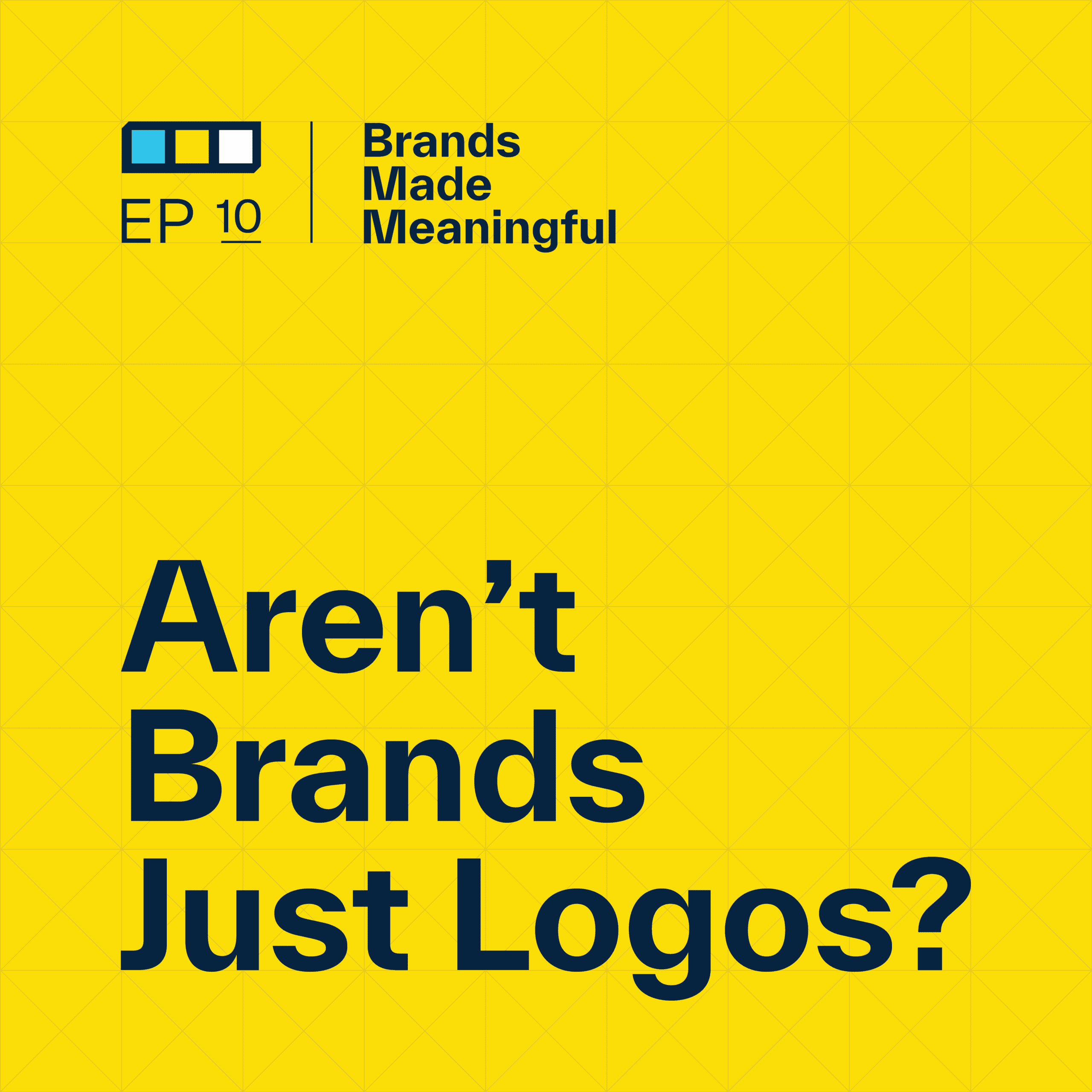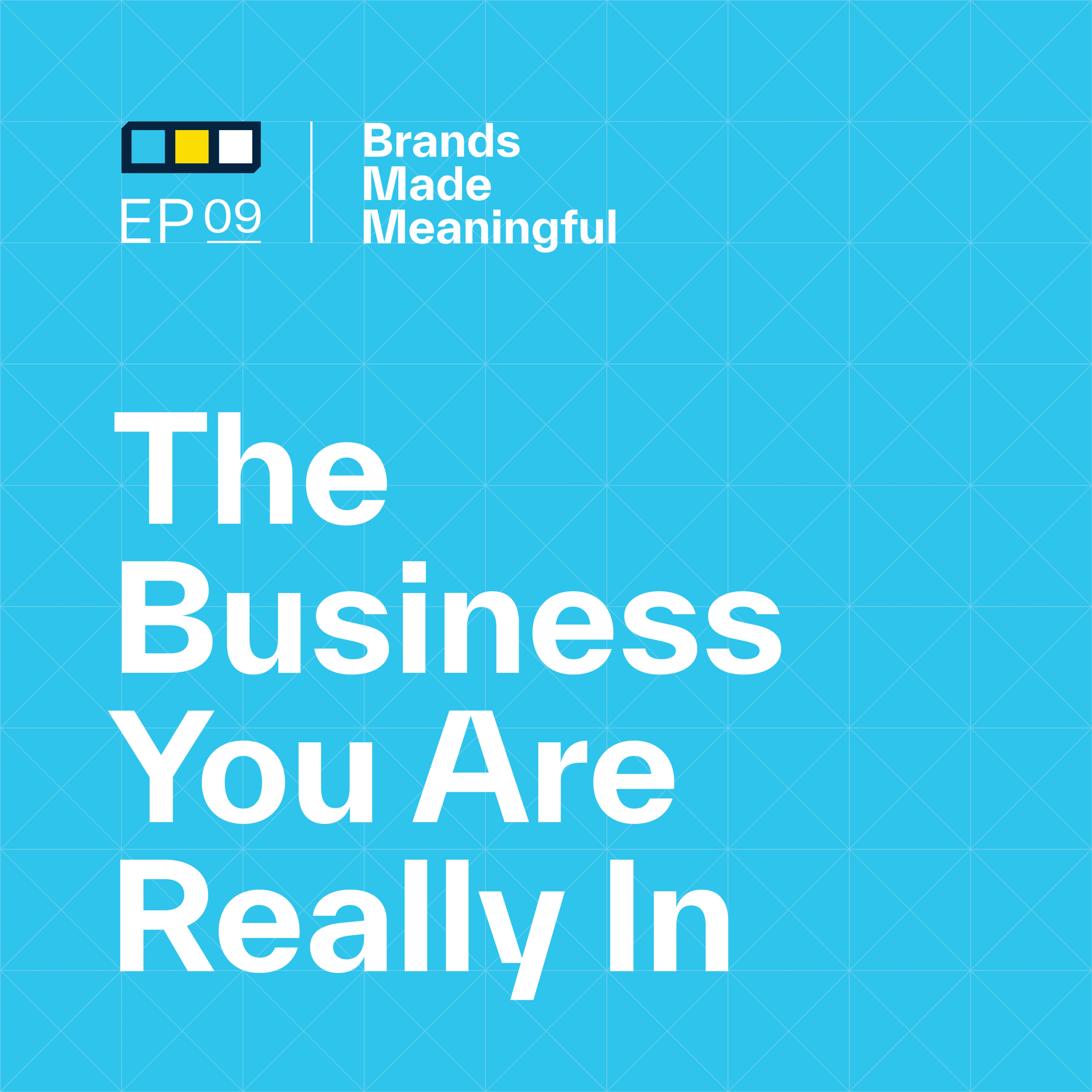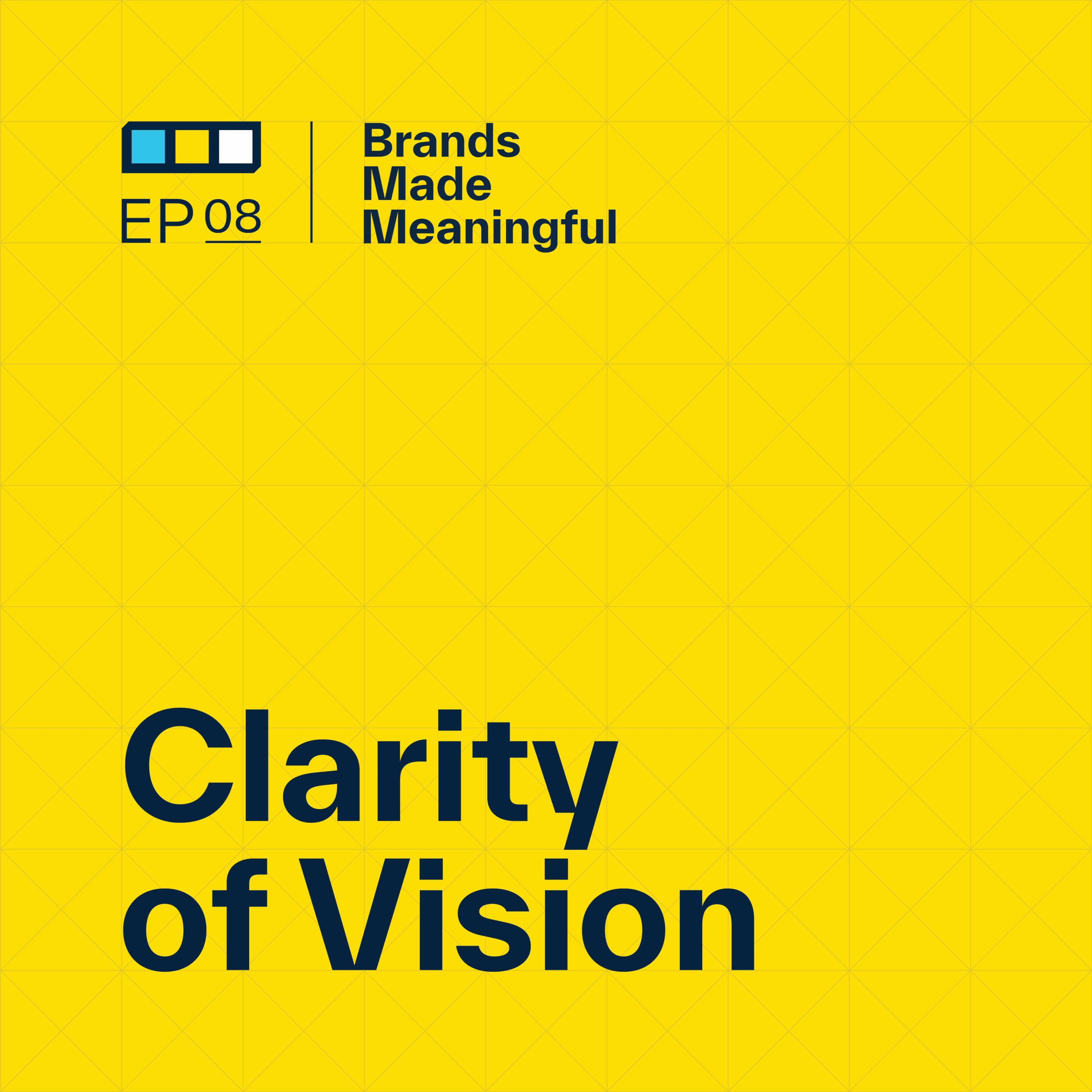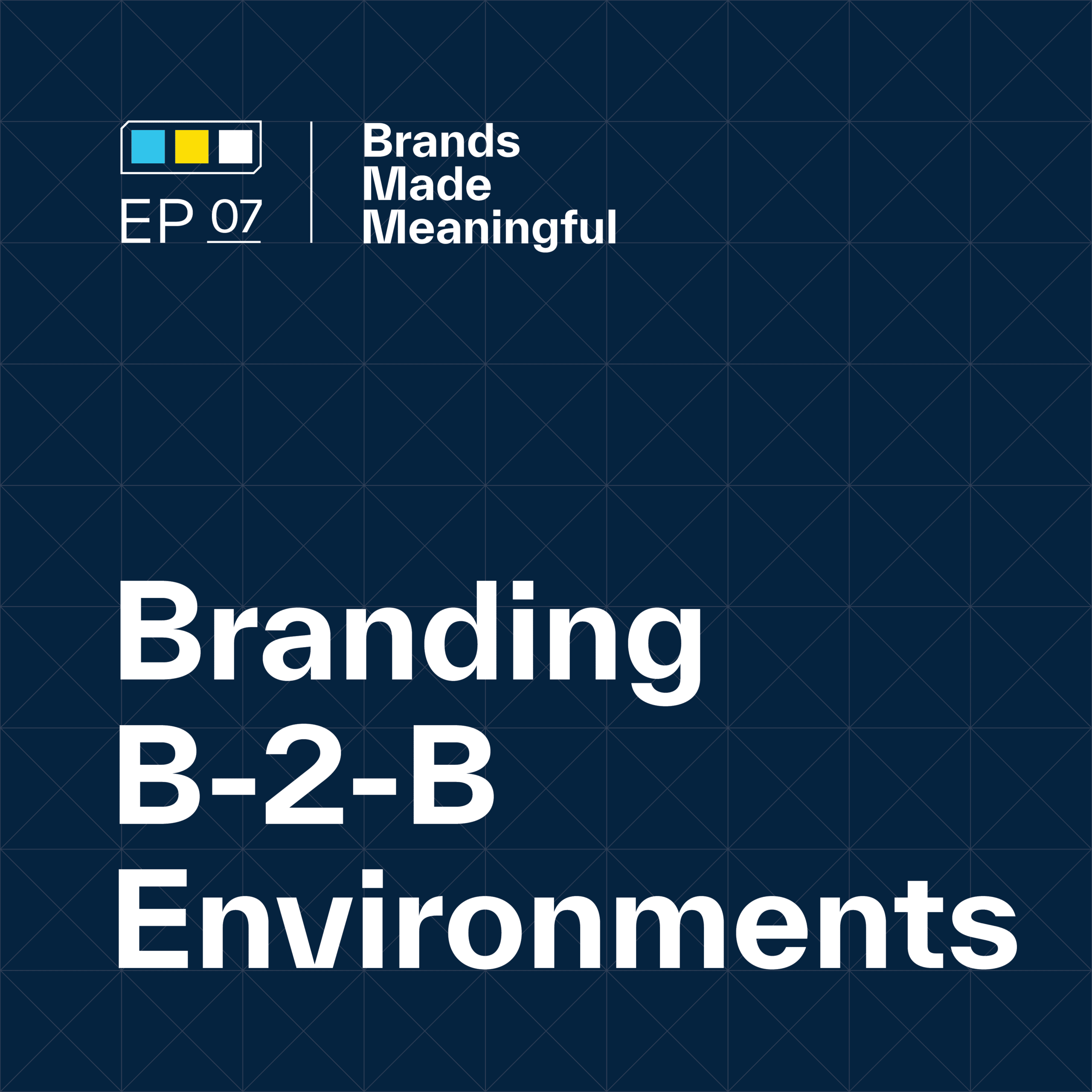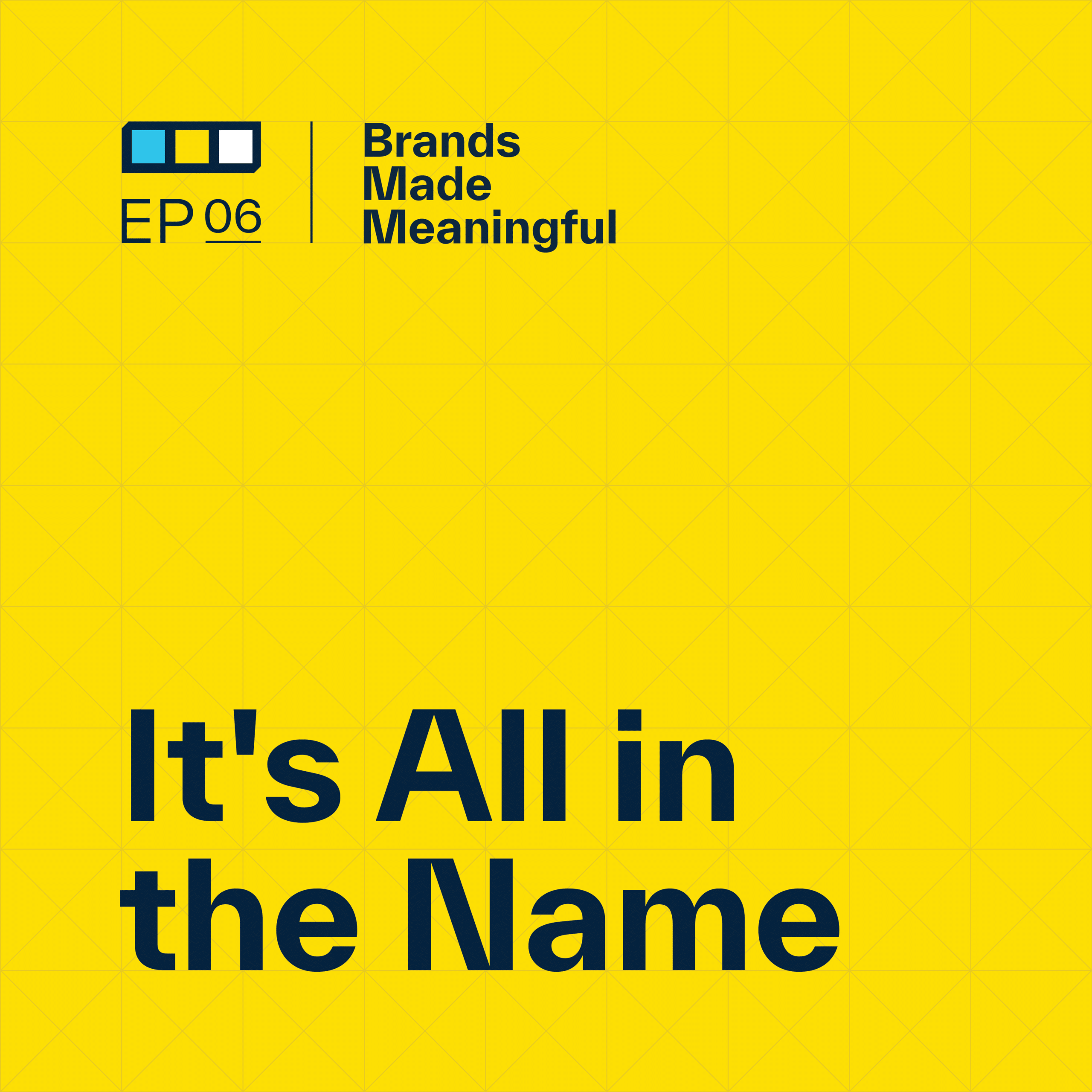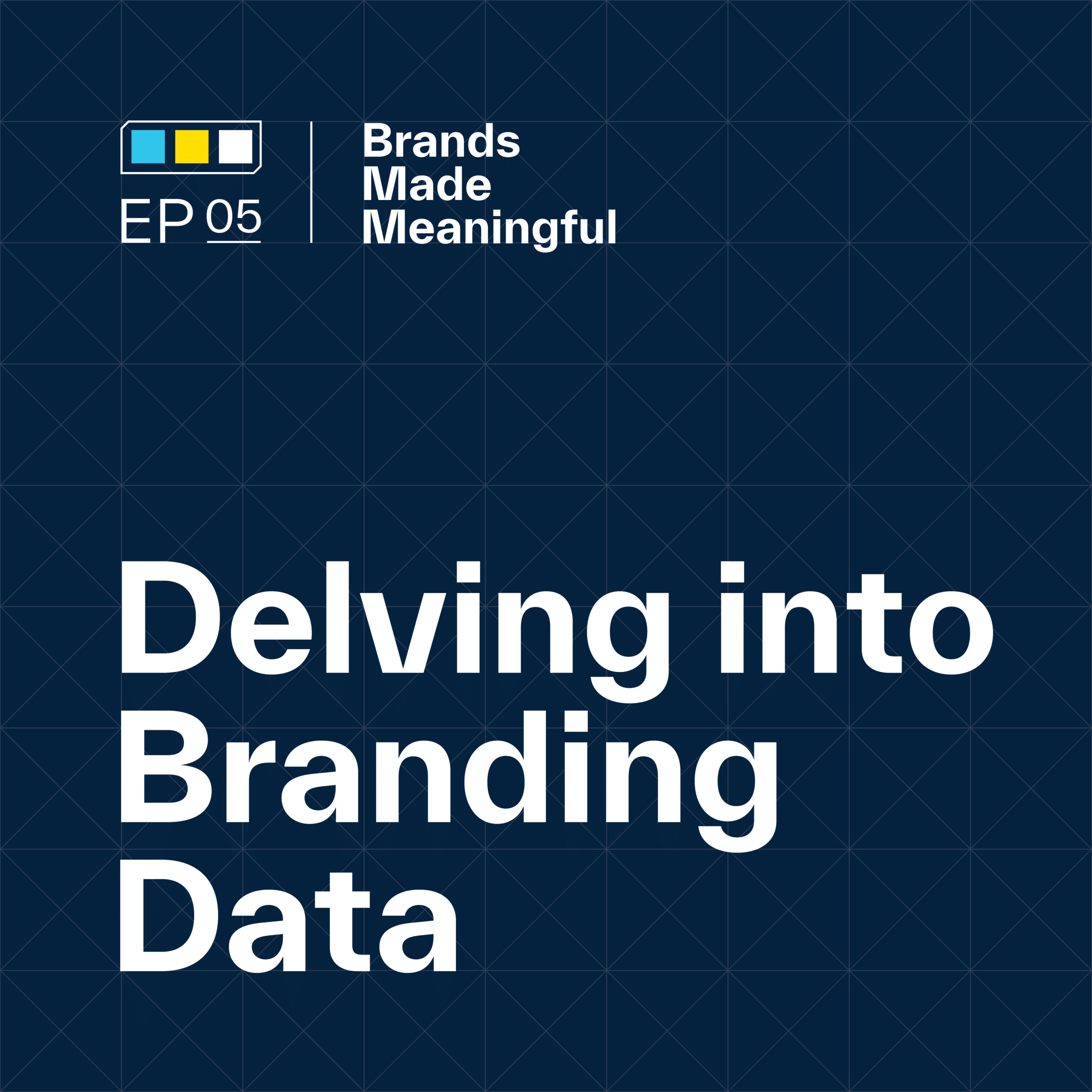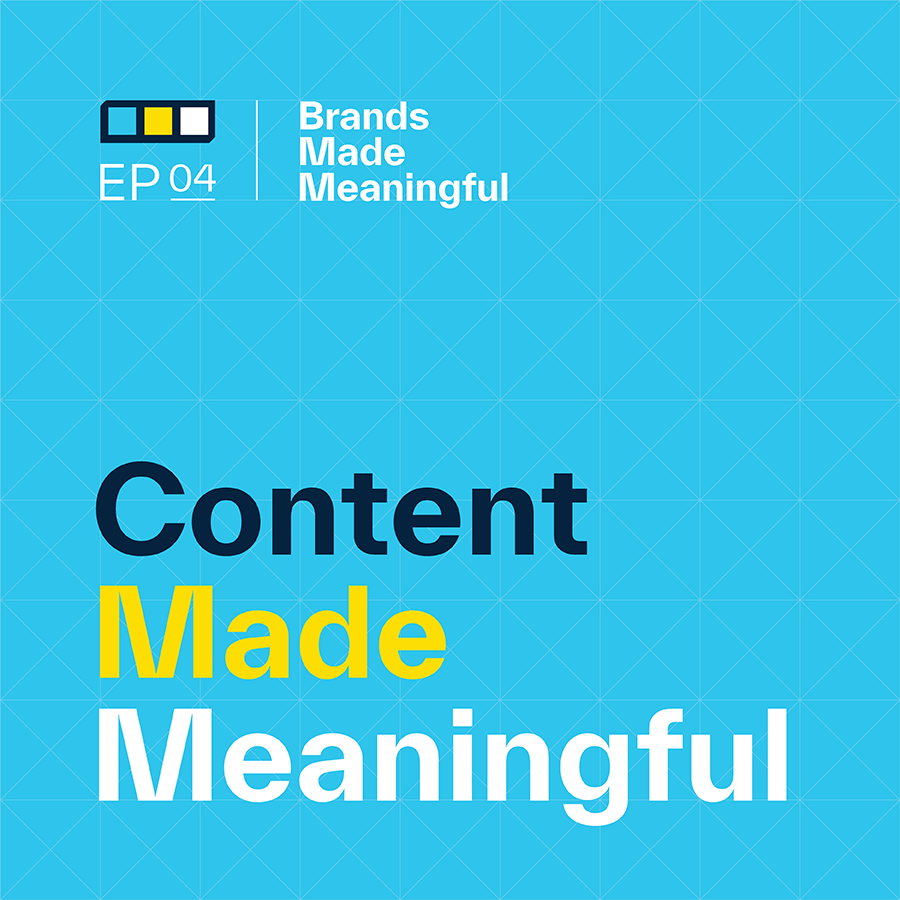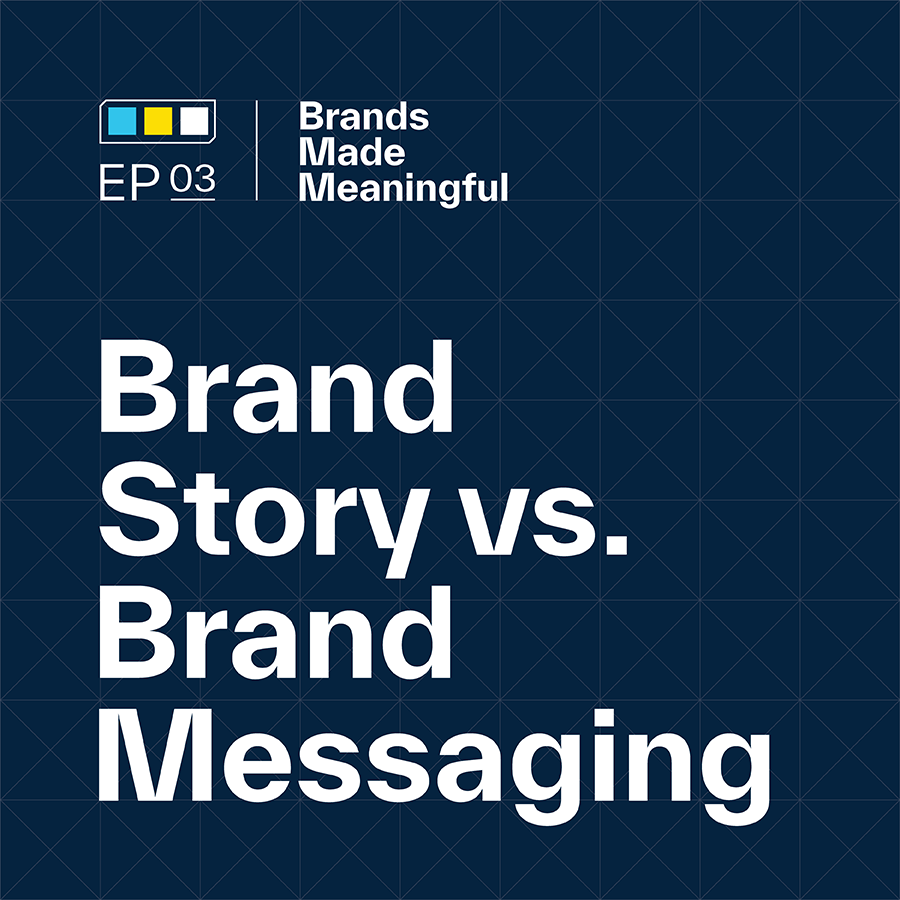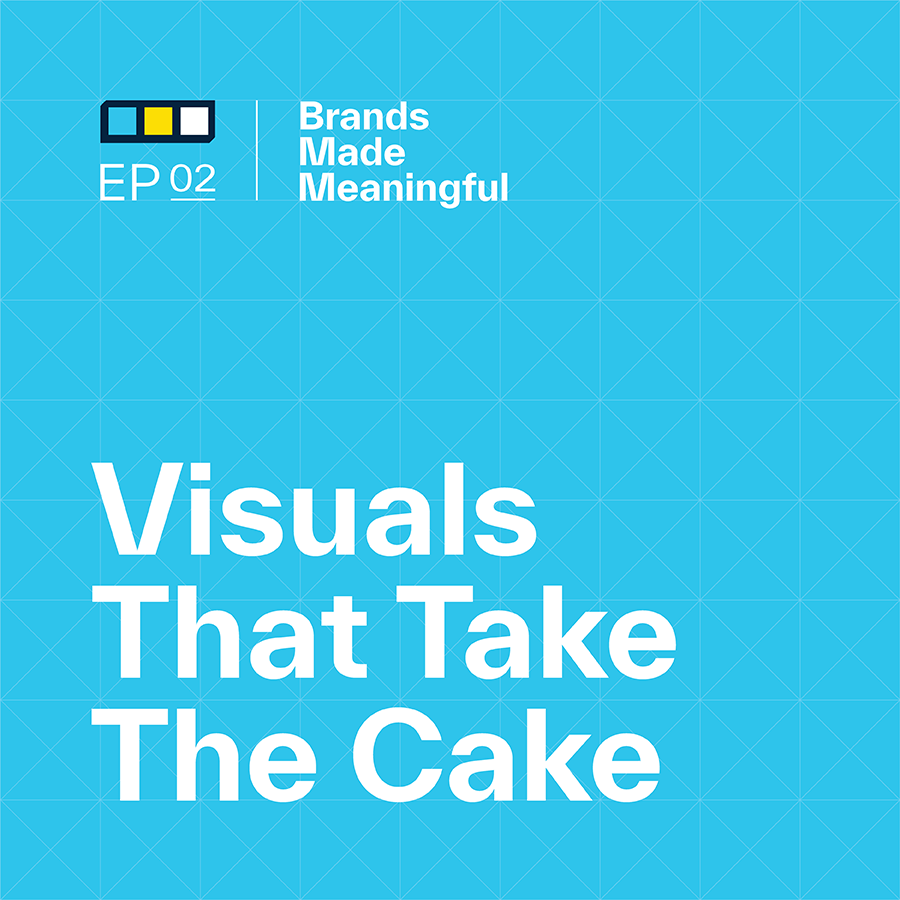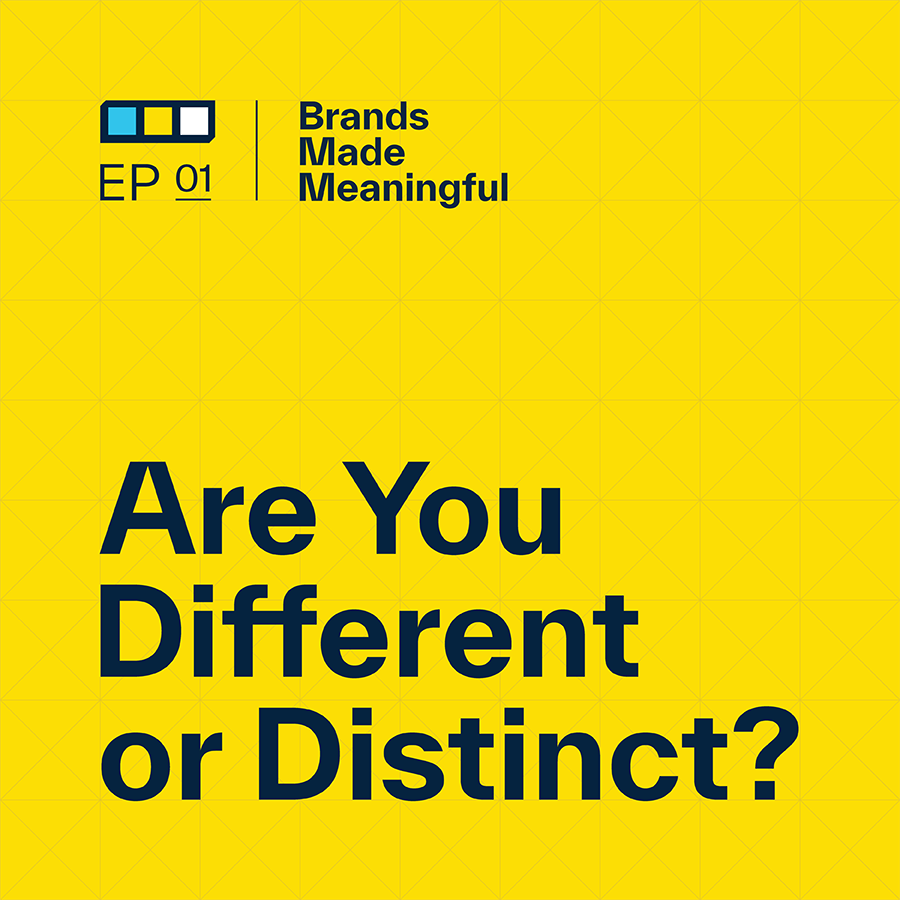EPISODE 84
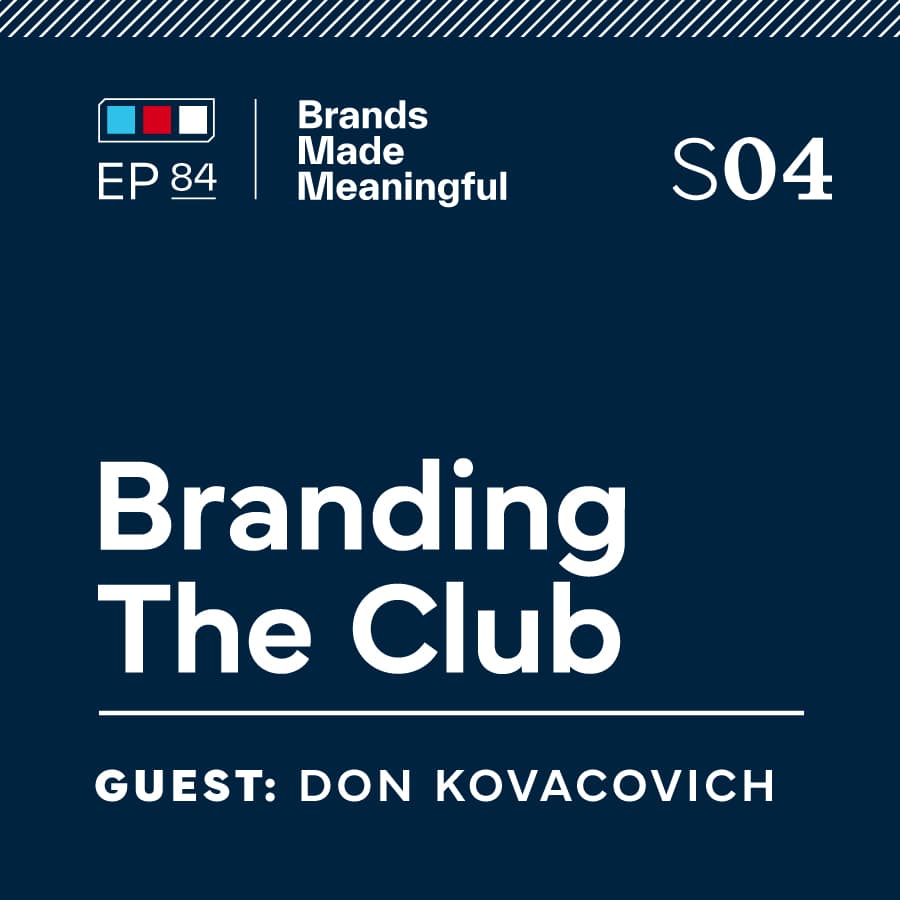
Branding The Club with Don Kovacovich
Episode 84
Don Kovacovich, GM of The Club at Golden Valley, joins Derek and Tucker to discuss the impact that rebranding has had on his club and the opportunity it presents for other like-minded organizations.
EPISODE TRANSCRIPTION
Today, we’re thrilled to welcome Don Kovacovich to the show. Thank you for joining us, Don.
Don You’re welcome. My pleasure to be here.
Derek In full transparency, our firm here at Sussner worked with Don and his team to update his club’s branding, which at the time was known as Golden Valley Country Club, up until the rebrand. Don, if my crack research team is correct, you’ve been with the club for over a decade, and most recently, for the last five or six years or so, have been the general manager. Is that correct?
Don That is correct.
Expand Full Transcript
Derek Give us a little bit of background. What does the GM’s role and responsibilities look like at Golden Valley?
Don Well, in season, when the course is open and everything, you probably have about 200 employees. So it’s my responsibility to run the company aspect of the country club. I have a leadership team of which there’s eight people who manage all the different divisions and the 200 people. It’s my job to give them the support and needed resources and financial tools to execute for the members.
Derek And you’re the iron fist when it comes to cracking down on backwards hats and performance golf hoodies.
Don Surprisingly, that doesn’t come up as much as you think, but it does come up a little bit. But for the most part, it’s a seamless situation with that. However, we’re in the member experience business. We’re not in the restaurant business. We’re not in the golf business per se, but people join a country club for experience, access, and all those things combined. It’s a different animal than a typical business model.
Tucker Talk about the reasons that a club was considering the brand. About a year and a half ago, this project started to come to the forefront for you. What was going on with Golden Valley that motivated the consideration to say, Our brand might not be what it needs to be?
Don That’s a good question. And we’re probably not a typical customer in how it happened. In 2018, we were in some serious financial difficulties and trying to figure out how to proceed and go forward. Then the pandemic hit, and lots of stuff just transpired. But what came out of all that is that we needed to upgrade the golf course and especially the turf. With the turf, you have Poa Annua. It just isn’t conducive to the Minnesota winters. And we’ve had many, many catastrophes with not coming out of winter properly. So regrassing became a number one priority as well as fixing sand traps and upgrading our pool. We didn’t have the financial resources to do all those things, so some members took it upon themselves to say, Hey, we have a little bit of access land on the fringes. Let’s sell it, let’s start the funding process with that, and then let’s assess the members. So we were through the pandemic, the last four years, two years of the pandemic, and then all of a sudden we’re going for regrassing. It happened very fast. We had a great amount of talented people on staff and in the membership who led us through the process. Unfortunately, money became a big, big focus, and we were focusing so hard on getting all these things done, we really didn’t think about rebranding until we were well on our way to fixing all that. And then somebody said, Hey, shouldn’t we be changing our logo? Now, nobody ever says, Should we be rebranding? That’s something from you guys. And we go, Yeah, we should get a new logo. And we’re going, okay, that’s kind of a subjective thing, a dangerous thing. And so we basically started talking to some artists and different things. And there was a team of three of us, two board members and myself. And I happened to reach out to one of my peers and asked him what he thought about it. And he said, I just did this. And he introduced us to you. We weren’t even looking for somebody at that point. But it all came very fast and furious. We knew we wanted to get it done before we reopened. I think when we contacted you in November, we were going to be opening the golf course the next year. So we’d had a very short timetable to get done. But it was very apparent that we were dated. We decided to engage you guys, and I think through the process, you guys really did a good job of detailing all this, and it became very apparent to us that, Okay, it’s not a logo. It’s the whole rebrand. You explained what the rebrand is. All of a sudden, it became apparent to us that maybe we could change our name too. We thought as a group behind the scenes that it might not be a bad idea, but boy, we’re taking on too much too fast. Let’s slow down a little bit. But I think you found out of the focus groups, I want to say 70 percent said, Yeah, we could change the name if it was a good name, but we don’t want to change the name if it’s not a good name. Long story short is it wasn’t a well-thought-out process. It was a process that evolved, and then we got in contact with the right people, which was your team.
Tucker You think about you’re doing a golf course, you’re talking about a pool, you’re talking about more tangible things that you can actually update, and members probably see that and say, We’re investing this and here’s the asset that we’re getting out of that. But brand, or what you would say is a logo, is a very intangible piece. It’s something that is really difficult for a lot of members to grasp. And actually, we hear a lot of challenges through the process with memberships across all the clubs that we work with. But to make it more tangible, how do you guys think about your brand now? And what do you think the value is for a club when thinking about their brand while they’re looking at modernizing facilities, modernizing amenities, and other tangible things?
Don It’s really, really important, and I should take a step back. My leadership team’s pretty young. And the F&B team especially said, We’ve got to update our brand. They’ve been asking for it during that period. We started learning and understanding that our memberships may be a little unique. They’re all what we call self-made people. They’re not very traditional in the sense that they didn’t inherit large sums of money. They are usually not second-generation wealth. They are professionals. They are lawyers, accountants, doctors, and dentists. They are professional salespeople who probably invested heavily in their education and then made it on their own. But they kind of have a little bit of, and they don’t like it when we say it, but I’m going to say it, a blue-collar mentality. They like to work hard and play hard. So we’re not traditional where we’re all coming and want to be super fancy and tell everybody, you know, I belong to the club and everything. They’re more about that they want to work hard, put in their 50 – 60 hours, but they want to have a resource to come and make new friends, hang out, and be able to have a good time.
Derek Don, we’ve worked with GMs who have come from various backgrounds. Some of them even kind of surprise me. I’ve met a bunch that come up through hospitality, some PGA pros, even a Meta Golf Course Super who’s now the GM of the course, but your background is in finance, correct?
Don Finance and real estate and sales. So I did kind of a jack of all trades, master of none.
Derek But if I’m going to stereotype somebody with finance attached to their name, CFO, CPA, people that work in that industry, I tend to think that those are typically people that aren’t apt to spend a lot of money or would look at something like a regrassing project for a course or a rebranding initiative for a club as a cost versus an investment. Without sharing sensitive information, when whoever that was, whether it was a member or a board member, came to you and said, Hey, we need to be thinking about the brand in addition to this regrassing project and the pool renovations that we’re doing. How is it viewed from inside a club as a cost versus an investment in our long-term? How does that conversation go?
Don That’s a great question. I’m just going to start with my background. Although I’m heavily into the accountant controller role, when I first came here to solve financials, I was always looking at how to spend less money and get more out of it. I got an education fast and probably came through the CMAA, which I know you’re familiar with as well. And just being close to the GMs and the industry. So a lot of people thought that I wouldn’t want to do any of this or spend any money. But the minute they made me the GM, my role with title responsibility shifted. I’m a hundred percent into member experience. I’m not worried about the budget. I’m worried about how we’re going to grow this club and make it the best it can be. So, to answer your question, I was for the branding the minute it was brought up. And I was glad someone else brought it up because usually if I bring it up, everybody has to question it and go through a process. But because it became organic through the board, I said, You’re absolutely right. We have to do this, and do we have the money? Well, we can always find the money. It’s not a big deal. There were some comments about why you would spend that much on it. And I go, You don’t understand. By upgrading our brand and identifying our marketing materials, if I can bring in three or four members, this is a no-brainer. You have to gear it towards the next members. So there was a lot of brushback from people in their 60s, 70s, and 80s. This is ridiculous. Why waste the money? And then finally, some of them who got it would say at the table when we were talking, We’re not doing it for you. We’re doing it for the next generation coming in. We have to attract people. Why do you want to join? Why do you want to come? They don’t want to come here with a bunch of 65 and 70-year-old people. Come on. Think this through. And if you want to keep your dues reasonable and the membership growing, this is the cheapest investment you can make. So I think we educated the ones fast. I think the problem with the ones who thought it was a waste, they like the old crest logo, and that’s what they viewed it as. But once we rolled out the new logo, there were very few people saying, I like the older logo. And the old logo was great in its day. It’s a crest. That’s not what a country club is anymore.
Derek There are two things you touched on that I think are some of the most interesting parts of the conversation that we’ll have, especially upfront with the club. One is speaking to member experiences, your ultimate goal. And how do you put ROI on investing in a regrass or investing in a brand? And you even alluded to two or three new members. And we at least have the branding initiatives paid for. And then after that, it’s all upside. So, that ROI topic is interesting to me. And the other one is the balance between respecting the older generation of the members and keeping them engaged and feeling included and represented by the club and its brand while also intentionally working to continue to attract the next generation of members who ultimately are going to keep the club growing and healthy.
Don I get that a lot, and I understand the whole concept of ROI, but in our business, nothing we do makes money. We collect a lot of dues from members, and we divide it up into different areas and create experiences so that when you come to the club, you’re having a great time. I can’t put an ROI on it other than this way. Is it the success? Is the club successful? Is this club happy? Is the club growing? When you measure it to your peers on where you stand, have you improved yourself? I think we can check all those boxes. It’s pretty easy to see that it grows fast, and it’s a great success. And as you’re bringing in new members to the club, they’re saying how great this is, Wow, this is cool. What you got going on here? So I think that’s how you judge it is by response. You can’t put a dollar amount on it. You really can’t. However, I would caution my peers to say that in a ten-million-dollar business, I collect ten million and spend ten million. The amount we spent on this is really nothing. It doesn’t even register.
Tucker When we look at that brand versus logo conversation, you’ll say, a member will come in, and maybe outside the club, you see the logo. But when you’re in the club, when you have all the experiences, I think of all the tournaments that we helped work through with you guys, or some of those other pieces or marketing materials, or even food and beverage materials, and looking at all of that and saying the difference between a brand and a logo is huge. When you’re looking at the process before you dive in, when you are looking at all the opportunities out there, I know we weren’t the only people you talked to about doing this type of project. What were the pros and cons, the differences between the different partners that you considered thinking about us versus maybe the designers that you talked to that just did logos?
Don Honestly, it was the referral I got. You had just worked with a close friend of mine for 30 years, who’s very knowledgeable in this business, not just locally, but nationally. He just said, You need to talk to these people, they’re good. That means more to me than anything – somebody’s word that I trust because I can do 10 interviews and in the end, I might have five good people, and I don’t know them from anybody else. So really what came to decide that is knowing that somebody else used a vendor, and it just doesn’t apply to branding, but in everything I do, if it’s a contractor or any partner I use. Referrals are huge, and you guys came highly recommended. So once we engaged, once we saw who you were, it wasn’t a tough decision. If you remember, there were four of us to begin with. And the first question out of the others to me, once again, I’m the controller, the guy who said no before, and now I’m the GM. They’re clearly the best, but can we afford them? And I said I think you’re asking the wrong question – can we afford not to go this way? And they go, No, we can’t. I said, then, All right, let’s proceed as follows. I get it when people say I could go do a logo and maybe pay $10,000 or $15,000, or I could go a whole package and may be talking eightfold of that or something, just depending on how much you want to do. I’ll repeat in a 10 million dollar business that’s not something you want a skimp on. And I think we have up to that point just because we’re always watching our pennies and thinking our dollars would grow. But once again, we’re not here to pay dividends. We’re not here to pay taxes. We’re here to come for an experience, so it’s like a fine restaurant. Okay, I can eat at McDonald’s, or I can go to a five-star restaurant, or somewhere in between. It’s all about what you want.
Derek At any point in the considerations, did you or would you recommend to a club that, from the branding standpoint, either have their in-house marketing team take that initiative on or hire a member who maybe has some background with that type of experience?
Don Good question. I try not to hire members because that gets very complicated. So I always, as a rule, would probably not go that route. But there are times when we do hire lots of members for different things. But for the most part, that gets very complicated. I think it’s more of trying to get the best information you can on a comfortable level. And what happens is a little bit out of my forte, but I’ve seen it, been involved in it, and I know when I see something good happening fast. So that’s the part that happens. Can you do it in-house? There’s only maybe one or two clubs that could do this in-house, and that’s because they have a big staff. But they would never do it in-house because they can afford to go outside and then have the in-house people maybe execute the plan. But I don’t think you ever want to go in-house with something like this because I don’t think you have a good enough wide range of seeing what’s out in the whole world. I’m not an artist, so I’m the wrong side brain, but I think you guys need to see a lot of stuff. And you do see a lot of stuff. If I had an artist and it’s the only thing he knew prior to this, or she knew was Golden Valley Country Club, it’s hard to believe they could figure this out.
Derek You also mentioned to me that one benefit on the side was who owns the criticism?
Don Oh, yeah.
Derek And you were basically able to say during this process, as members are frustrated, we can blame this third-party vendor, this consultant that we’ve hired, versus our in-house team or a member that we have engaged, and they can take the brunt and help us through that.
Don And if you think about it, it’s a little more complicated than that. If we did it in-house and we own it, people are going to question our credibility because that’s not what we do day in and day out. You bring a professional to the table who has many, many successful things going on, it’s a little harder to take shots at you. However, your business is very subjective. But I think you employed, correct me if I’m wrong, a ton of science and data to direct you to where to go. It’s not just somebody thinking, Oh, four-leaf clover. I think that would be nice for you guys. I think some of that happens, but your approach was based on science, data, and interviews. And then creativity came into the process. It wasn’t creativity, and then, okay, let’s go manipulate some data to show everybody this is what we’re doing.
Tucker I think that becomes important through our process when it comes to identifying the challenge versus assuming the challenge. And with you guys specifically, like you say, the name wasn’t even on our radar because we’re not there to organize the challenge in the way that fits our agenda the best. Our job at that point is just to understand what all the things are that could make this club better and why those things are, and then we can creatively solve that, and I think that that becomes really easy. You had said earlier that you actually had a great committee that you had put together that had a bunch of evangelists on it that said, Hey, I’m willing to go to bat for this type of work. I’m willing to talk about this work. But I’m also willing to admit that we haven’t been what we needed to be for the last couple of generations, and we need to improve ourselves. And that’s critical too, to have a committee of people who are strong, but they can be critical of their own club, which can sometimes be a challenge.
Don It was easy for us because we hit the pinnacle. I shouldn’t say the pinnacle. We collapsed in 2017, 2018. Basically, on the verge of bankruptcy. So we worked super hard to dig ourselves out. And as we were evolving and using the data from CMAA or Club Benchmarking and all those things, we knew what we wanted. We just couldn’t go as fast as we wanted, and that’s why it probably came to the point when we were doing all that. And someone said, we should be doing PICO. Yeah, this is a step. We had 12 things on the wishlist. So it kind of shut down the wish list til we quit spending millions of dollars on other things. Everybody just said, Everybody sit tight now and make sure we got this nailed. And then once we knew we were well on our way within budget, it was easy for the board to jump on. It was a big risk for boards because boards don’t like to make decisions that are controversial. They’d rather push them down the road. They’re a volunteer group of people, and they’re professionals, and they are a little worried about what their friends would say. But once they saw where we were headed and where we were going, we also took away the decision. We weren’t asking for them to pick the brand or pick the logo. We showed them what the results were. They were relieved because they could honestly say, Okay, I didn’t have to pick between three. Because it would leak out, and the answer would be, What were the other two? And probably some people in the community would have said, Yeah, I like that one better. And we learned a long time ago, you can’t really do that because you can’t rule by the majority. It doesn’t work. And the majority of the people who come here come here to have a good time. They don’t want to think hard and do a lot of that stuff. So that’s kind of the unique thing. Fast – you guys framed what we’re doing. I know we were a little nervous. It’s the first time I’ve been involved in that. I don’t know if you remember when you left the room after that, I don’t know if you had a good read. The three of us who were in there on that decision and that committee – actually, it was four of us – and then we all looked at each other. We didn’t say a word. The rest of them raved about it. We knew we nailed it. We didn’t have to sell it at all. You did a good job of saying this is where we ended up and why we’re here. And very little blowback. I was shocked because it’s a very complicated and controversial thing to do.
Derek You once said, you even mentioned this a little bit earlier in this conversation, that in the club business, we’re not about making money, we’re about making experiences. Can you speak to the impact? You’ve now had one full season at the club with the updated brand, messaging, and marketing materials that have permeated the club. Can you speak specifically about any member experiences and the impact that the updated brand is starting to have?
Don I think there are subtle changes, but the biggest change, of course, is the Pro Shop. Our Pro sells a lot of stuff. With the old logo, people wore it with pride. But if you looked at it, very few people even knew what it represented. Now people are wearing it, and their friends are asking them, Oh, that’s nice. Why is it that? Why does it look like a horn? Why does it look like this? The biggest impact is all the discussion we get amongst it. The pride of wearing it if you’re in a member tournament, the amount of decor that has switched to the new logo, it’s huge. I want to say 80%, and I don’t think I’m exaggerating. There are a lot of people who have so many clothes from before, they might sneak in the old logo. When we did the member-guest, giving them all the new logo, they loved it. Their guests came in and bought logo because they wanted to show how cool this was. So, I think it’s the sense of pride that, hey, we came from being almost broke, to being financially sound, to redoing our golf course. I think people walk around with a lot of pride. And the other area is, on the F&B side, we do probably a hundred events, some as small as just maybe it’s pasta night, but as big as Halloween and Santa brunches and Christmas parties, and all the different things we do. It really helped market them. If you see the flyers, the emails, you shouldn’t say flyers, but they’re flyers in an email, but all the artwork that goes in around that logo now is great. Before, I hate to say it, but it’s like England, and it just had our seal up in the corner. But now it’s evolved, and everything’s going around it, the menus and all that. People really really love the colors, everything has come into play. And honestly, we just scratched the surface. We need to fund in our next budgets to continue to change everything. We still have a lot of stuff that needs to be switched over, which will be fun, too. We did some stuff on the outside of the club. I know you’re helping us too. Interesting story, our sign blew down. Nobody noticed because once they drive in, they start seeing the awning and all that. It shows the impact once they start seeing everything. And as simple as when you put together a print for us of our logo, the comments I get from people that come in and go, What the heck is that? That is so cool. So that’s our new rebrand. Really? And they’re looking at, Wow. So I’m just saying, as simple as that, too. So it’s a lot of positive feedback.
Derek One of the key components that happened during the early stage, what we would call the strategy stage, before any creative happening happened, was helping kind of refine and clarify what we think of as the vision of the club. You mentioned the data and the research. One of the things that we heard from the members that we spoke with through the survey and the member research was the desire to understand what the future of the club looked like. You talked about where it came from and the sort of ashes that it rose from, and that now it got to a healthy place. But most members, and I would say staff, wanted to know, okay, what’s next? And why is the club deciding to do one thing versus the other? What’s helping feed that? In finally landing on a kind of clarified vision around experiencing life well played and clarifying who the target audience was, do you see impact out of that work, especially even thinking about the staff and the culture, and the values of the people on your team?
Don Yes, maybe not like you were thinking, but we have had a well-thought-out long-term plan of things we want to do. We just haven’t figured out how to fund them. But by adding the brand in that, that helps so much because as we’ve been rolling out and doing things, the brand becomes important, and the people are proud of it. And what also comes out of it is that although they were assessed and had to spend a lot of money, you’d think, okay, now you can’t assess me for more. No, they immediately were asking, what’s next? What’s next? So once it’s kind of proven that you have to deliver more member experience, that means more amenities, which means more members, more branding. They’re all intertwined. Without one, the others don’t become successful. So I think it all came together luckily. And if you think about it, that’s not supposed to happen. But by investing back into the club, by investing in the name, by investing in the rebranding, the desire from everybody is this: okay, this is working out good. You know what? I’m willing to maybe do some more things. When can we change this? Add this amenity, do all that? It’s hard now, I have to put my hat on and say, Everybody, we gotta just give it a year’s break. Well, they’re not really willing to do that. They’re saying, All right, we’ll give it a year’s break, but you guys better start planning. What’s next? We want this, we want that. So I think it’s all intertwined. If I didn’t have a good brand, a good plan that way, if I didn’t have a good vision on what the next steps are, they all help really big time, and they tie to each other. What’s important coming out of it is the brand creates pride. Ownership. So as a member, hey, people are talking about me. And I think you’re aware that we put together a huge social media campaign to attract new members because that’s what we had to do five years ago. And we kept that engine going. And as a result, the branding gave us lots of fuel for that social media campaign, and I can tell you I have a lot of peers calling me all the time, What are you doing over there? What’s going on? They want to know all the different things. You tell me if I’m wrong, but don’t you see it? They’re all so intertwined that without one, you’re missing something.
Tucker I think that you’re absolutely on the point. You may have a vision or you may have at least an articulation of, okay, here’s what we want to become as a club, but it’s hard to actually tell that story to a member or have them believe it without showing them some kind of progress. And so this brand can be such a tool for a club that says, We want to be this new person. How do we start moving into that new identity? And that’s so important when we think about clubs trying to just get members to buy in on where they’re going and saying, I believe you. I’m excited about that. I’m ready for the next chapter of this thing.
Don Here’s the balance, and you probably know the data. You probably studied it too. The average age of a person joining a club today is 41, married, and has a family. However, I can’t do everything for that one target group. I still have to blend the 50, the 60, the 70, the 80-year-olds, and a healthy club has a balance of all of those. The brand helps pull all those generations together because one thing is in common: they play golf. They love golf. Okay, we got that. They have a pool. Do they all want a pool? No, but the younger families do. But you have to pull all together all the different things that they want and make them feel proud about their club. And once again, I think the proud factor is celebrated in the new logo, in the branding of the new name, and what their friends are asking them. And we become very successful in our own work role.
Derek Earlier, when we asked you the ROI question, you said, Hey, if we get two or three new members out of this deal, we’re going to be doing great. Did you get two, three new members?
Don Well, last year we got 34 new members. So we don’t know the answer, but did it help? Absolutely. Cathy will tell you when she’s selling and showing the marketing materials, showing what’s going on, taking them through the pro shop, the flags, the markers, they play the course, and all that, the brand is all over the place. It’s in our shirts we wear as staff. It’s in our philosophy of member experience. I think it’s bigger than two or three, but I don’t think there are three people who joined because of it. I think there are probably 20 that looked and said, Hey, this is pretty professional – maybe 25 of them. There wasn’t one person saying, I don’t like what you’re doing. And the ones who haven’t joined yet were really, really close to being on the edge. For whatever reason, they’re sitting tight for maybe another year or so. I don’t think we’ll ever know the true answer. But is it a success? Without a doubt.
Derek Last question. For GMs in particular, maybe board members too, but specifically for GMs of clubs who, for whatever reason, maybe they’re going through their own regrassing or they’re going through a transition like your club did. Is there anything we missed today that would be some sort of advice that you would give to them if they’re thinking about taking something like this on?
Don Actually, if you’re doing a regrassing, it’s the perfect time to take it on. I think the financial question probably restricts it because there are so many unknowns when you start spending millions of dollars on a project on grass and bunkers and all the other things. So it tends to get pushed to the back, but you actually have plenty of time to do that. And I would think if yours hasn’t been updated for a decade or two, it is the perfect time to do it because you’re going to come out, you’re going to celebrate all these new toys, a new environment, and everybody’s going to be very happy about the situation. It’s probably a good time to do that. It’s one more component. And, as a result, we lost about 60 members because of the assessment. So we planned on that, but we knew we had to replace them, which we have done. But you need all the tools you can, and then you can see. So I can tell you that the people who quit have all come back and probably played the course, saw what we’ve done. And, honestly, they’re regretting their decision. So I think that’s all a big part of it. You have everybody on board, even those who left, who are saying, Wow, that’s pretty significant changes. So you’re going to change your golf course, and you’re going to add some amenities. It’s really a good time to blend all that together.
Tucker Yeah, the brand is the package for everything. It goes on every amenity, it goes on every experience. And so if you think about the outside wrapping of that package, does it look, sound, feel great, doesn’t feel like us, then that does a lot. But to say we can really tell a great story and do a great work across all of these amenities for such a small amount of investment, it is just insane for some clubs not to do.
Don The one part we probably haven’t figured out is that a mission statement is important, but sometimes people use their mission statement as their brand. And I’ve never figured that out because I don’t need a paragraph saying what we’re trying to do to be my brand. The brand has to be out there and organic and living every day. It can’t be a plaque on the wall with your statement. Everybody reads all those, and I get it, but to me, I think people make the mistake and they focus too much time on a mission statement. I think your mission statement will evolve once you’ve identified your brand.
Derek We would say that the brand isn’t one thing. It’s not the logo, it’s not the mission statement. Your brand is a thousand things experienced in all kinds of ways every single day. Don, if somebody is interested in the Club at Golden Valley, and checking out more about what the membership is like, what the culture is like, or looking into potential membership or hopping on that waiting list, where would you direct them?
Don To me, and I’ll get them to the right person. Also, Cathy Zablocki is my assistant GM, and she is also our membership director, and she’s been doing it for a long time, and she is very good at it. But we’ll answer any and all questions for you. And also, anybody out in the industry who has any questions, feel free to call me. I know I’ve probably received a dozen calls from different people and tried to steer them your way. Both Tucker and Derek, you guys, your team’s been second to none, and it’s been a great experience.
Tucker Really appreciate it, Tom.
Derek So people that are interested, so it’s in the notes here, the website is theclubgv.com. And I know that you guys are super active on Instagram also. And if people are interested in seeing the process, we have a case study on our website, sussner.com/work. And it’ll actually give you a deeper dive into some of the process and the visuals, and the language that came out of the strategy that we talked about. Don, can’t thank you enough. Appreciate your time today. Thanks for joining us.
Don My pleasure and thanks to all you’ve done to help us with the Club at Golden Valley.
Derek Thanks, everybody. Until next time. Sussner is a branding firm specializing in helping companies make a meaningful mark, guiding marketing leaders who are working to make their brand communicate better, stand out, and engage audiences to grow their business. For more on Sussner, visit Sussner.com.
More Episodes Like This
Why Great Clubs Still Struggle with PerceptionEpisode 93
Derek and Tucker discuss the intricacies and challenges of creating and maintaining perception in the private club industry.
How Course Architecture Shapes Club Identity with Drew RogersEpisode 92
Derek and Tucker are joined by Drew Rogers, a seasoned golf course architect, to explore the intricate relationship between golf course design, identity, and culture.
Brand’s Role in Club MarketingEpisode 91
Derek and Tucker break down the importance of a strong brand for marketing your club in order to attract right-fit members.
Taking Care of the People Who Take Care of People with Craig PrattEpisode 90
Derek and Tucker are joined by Craig Pratt, co-founder and board chair of the nonprofit organization Holes Fore Hope.
Reviving New Member InterestEpisode 89
Derek and Tucker explore options for generating interest among prospective members and inspiring them to join your club.
Brand Through the Eyes of a Club Manager & Consultant with Chris CoulterEpisode 88
Chris Coulter, Vice President of Club Consulting with the McMahon Group, joins Derek and Tucker to discuss the intersection of branding and consulting in private clubs.
Evolving Member ExpectationsEpisode 87
Derek and Tucker dive into the differences between generational club members, their wants and needs, and how to balance out expectations across the board.
Winning the Talent Game with Tom WallaceEpisode 86
Tom Wallace of Kopplin, Kuebler, & Wallace joins Derek and Tucker to discuss the importance of a club’s brand in hiring and retaining right-fit employees.
Reclaiming Reputation Through Brand RevitalizationEpisode 85
Derek and Tucker discuss the potential that a branding initiative can have to restore a club’s reputation.
Branding The Club with Don KovacovichEpisode 84
Don Kovacovich, GM of The Club at Golden Valley, joins Derek & Tucker to discuss the impact that rebranding has had on his club and the opportunity it presents for other clubs
Changing a Club’s Membership ModelEpisode 83
Derek and Tucker discuss key considerations and challenges when changing your club’s membership model.
Connecting a Club with its Story with Jackie CarpenterEpisode 82
Derek and Tucker are joined today by Jackie Carpenter, author of People First.
Branding a Club AnniversaryEpisode 81
Derek and Tucker discuss the unique opportunity presented by milestone and anniversary dates for private clubs.
Private Club Storytelling with Ricky L. Potts, Jr., CCMEpisode 80
Derek and Tucker have the pleasure to speak with Ricky L. Potts Jr. about how powerful storytelling can be for your club members.
Opportunity in Club Facility RenovationEpisode 79
Derek and Tucker discuss pivotal key moments in your legacy and how to transform your story through renovation.
The Evolution of Club Members with Jon LastEpisode 78
Derek and Tucker are joined by Jon Last from Sports & Leisure Research Group to discuss the evolution of club members.
Member Branding vs. Product BrandingEpisode 77
Derek and Tucker discuss the challenges their client's have moved through when approaching differing styles of branding.
The Role of a Private Club's LogoEpisode 76
Derek and Tucker take a look back on private club logos they've designed over the years and explain the strategic reasons behind their choices.
Club Brand GovernanceEpisode 75
Derek and Tucker divulge the steps to evolving your brand while retaining your core values.
Seasonal Member MerchandiseEpisode 74
Derek and Tucker take a look at crafting specific merch to celebrate landmarks and special times of the year.
Who is Sussner?Episode 73
Derek and Tucker take a break from talking shop to talk about who they are and what they stand for.
Club Identities Beyond AmenitiesEpisode 72
Derek and Tucker discuss what it takes to stand out in unique ways for your club.
Little Things Mean EverythingEpisode 71
Derek and Tucker take a look at the often missed and easy to overlook.
Build Flexible Brand SystemsEpisode 70
Derek and Tucker break down the building blocks for long lasting branding.
The Club at Golden ValleyEpisode 69
Derek and Tucker take a close look at one of their recent rebrands.
When to Launch a Club RebrandEpisode 68
Derek and Tucker break down how to find the perfect timing when launching a club rebrand.
Steps to Launching a Club RebrandEpisode 67
Derek and Tucker break down the steps to take and the reasons why you should consider a club rebranding.
Brand Marketing vs. Brand DesignEpisode 66
Derek and Tucker define the line between marketing and design and how they intersect to inform one another.
Building Brand GuidelinesEpisode 65
Derek and Tucker show us how to build infrastructure guidelines to unify your brand experience across the board.
Club Identity SystemsEpisode 64
Derek and Tucker cover what Identity Systems entail and how to discern between internal and external methodologies.
Navigating Branding With a BoardEpisode 63
Derek and Tucker bring clarity to uniting your company under one cohesive vision.
Putting a Committee TogetherEpisode 62
Derek and Tucker assemble your need-to-know facts when putting together your committee.
The Guiding Principles of Private ClubsEpisode 61
Derek and Tucker go over the top ways private clubs can find the balance between pleasing old members while attracting new ones, all while making moves towards the future.
How Color Affects PerceptionEpisode 60
Derek and Tucker cover how to best convey your business with color.
Brand EcosystemsEpisode 59
Derek and Tucker break down how to craft effortless experiences when considering your brand as a whole.
6 Types of Brand TransformationEpisode 58
Derek and Tucker dive into 6 distinct types of transformations for a wide range of brands.
Tournament Branding For ClubsEpisode 57
Derek and Tucker discuss designing and delighting your club members with tailored events.
Brand Promoters & DetractorsEpisode 56
Derek and Tucker discuss how high level promoters increase your NPS and how to turn the tides on your detractors.
The Loudest Voices in the RoomEpisode 55
Derek and Tucker talk about gathering feedback while prioritizing every voice.
Determining A Primary AudienceEpisode 54
Derek and Tucker discuss if and when you should be honing in on your audience vs. casting as wide a net as possible.
Branding For ExclusivityEpisode 53
Derek and Tucker discuss the intricate process of naming your brand.
Measuring Brand SuccessEpisode 52
Derek and Tucker discuss how we measure our success in branding and a few key KPIs that help us understand our impact.
Branding For ExclusivityEpisode 51
Derek and Tucker breakdown how brands can create the perception that they are exclusive and only for a certain type of consumer.
What Makes A Brand SurprisingEpisode 50
Derek and Tucker break down the Sussner formula that we believe leads to a surprising brand.
Breathe Life Into Brand TraditionEpisode 49
Derek and Tucker discuss the intricacies and common pitfalls of branding for Private Golf Clubs.
They Key of Visual DifferentiationEpisode 48
Derek and Tucker break down the importance of differentiating your brand on a visual level.
Branding For Private GolfEpisode 47
Derek and Tucker discuss the intricacies and common pitfalls of branding for Private Golf Clubs.
Dealing With An Identity CrisisEpisode 46
Derek and Tucker breakdown how to identify and remedy a brand's identity crisis throughout thoughtful and intentional brand management.
Branding vs MarketingEpisode 45
Derek and Tucker discuss the differences between Branding and Marketing and how to make the two compliment each other.
Build Your Brand's FoundationEpisode 44
A brand's foundation is a critical element in being successful in the long-term.
Building a Constructive Branding ProcessEpisode 43
Derek and Tucker break down the steps required to build the most constructive and meaningful branding process.
What Makes a Brand Relevant?Episode 42
Relevance is a key piece of a brand's identity for creating clarity and connection.
Your Right to WinEpisode 41
Derek and Tucker discuss the “Right to Win” and the odds of your brand's success within your target market.
An Intro to Sub BrandingEpisode 40
Derek and Tucker discuss the nuances of developing sub-branding and strategies.
Conquer Branding FearsEpisode 39
Derek and Tucker dive into how to overcome the fear of change and the nature of constant refinement of your brand.
Balancing Strategy & DesignEpisode 38
Great strategy is a necessary foundation for great design—and great design brings great strategy to life.
Branding PrioritiesEpisode 37
Branding priorities are the actions and initiatives that shape or enhance a brand's identity, perception, and market position.
Invest in Your BrandEpisode 36
Investing in your brand benefits your company as a competitor in the marketplace, builds trust with customers, increases perception of quality, and drives employee engagement.
Why is Positioning Scary?Episode 35
Narrowing the brand's position is really a strategic decision to focus the brand's offerings, messaging and target audience on a specific niche or segment within the market.
What Are Brand Consultants?Episode 34
Derek and Tucker discuss the importance of hiring expertise with a wider breadth of knowledge than just visuals.
Hire for Brand FitEpisode 33
Hiring people that fit your brand is key in order to maintain brand authenticity, positive culture, and consistent messaging.
Your Brand’s Stance MattersEpisode 32
Your stance can help define your brand from a core level and make branding, hiring, and marketing not only easier, but more meaningful.
Levels of Executing a Brand RefreshEpisode 31
If you have a brand strategy in place, how do you execute it?
The Role of Features & BenefitsEpisode 30
Derek and Tucker discuss the importance of features and benefits within the context of branding, selling, and marketing your products and services.
Should You Listen To or Lead Your Customers?Episode 29
Within the challenge of any rebrand is the challenge of managing customers' perception of change.
Managing a Brand TransformationEpisode 28
Episode 28 discusses the highlights and challenges of rolling out a new brand, both internally and externally.
Living Your BrandEpisode 27
Your brand is not this shiny trophy on the shelf. It is something that you are molding every single day.
What Makes a Brand Authentic?Episode 26
Season 2 starts off with a discussion about building authentic brand experiences, both internally and externally.
Reviewing your Competition's CreativeEpisode 25
Derek and Tucker discuss the process of reviewing your competitors' creative strategy to better position your brand within the market.
Interviewing your Audience for InsightsEpisode 24
This episode details the process and benefits of interviewing your audience as part of the branding process.
Assumption ReversalEpisode 23
Derek and Tucker discuss how we change our thoughts and get into a different mindset to refine and revise our branding.
Developing vs. Amplifying a BrandEpisode 22
Another way to say it is, development is building and crafting your brand story, and amplification is then telling it.
Refreshing a Sporting Goods BrandEpisode 21
This episode shares the steps behind Sussner’s work in refining the Shock Doctor brand.
Defining PerceptionEpisode 20
Derek and Tucker discuss the positive and negative impacts of brand perception.
What is a Brand?Episode 19
Derek and Tucker discuss what defines a brand and what makes them successful.
Branding Golf Courses vs Golf ClubsEpisode 18
Derek and Tucker further hone in on golf course design.
Refreshing a Golf CourseEpisode 17
Derek and Tucker discuss the bar for golf course design – and how to push past it.
Let’s Talk Taglines Episode 16
Derek and Tucker talk taglines in today's episode.
Refreshing an Athletic DepartmentEpisode 15
Derek and Tucker sit down today to discuss what logos mean within branding.
Branding a Club Episode 14
Derek and Tucker discuss how to brainstorm branding a club.
An Intro to Internal Branding Episode 13
Derek and Tucker discuss the power behind internal branding.
The Value of Stereotyping Episode 12
Derek and Tucker sit down today to discuss the meaning of stereotyping within the branding world.
We’re on a Mission Episode 11
This episode digs into the rallying cry for the greatness your team is going to accomplish.
Aren’t Brands Just Logos? Episode 10
Derek and Tucker sit down today to discuss what logos mean within branding.
The Business You Are Really In Episode 09
Derek and Tucker sit down today to discuss how to discover what business you are really in to better understand your mission statement.
Clarity of Vision Episode 08
Derek and Tucker discuss the importance of looking ahead towards the big picture to better hone the purpose behind what we do in the now.
Branding B-2-B Environments Episode 07
Derek and Tucker discuss the Branding of Spaces.
It’s All in the Name Episode 06
Derek and Tucker discuss what a name can say - and not - about your company.
Delving Into Branding Data Episode 05
Derek and Tucker jump into the discovery phase of branding before it hits the drawing board.
Content Made Meaningful Episode 04
Today Derek and Tucker discuss the concepts within content and its common misconceptions such as the phrase "Content is King."
Brand Story vs. Brand Messaging Episode 03
Your story matters.
Visuals That Take The Cake Episode 02
Derek and Tucker sit down to discuss visual impact and what that could mean for your brand.
Are You Different or Distinct? Episode 01
It's not about being the only option, it's about being the right option. Join Derek and Tucker as they discuss Differentiation & Distinction.



